My first visit to Heronswood was nineteen years before my recent one, on July 21, 2024 on a tour with the Garden Fling. My earlier visit was in September 2005, when I flew from Toronto to Vancouver to take my 83-year-old mother on a self-guided garden tour through the Seattle Region and Puget Sound. I was writing a weekly newspaper column then and always looking for story inspiration. We toured Bellevue Botanical Garden in Renton enroute to our bed-and-breakfast on Bainbridge Island. There we visited Bloedel Conservatory and I interviewed David Little and George Lewis at their renowned garden and sculpture studio. We also dropped in on a generously welcoming Linda Cochran at her old garden. But the highlight was our last stop at Heronswood Nursery in Kingston, on the Kitsap Peninsula. Anyone who knew anything about gardening knew that this was THE mecca for plant-lovers, with rare plants arrayed not just in the retail nursery but planted in gardens throughout its 15 forested acres. Started in 1987 when plant explorer Dan Hinkley and his partner, architect Robert Jones, laid out the paths and built their home there, the nursery business had become too all-consuming for them by the late 1990s. They found a buyer in 2000 in the big Eastern firm W. Atlee Burpee Company and its chairman George Ball, who wanted the nursery for its vast plant collection, including many rare species. (This was in those manic dot.com bubble days when every mail order catalogue looked like a great opportunity to take online – I know, I was in a similar short-lived situation.) Dan and Robert continued to work for Burpee under contract as managers and it was nearing closing time when I saw him that September day. Though he was rushing away because the staff had a cake waiting to wish him a happy birthday, he posed long enough for me to snap the photo below.
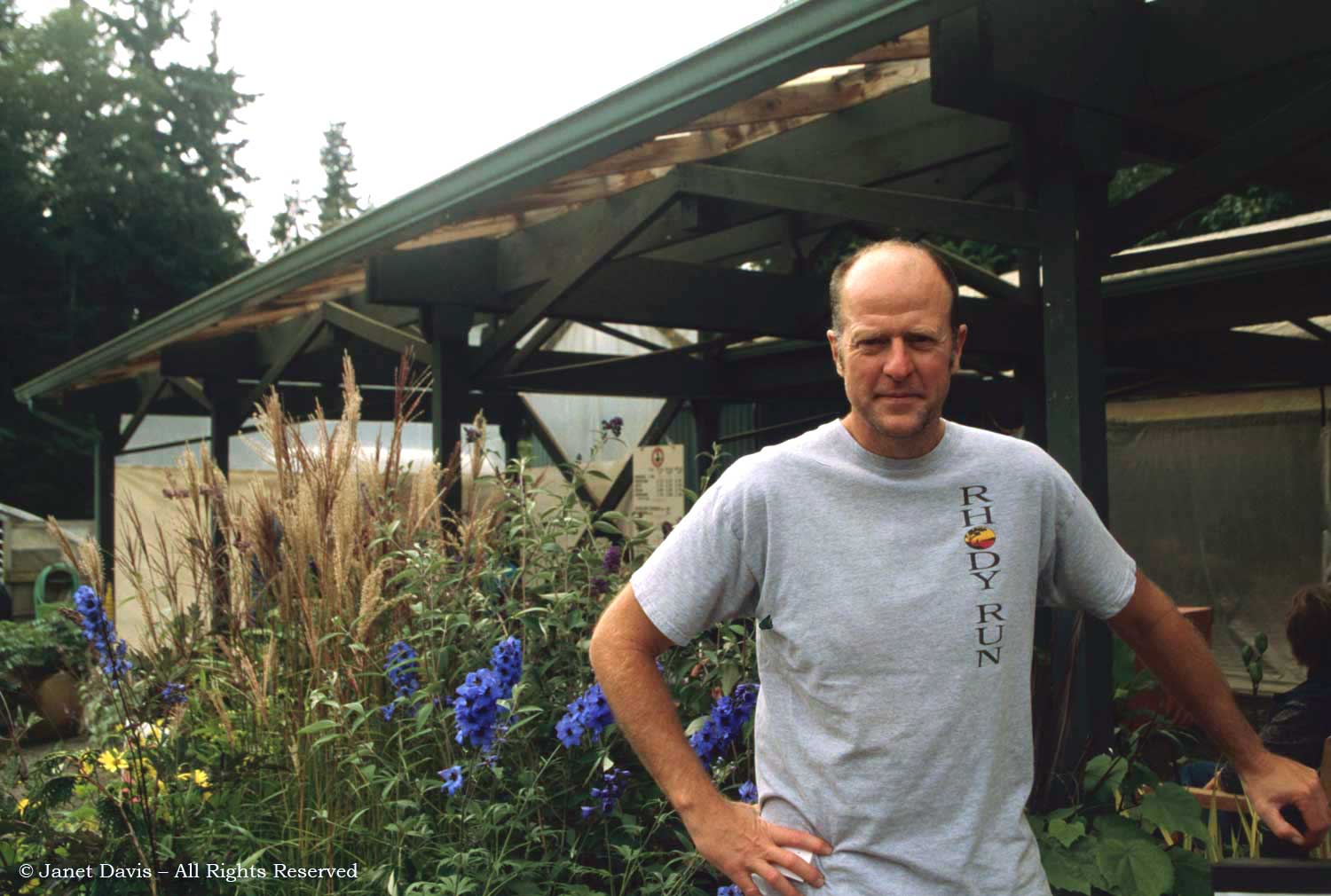
What happened nine months after my visit is well-known. In June 2006 Burpee boss George Ball, having discovered that plants that thrive in the Pacific rainforest do not necessarily grow in gardens in the Midwest, closed the nursery. The garden was kept minimally maintained and opened three days annually to visitors via the Garden Conservancy. In 2012 Burpee sold the garden and nursery for an undisclosed amount via a sealed bid to the local Port Gamble S’Klallam tribe, which continues to manage it today as the non-profit Heronswood Botanical Garden with Dan Hinkley as Director Emeritus. The Woodland Garden is as lush and beautiful in mid-summer as it ever was, so let’s take a walk through it to be begin our tour.
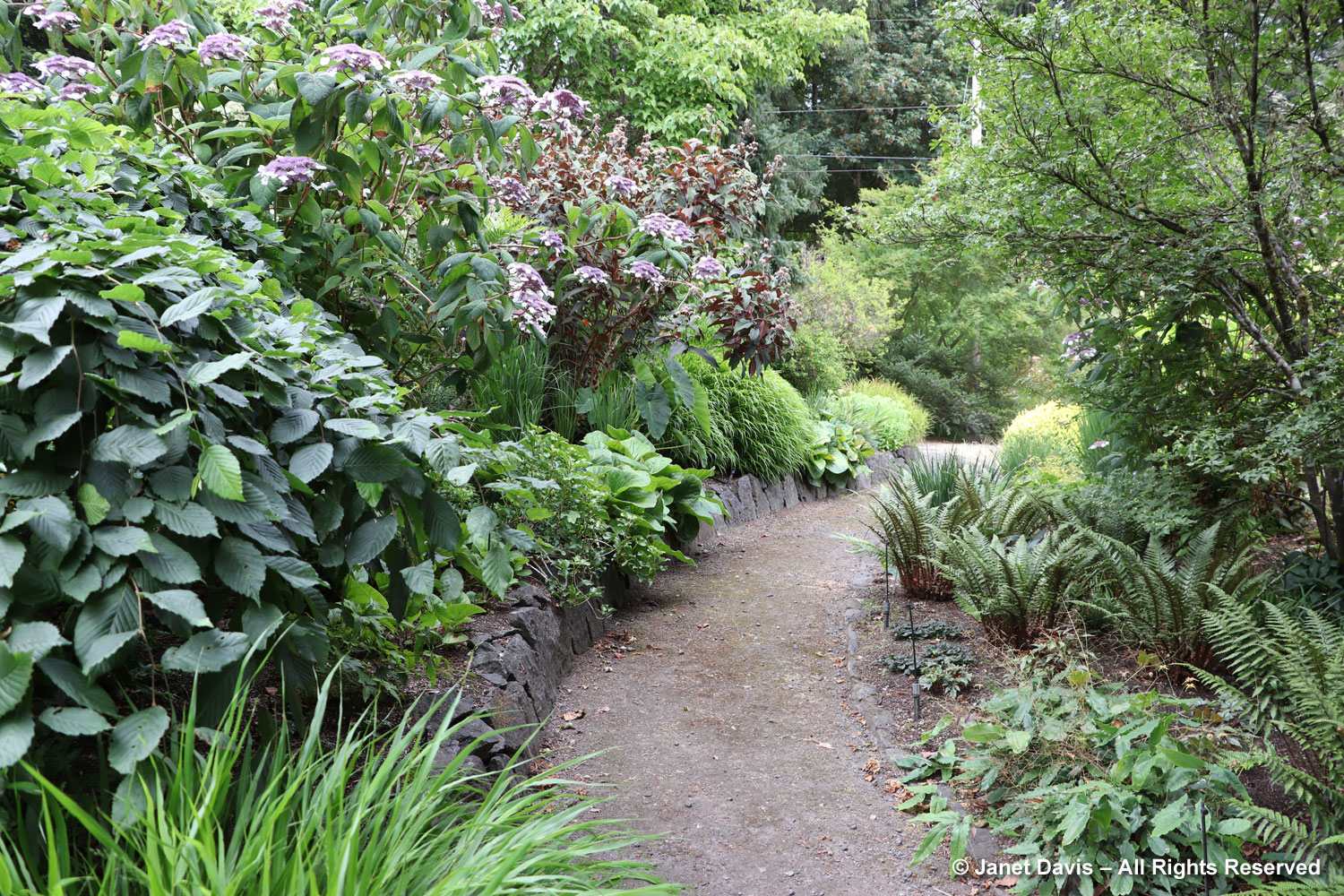
I like the big lacecap inflorescences of Hydrangea serrata ‘Macrophylla’, below, which taxonomically is an intriguing mashup of two species names.
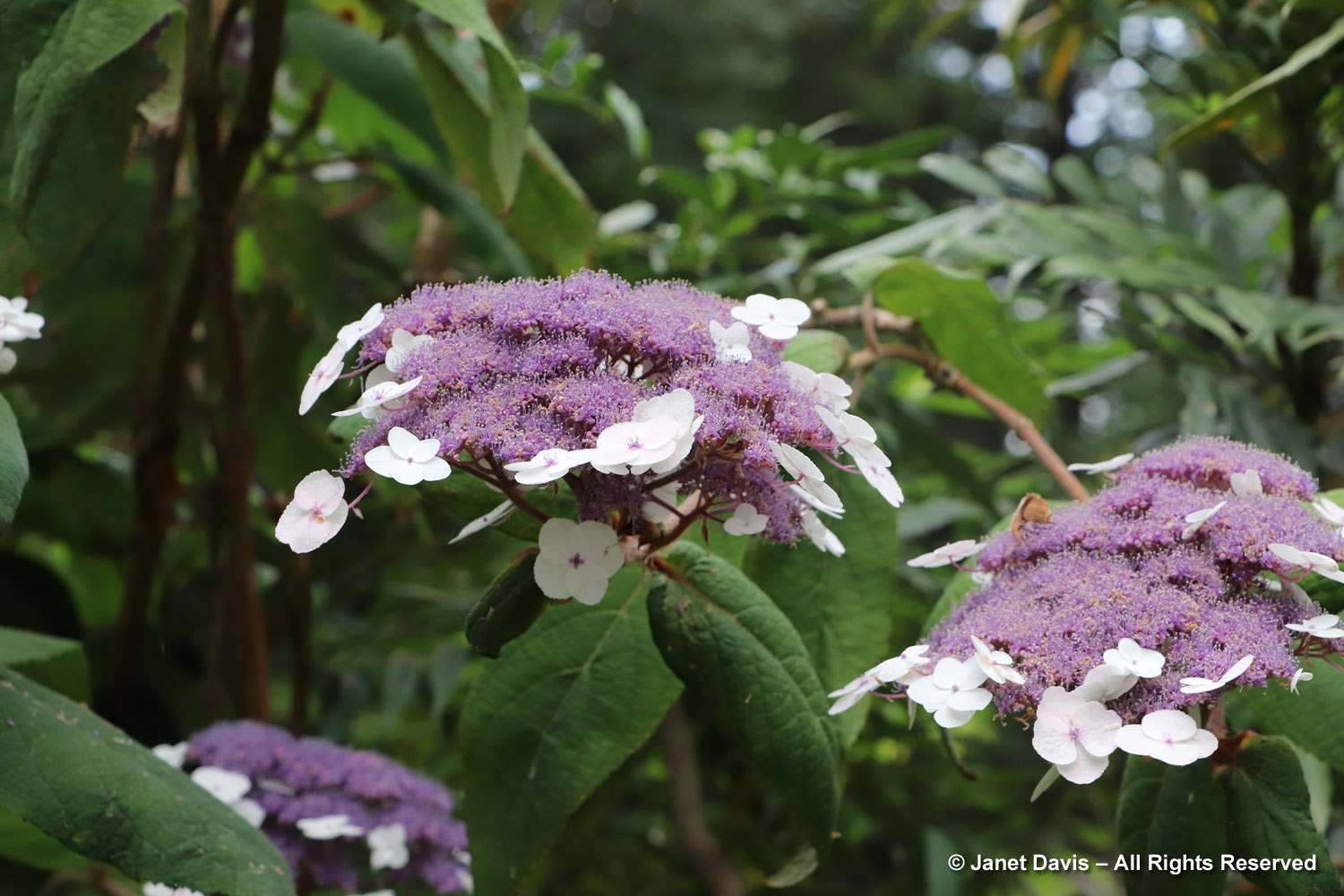
It feels humbling to walk through an old Pacific Northwest forest, with its towering Douglas firs and hemlocks. I note the giant Himalayan lily (Cardiocrinum giganteum) already forming seeds near the Japanese hydrangea vine (Schizophragma molle), right.
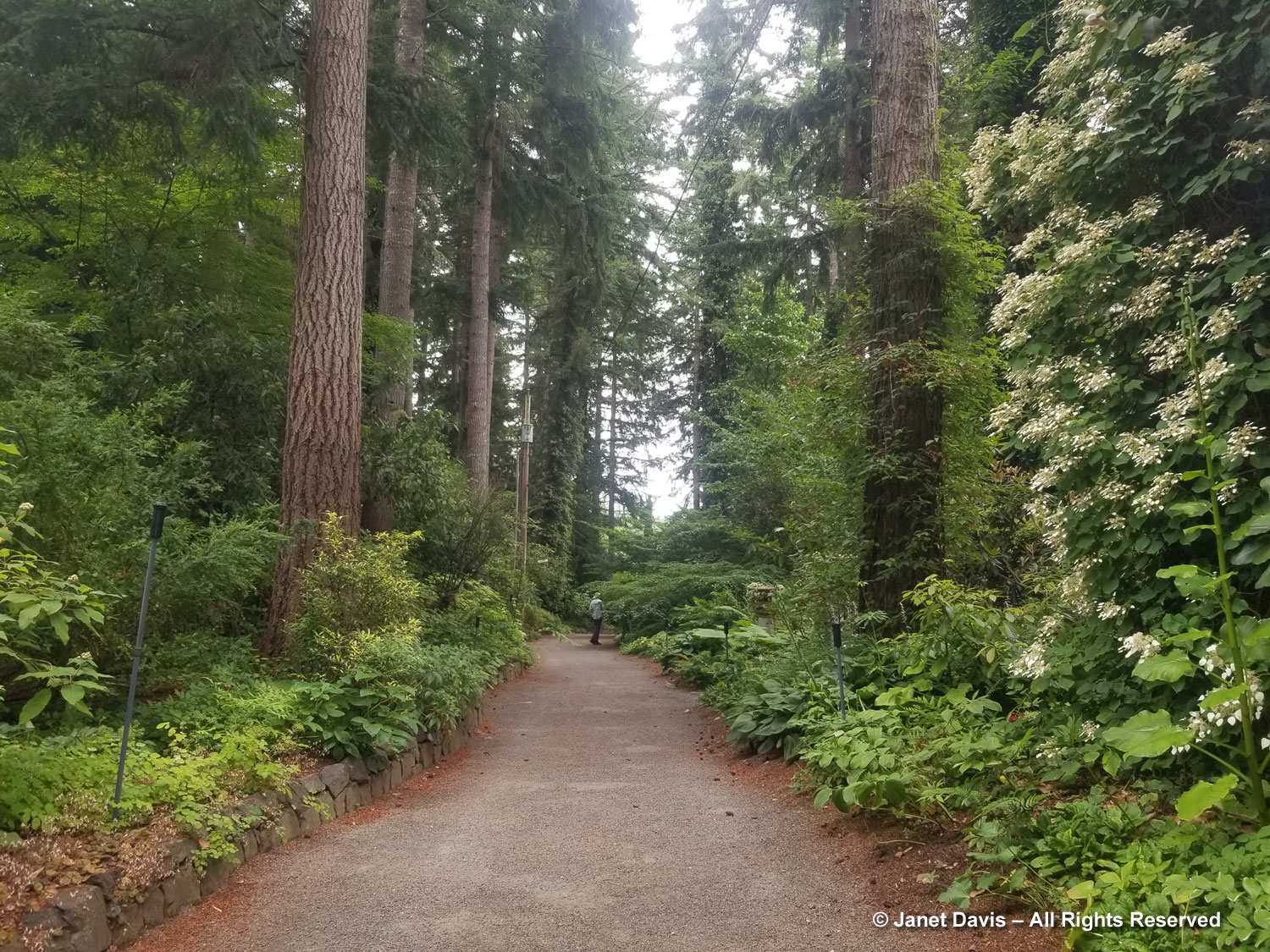
Schizophragma molle can reach up to 40 feet (12 metres) in height, climbing via aerial rootlets.
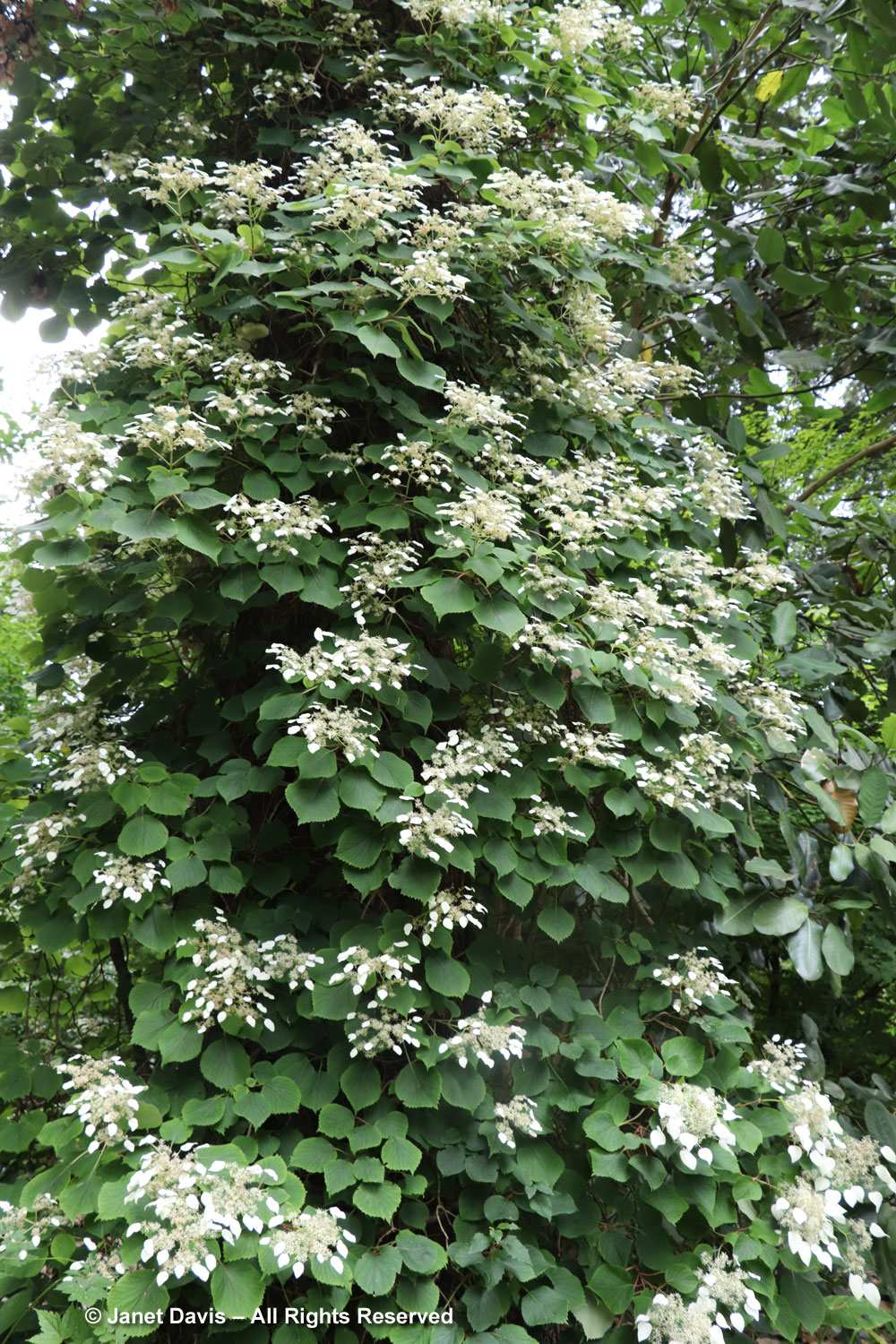
There is an impressive collection of hydrangeas and their kin in the Woodland Garden. This gold-variegated lacecap is H. serrata ‘O Amacha Nishiki).
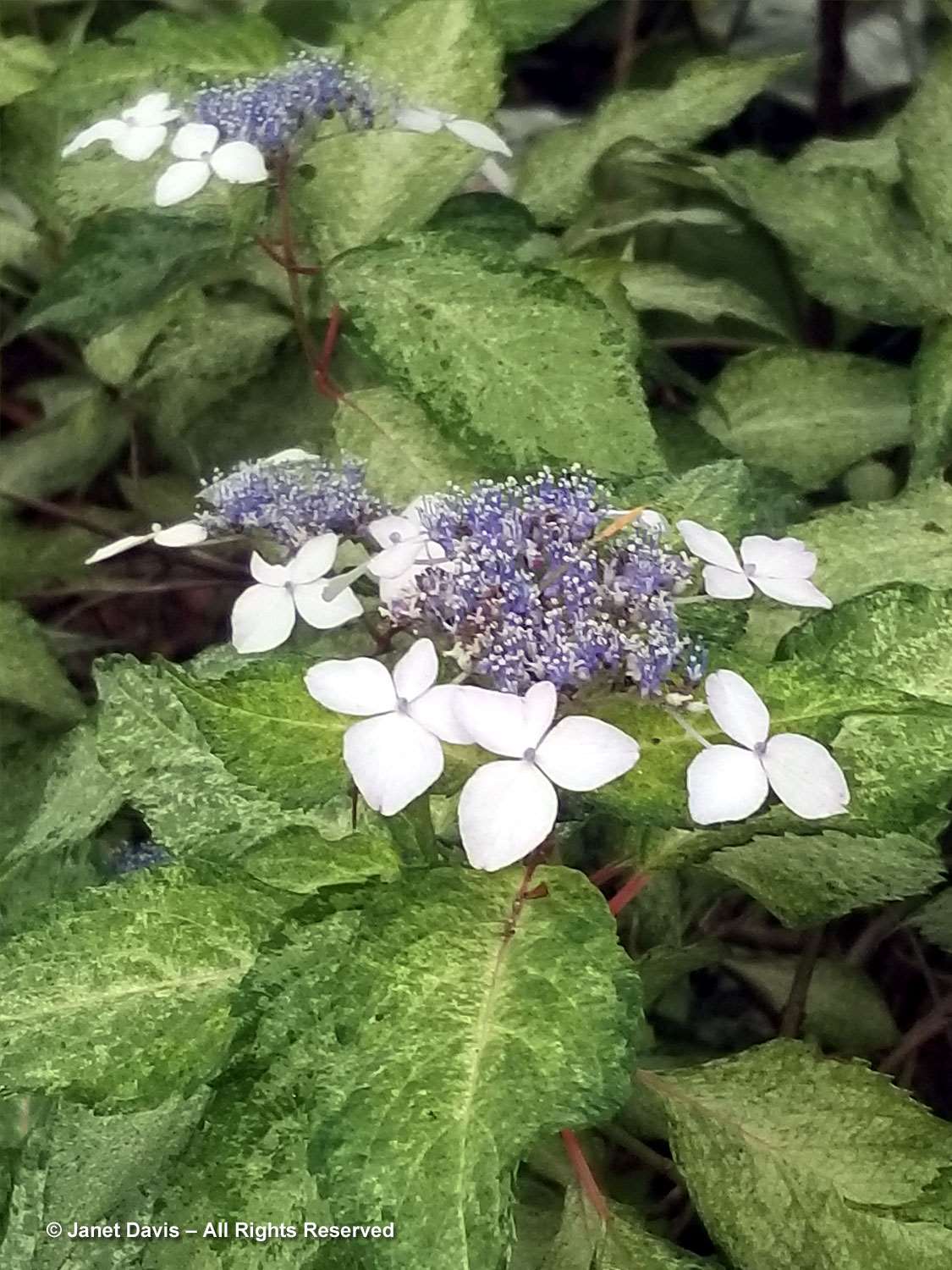
It takes me a while to figure out what plant is in fruit under the leaning Aruncus dioicus ‘Kneiffii’ here: Paris quadrifolia.
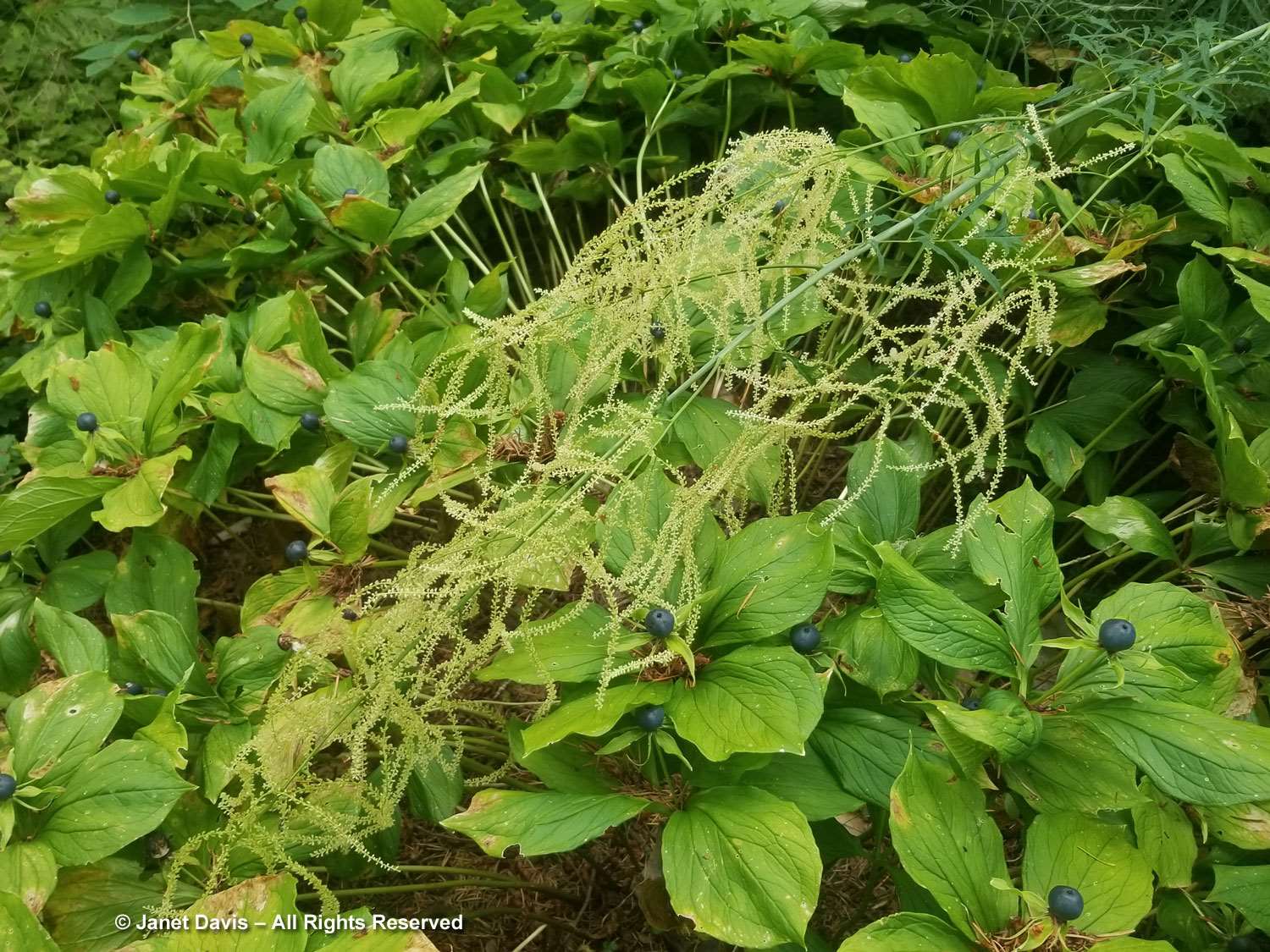
I stop to admire this trio of Little & Lewis pillars topped with pots of trailing ivy.
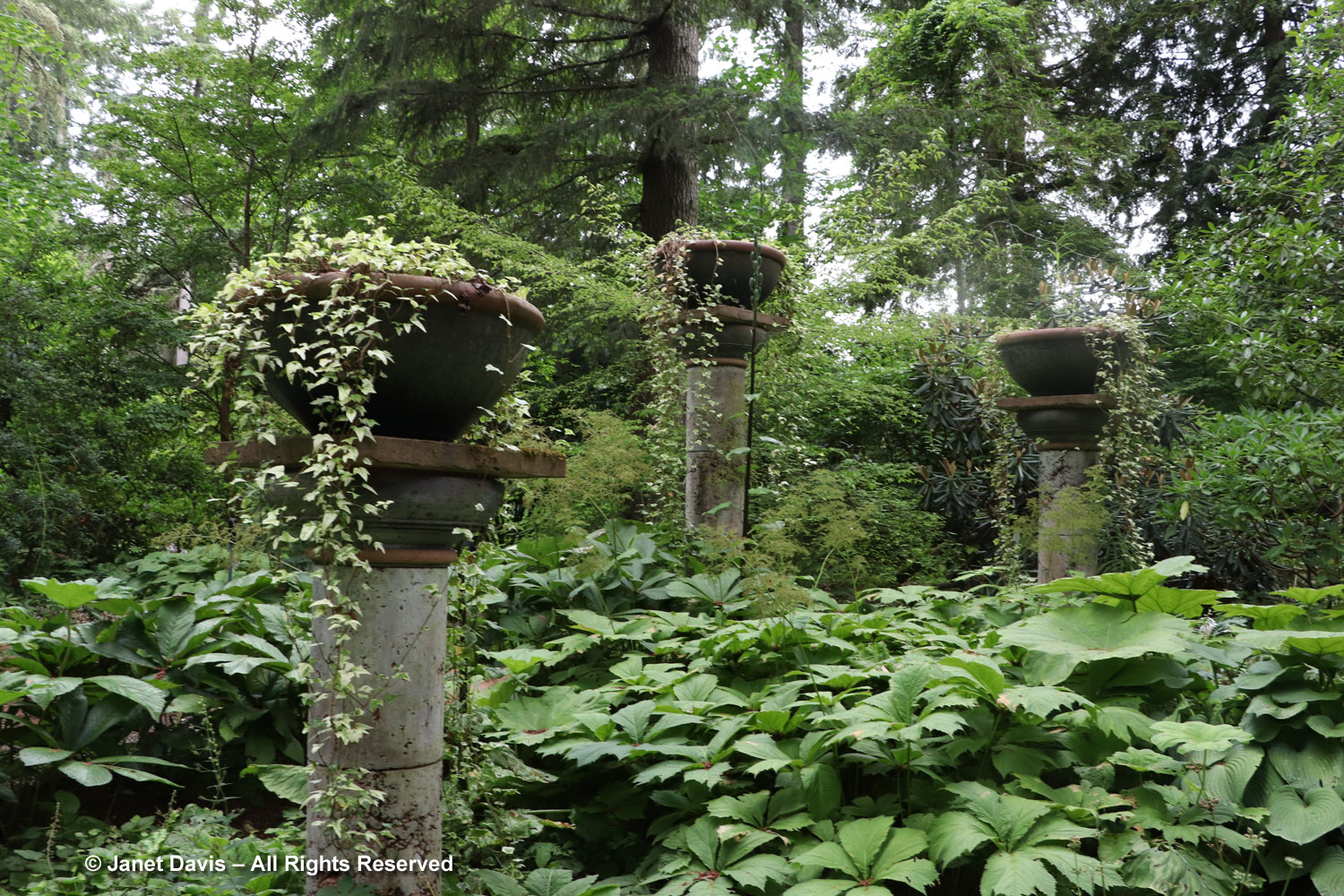
Another beautiful hydrangea, H. macrophylla f. normalis ‘Veitchii’, bred by the English nursery of the same name in the early 1900s.
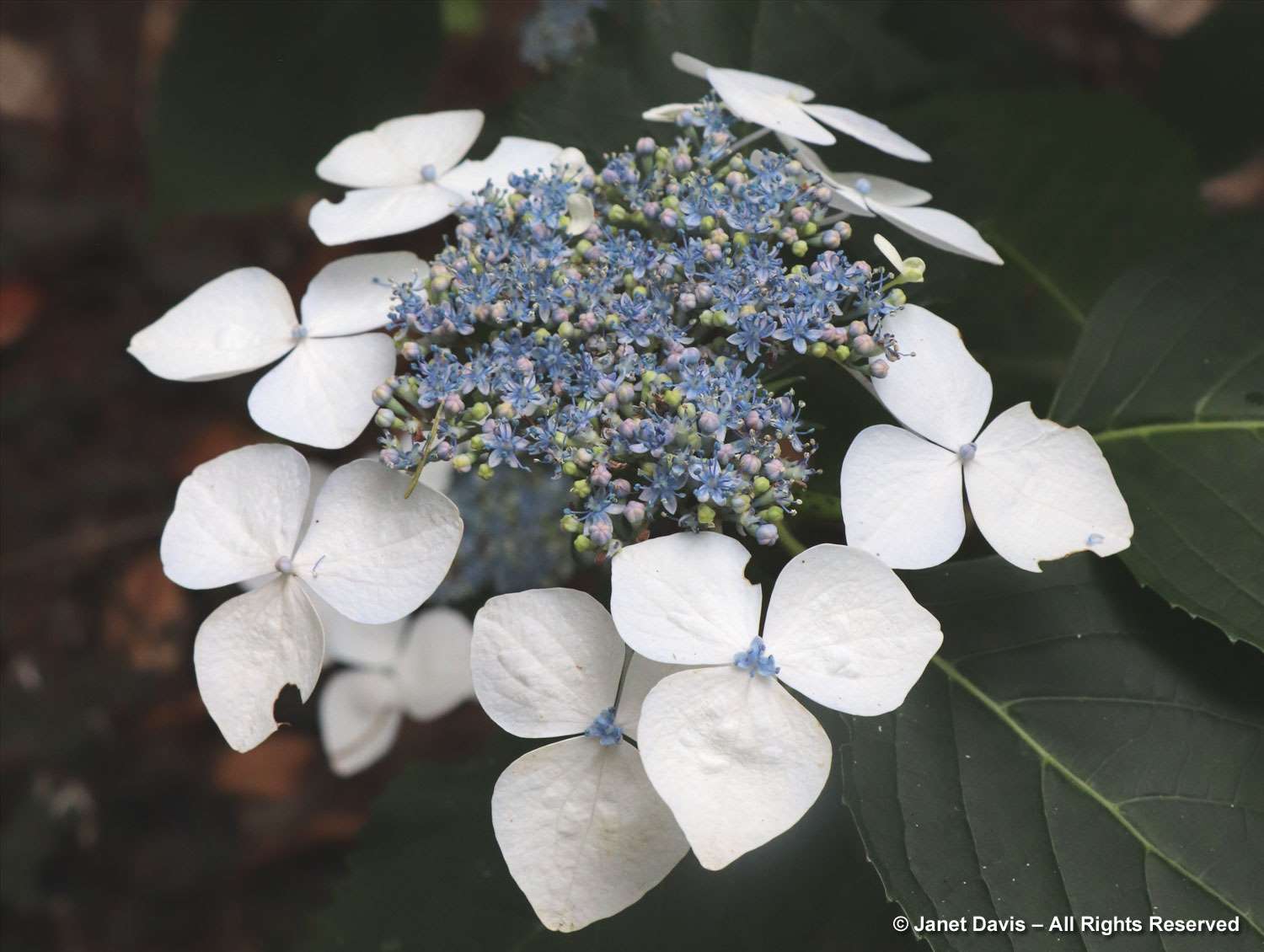
Lovely Anemenopsis macrophylla ‘White Swan’ is a new one for me (and if my knees were better I might have knelt to photograph it from below…..)
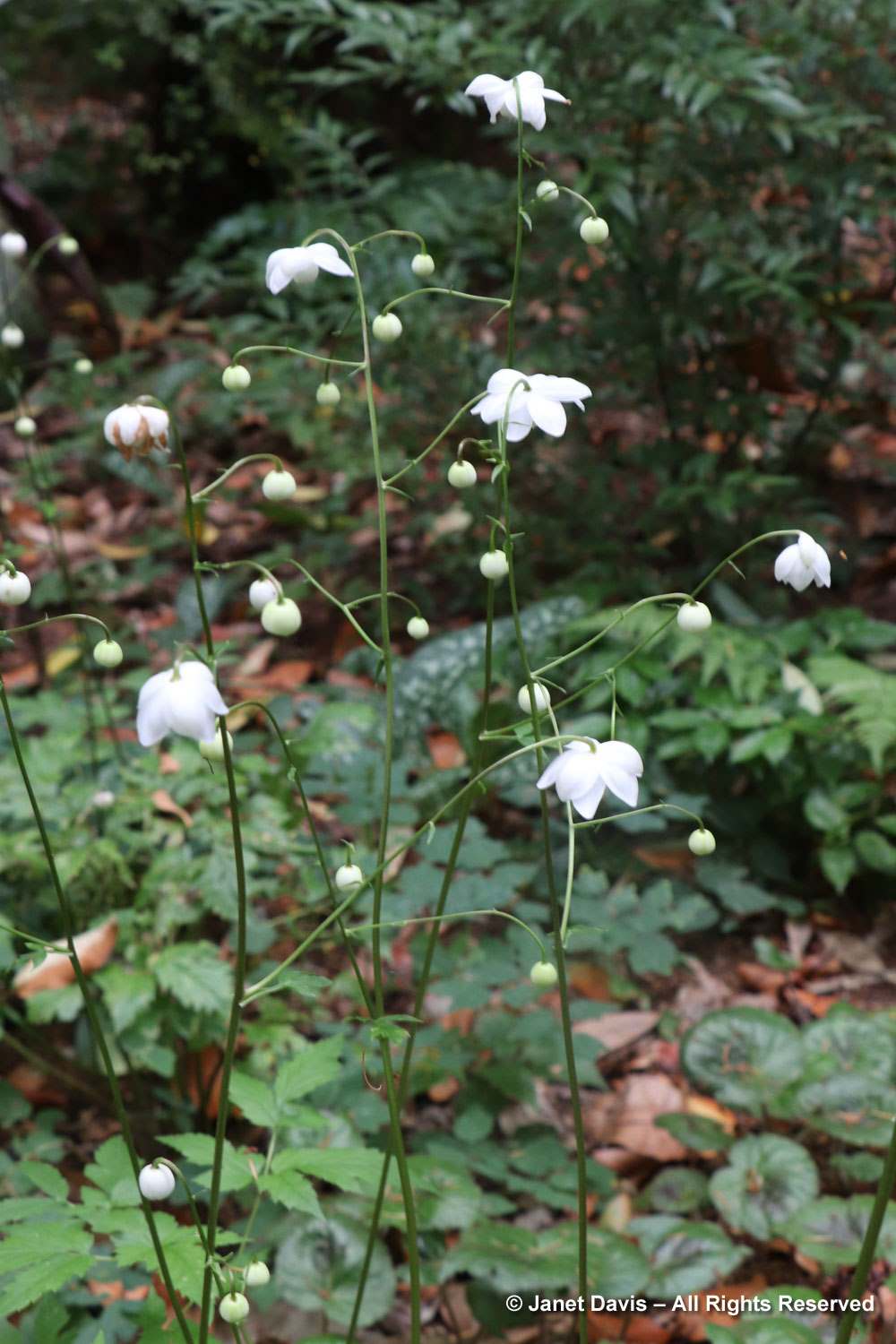
The juxtaposition of the big trees and the shade-loving hydrangeas and other woodlanders is inspiring for gardeners who complain about shade limiting their choices.
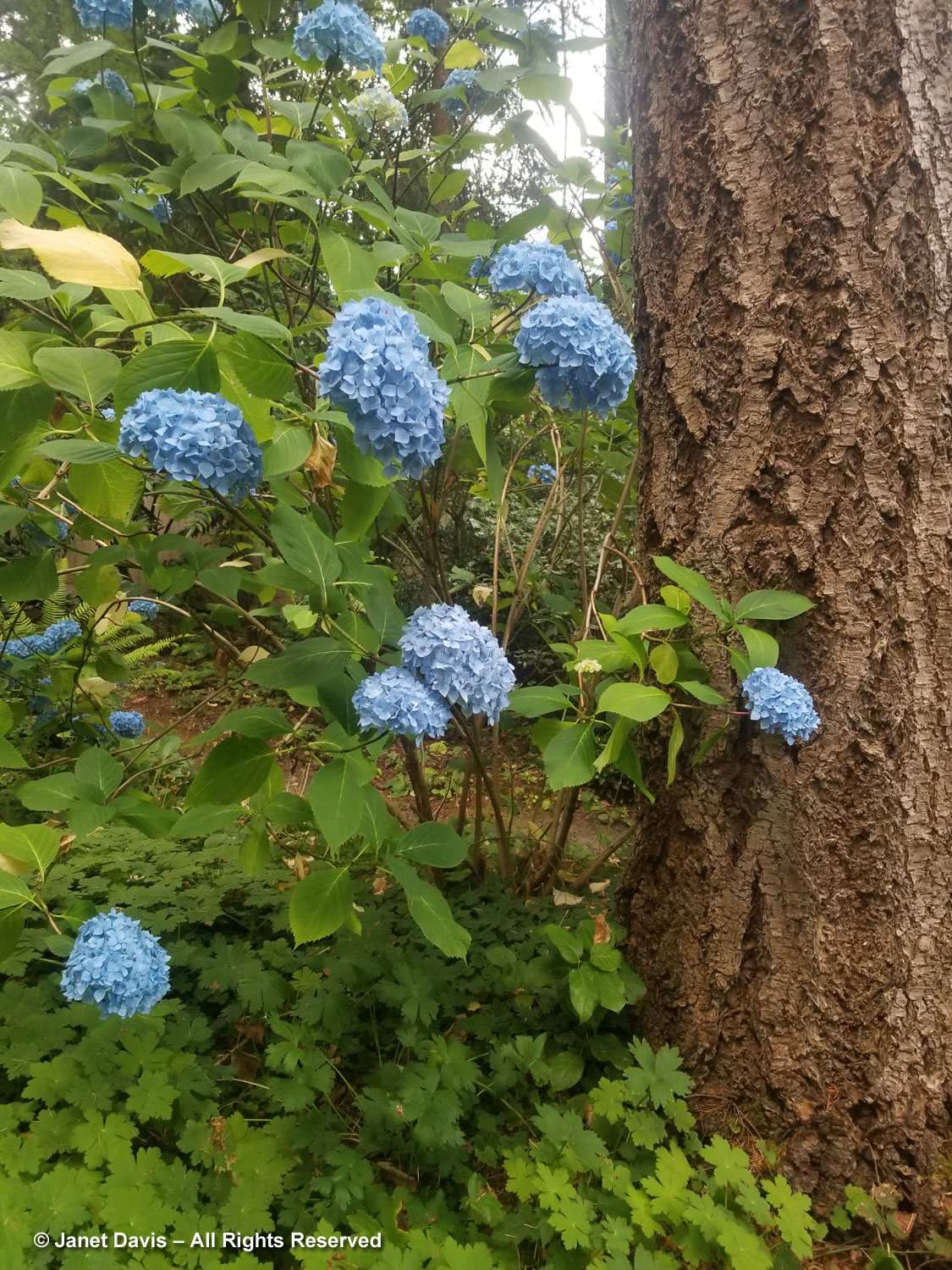
A thalictrum bends gracefully over other leaning plants.
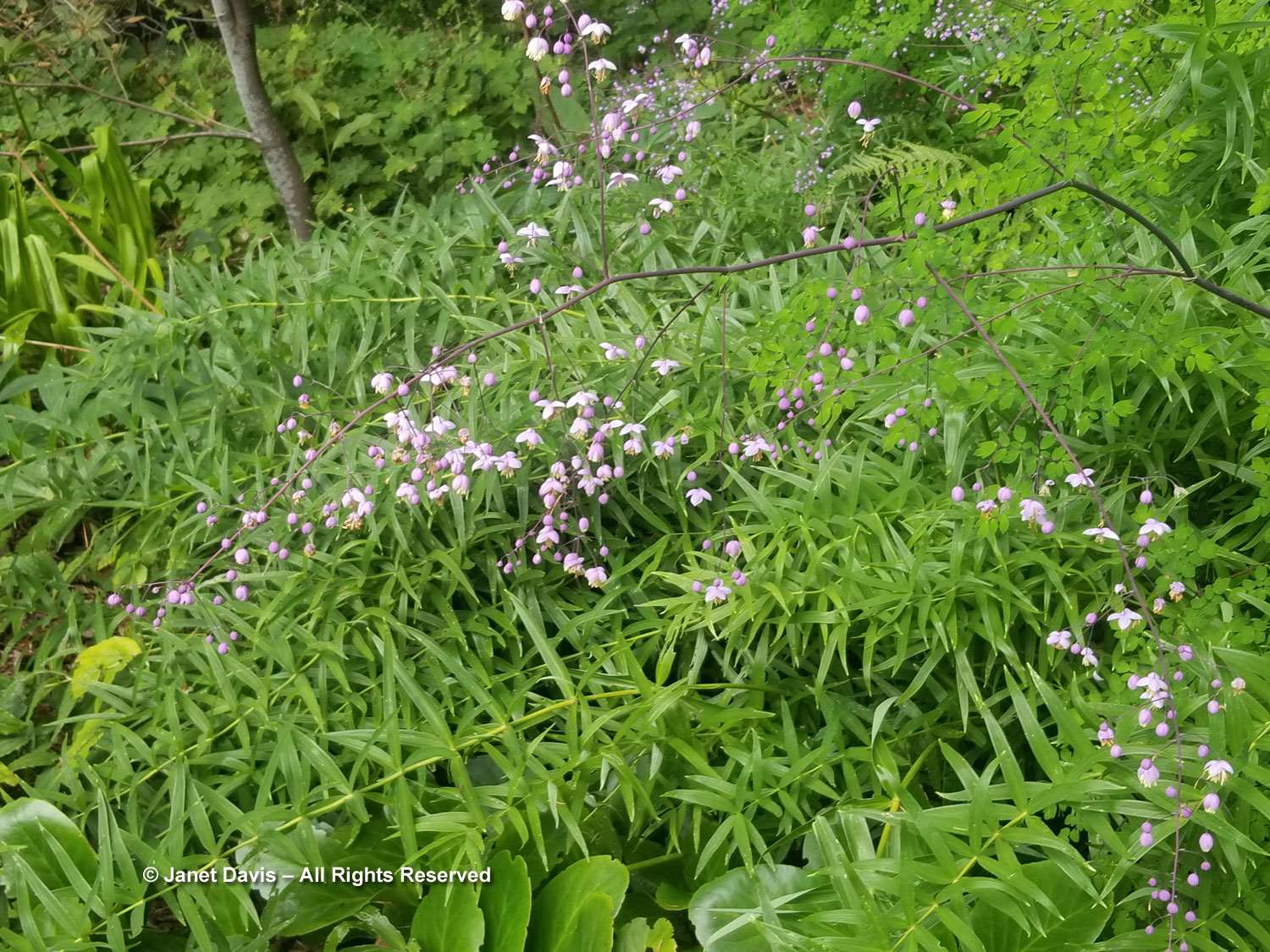
Then it’s into the Formal Gardens via the iconic Arched Hornbeam Hedge, sculpted from Carpinus betulus ‘Fastigiata’.
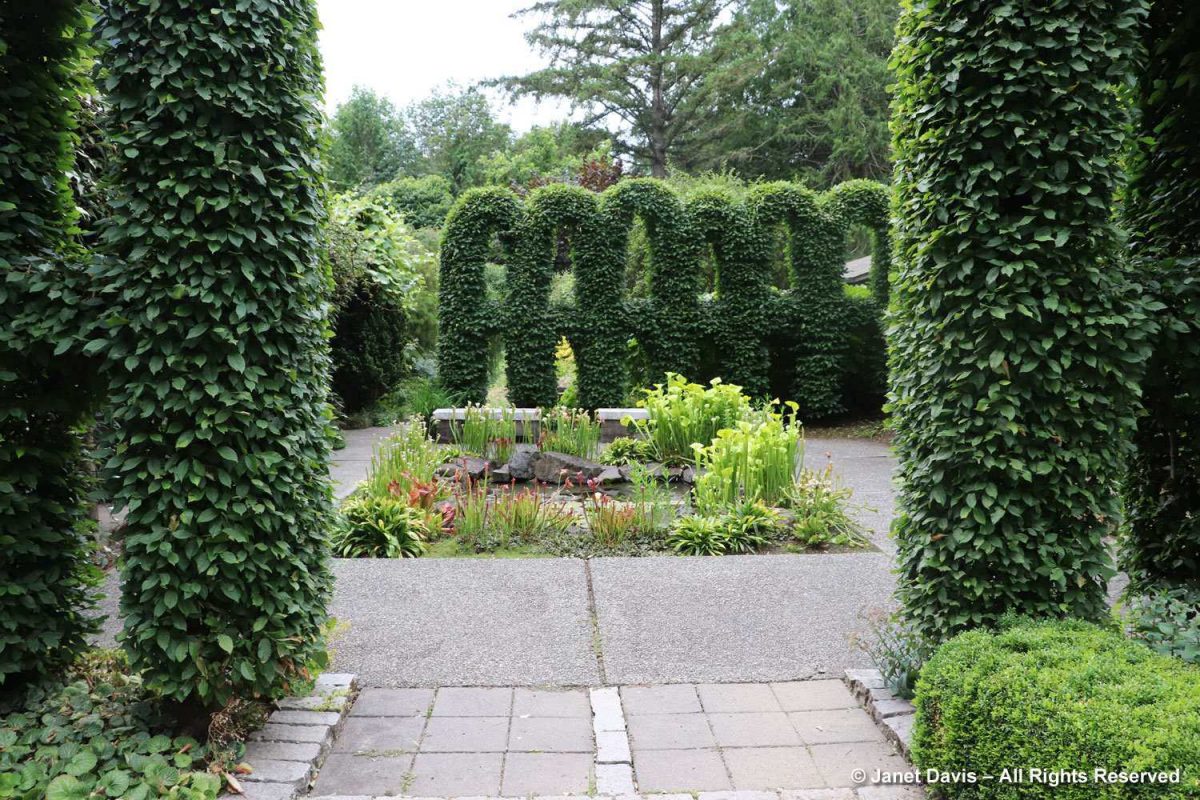
This is one of the original Heronswood gardens and it looks as beautiful today as when I saw it in 2005.
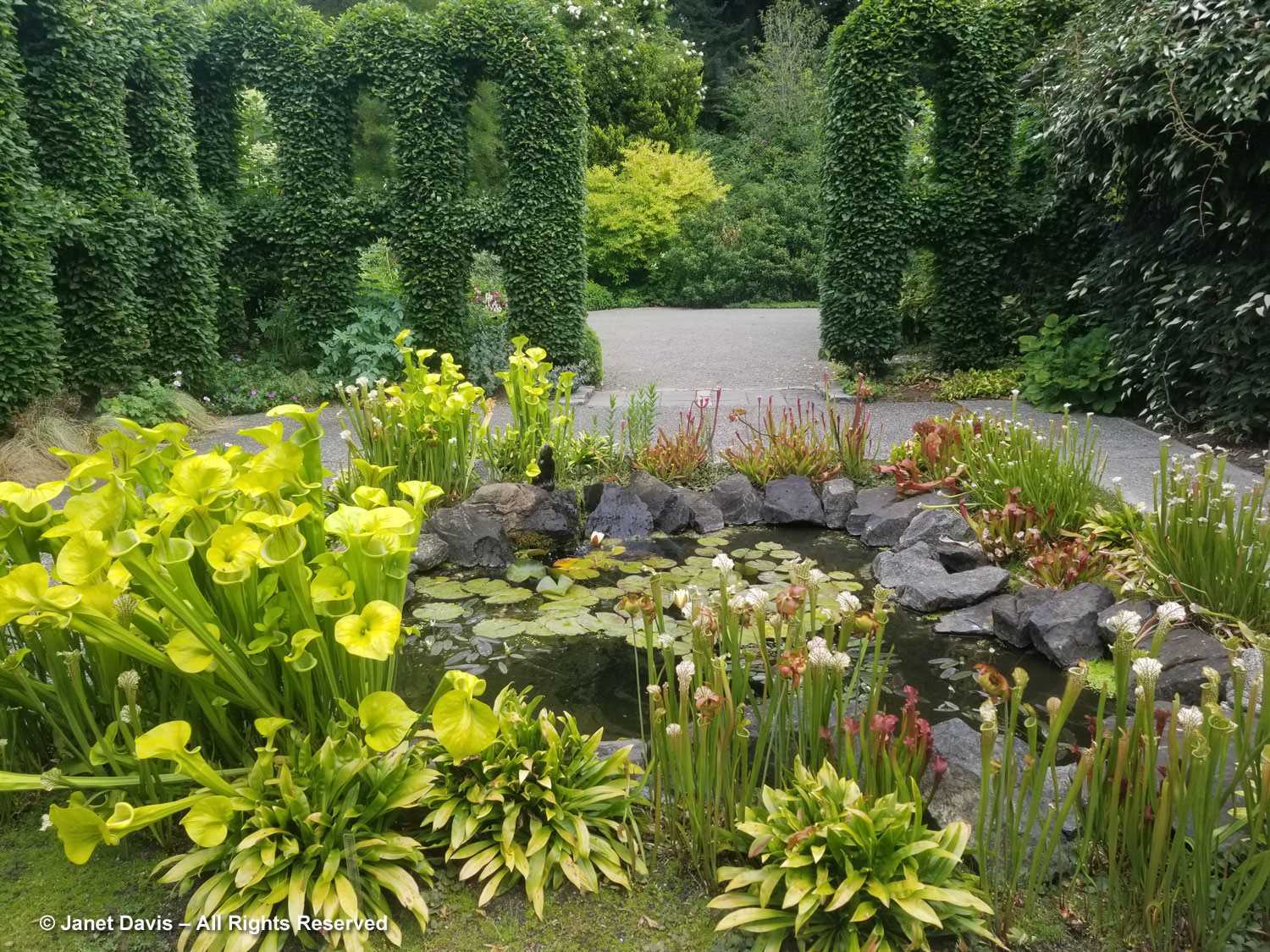
It surrounds a lily pool edged with carnivorous pitcher plants (Sarracenia spp). Stone benches offer a place to sit and reflect.
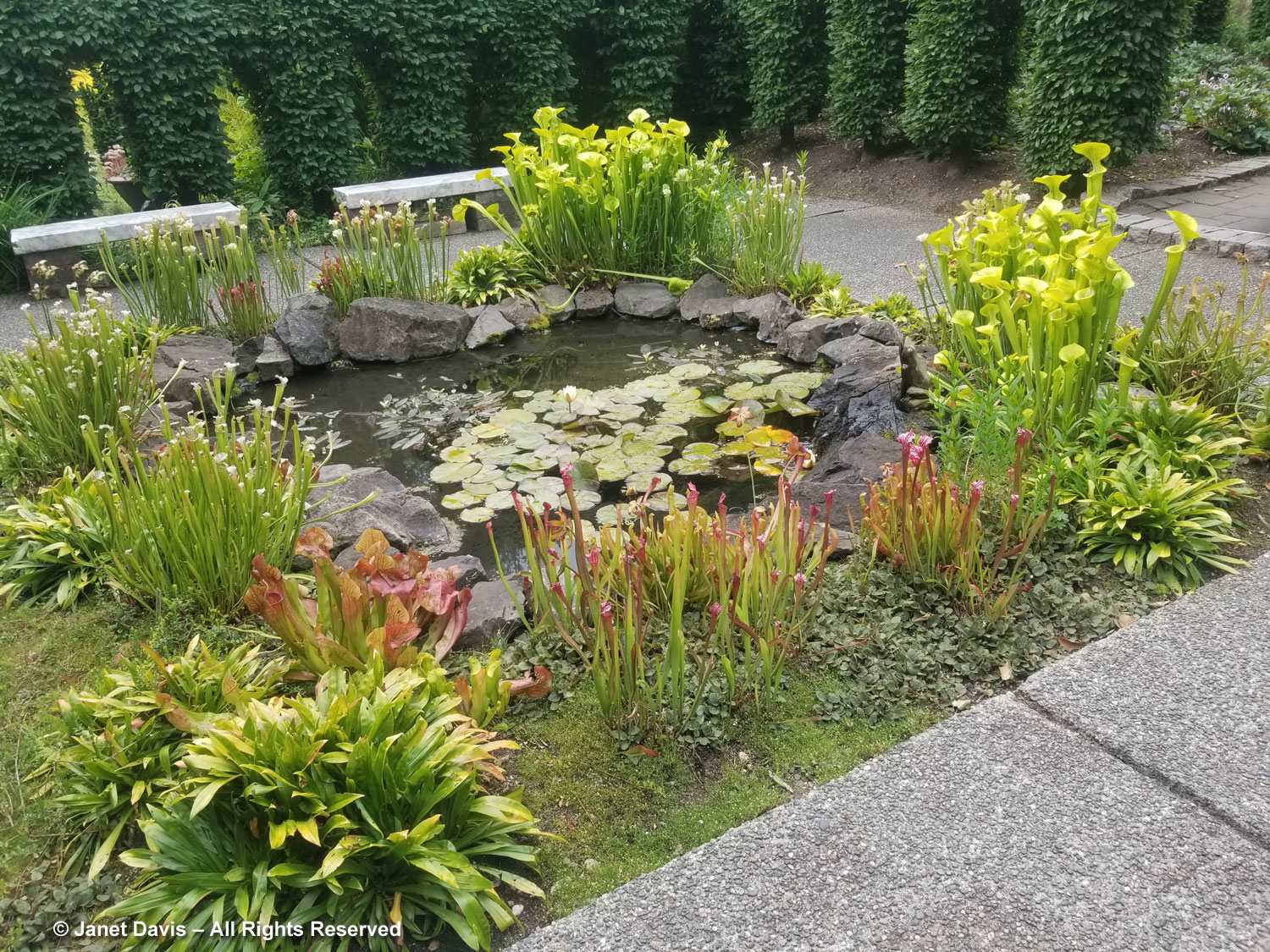
The far side of the Hornbeam Hedge garden is adjacent to the Formal Potager.
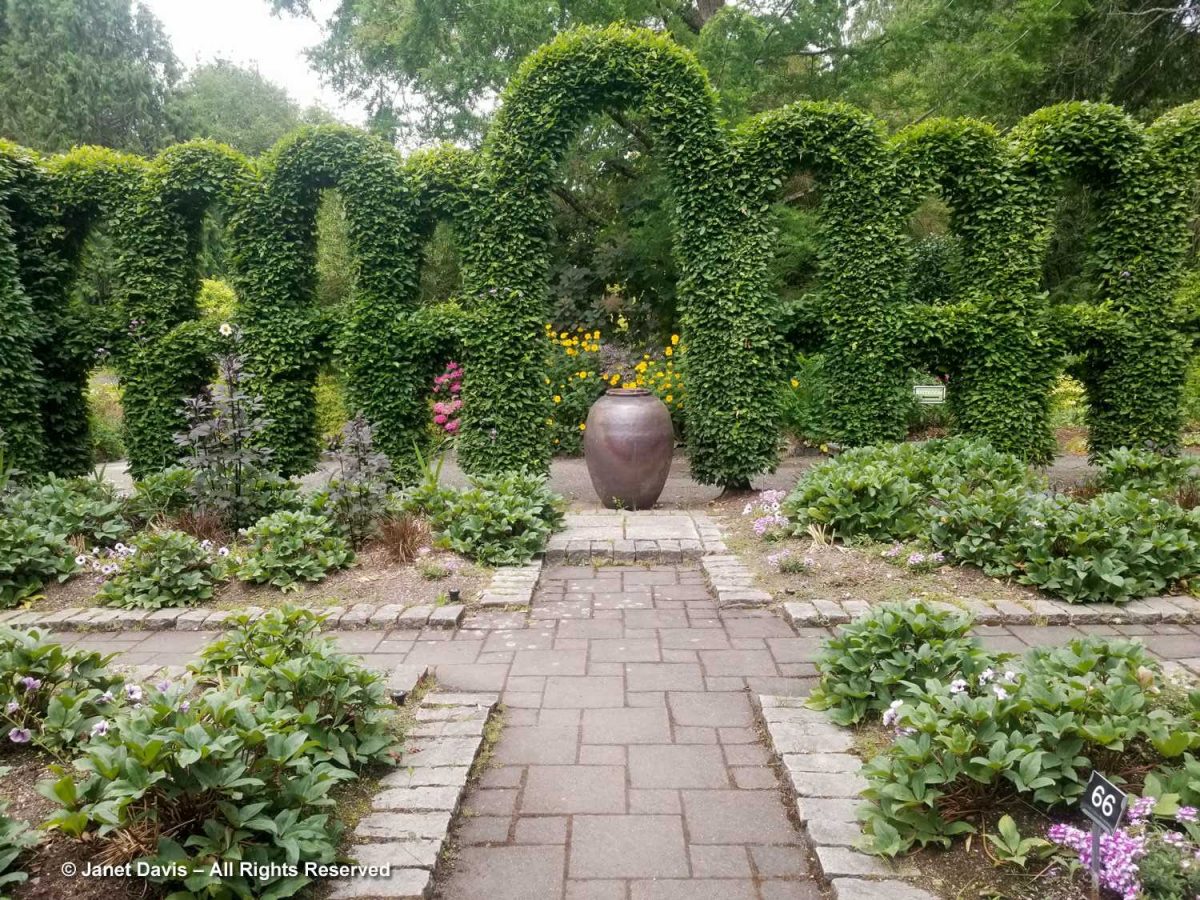
When I was here 19 years ago, the Potager Garden was filled with vegetables.
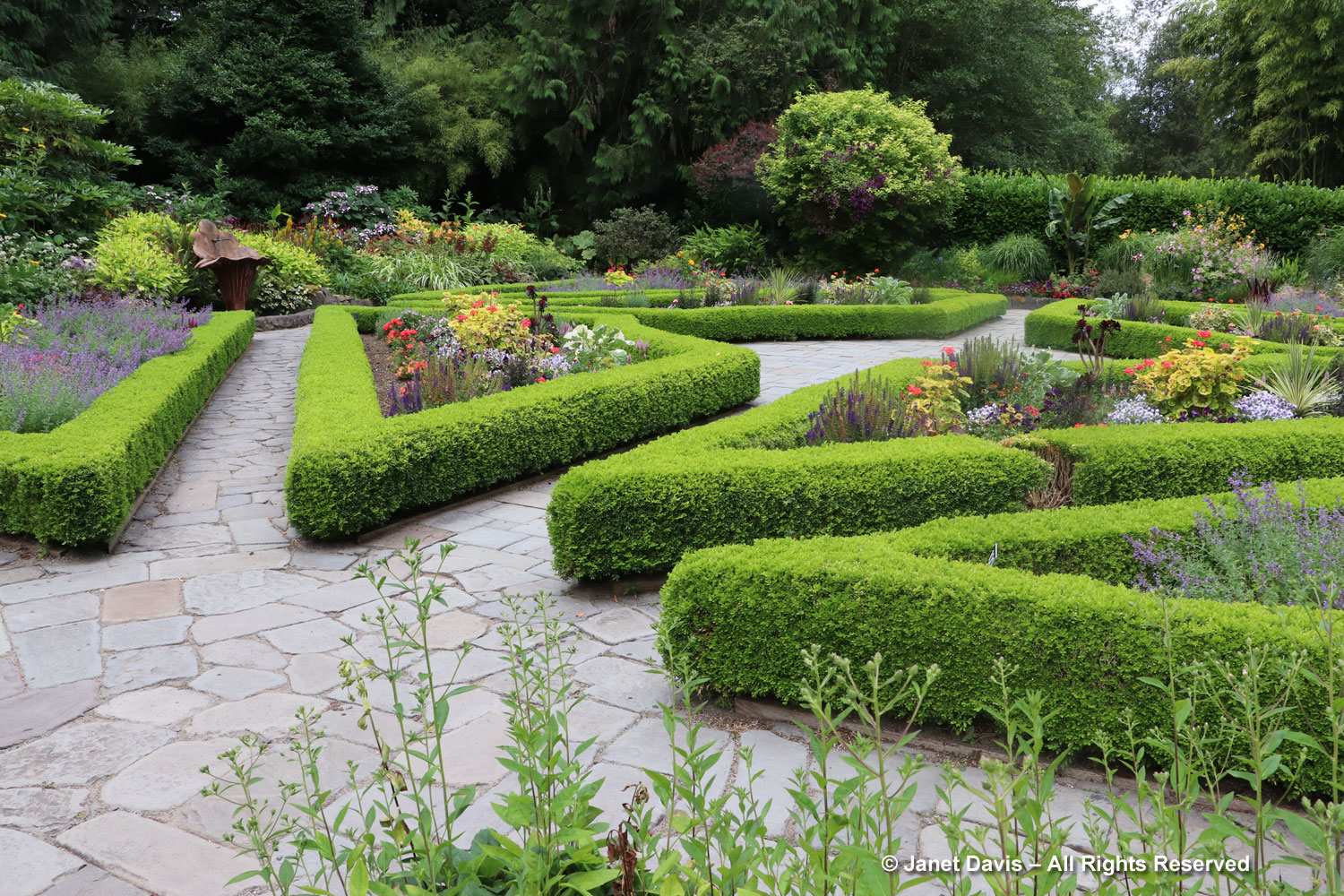
Today, a combination of annuals and perennials fill the box-lined spaces.
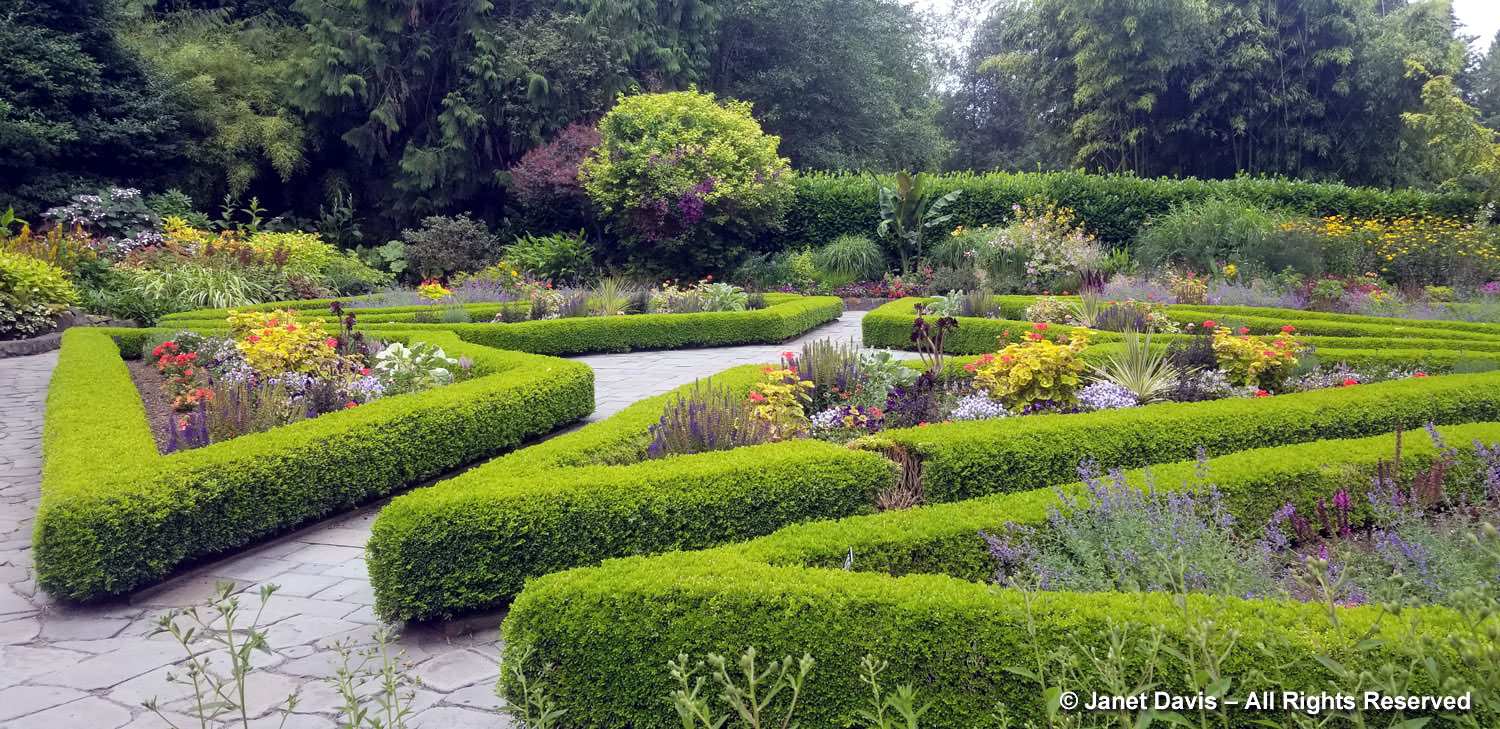
This is my favourite view because the axis leads to the fountain focal point.
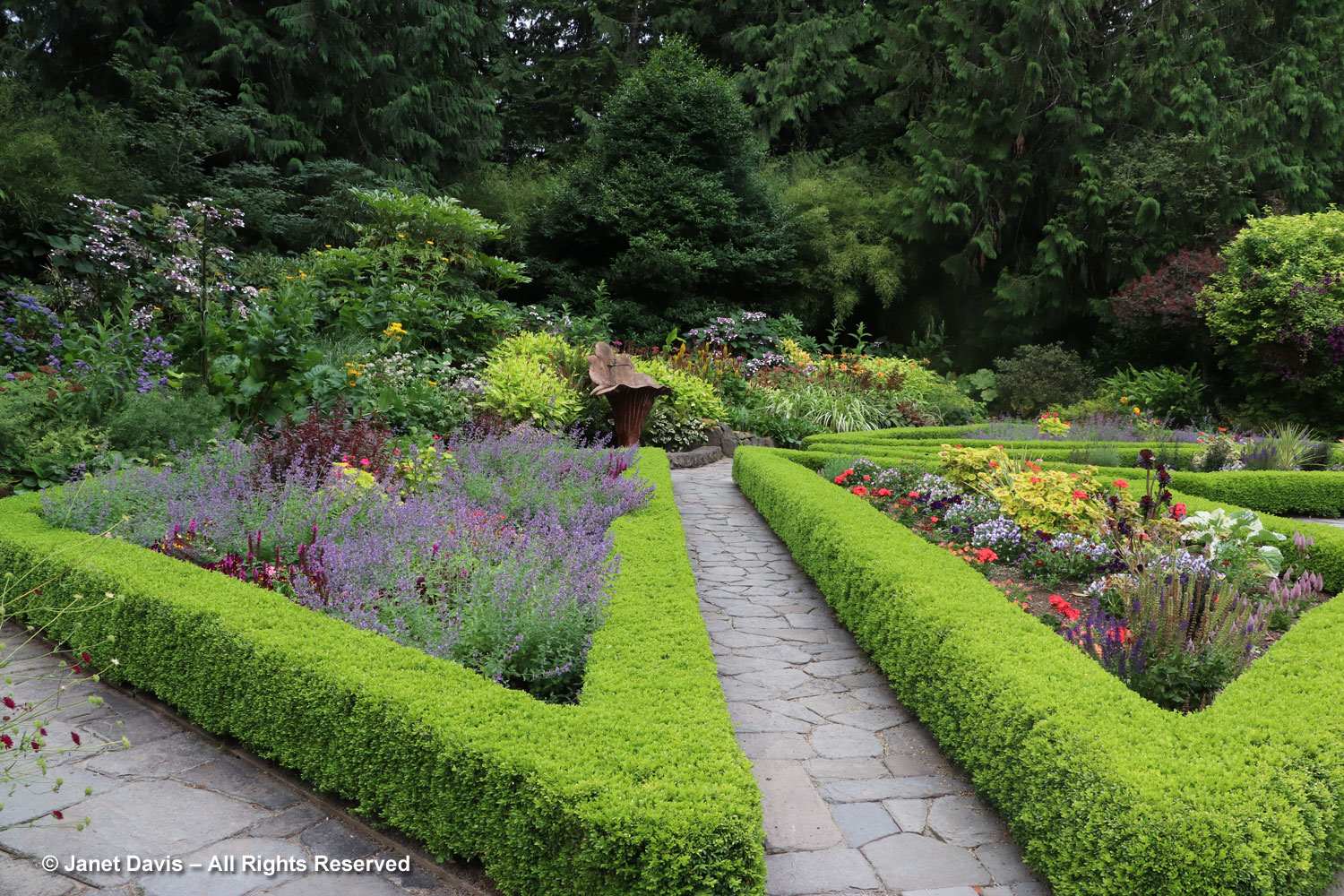
It is filled with Nepeta racemosa ‘Walker’s Low’, a popular catmint.
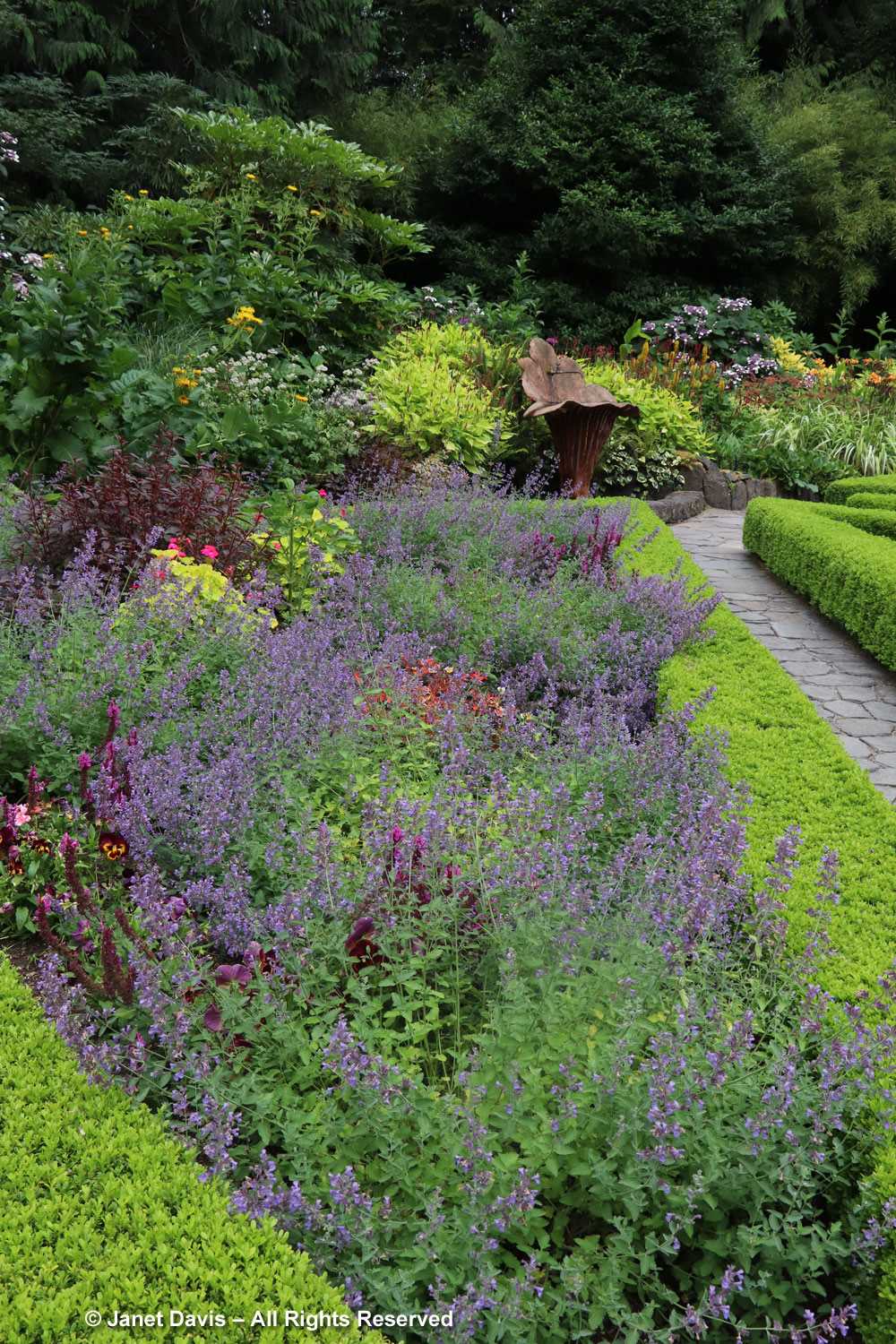
I recall this whimsical Little & Lewis chanterelle sink fountain from my first visit here. It’s surrounded by a brilliant chartreuse planting of Persicaria amplexicaulis ‘Golden Arrow.
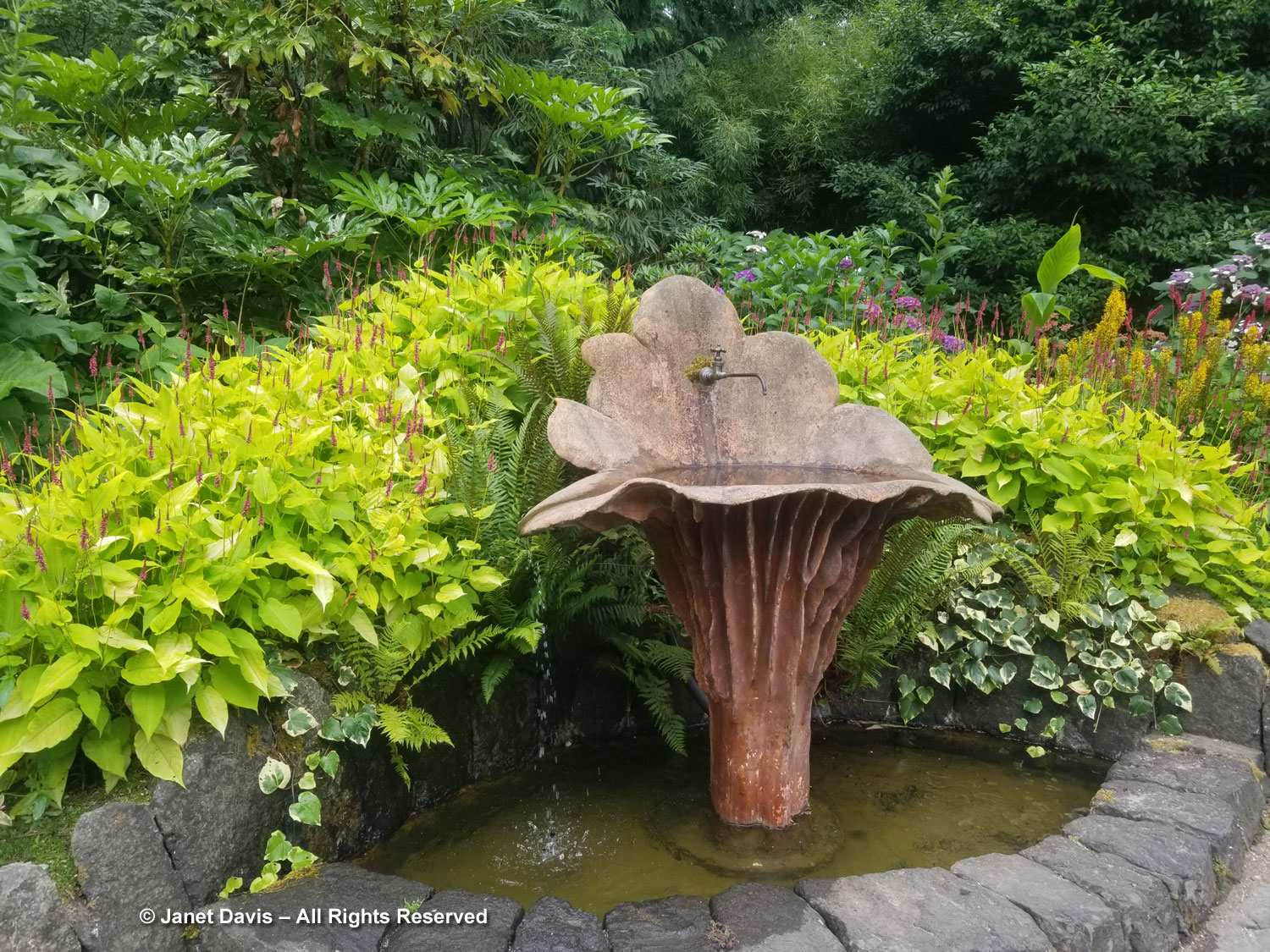
Flower beds line the outer paths in the Potager and feature lovely combinations, like this Ligularia przewalskii with Persicaria amplexicaulis ‘Firetail’.
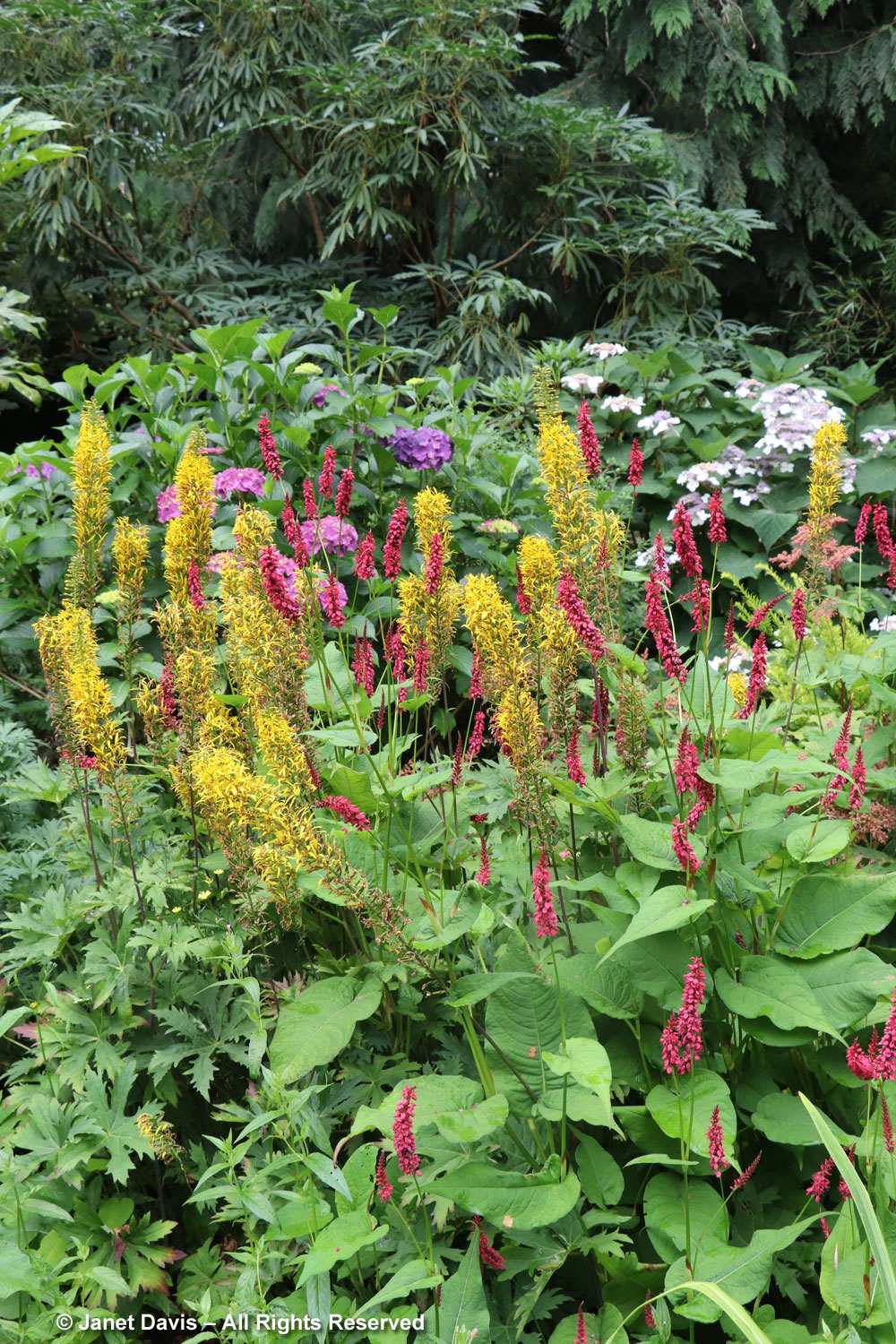
I realize in looking closer that every stem of the wine-leaved plant has been cut. Is this a Chelsea chop to keep it smaller and bushier? Or does Heronswood have plant-pruning deer like I do?
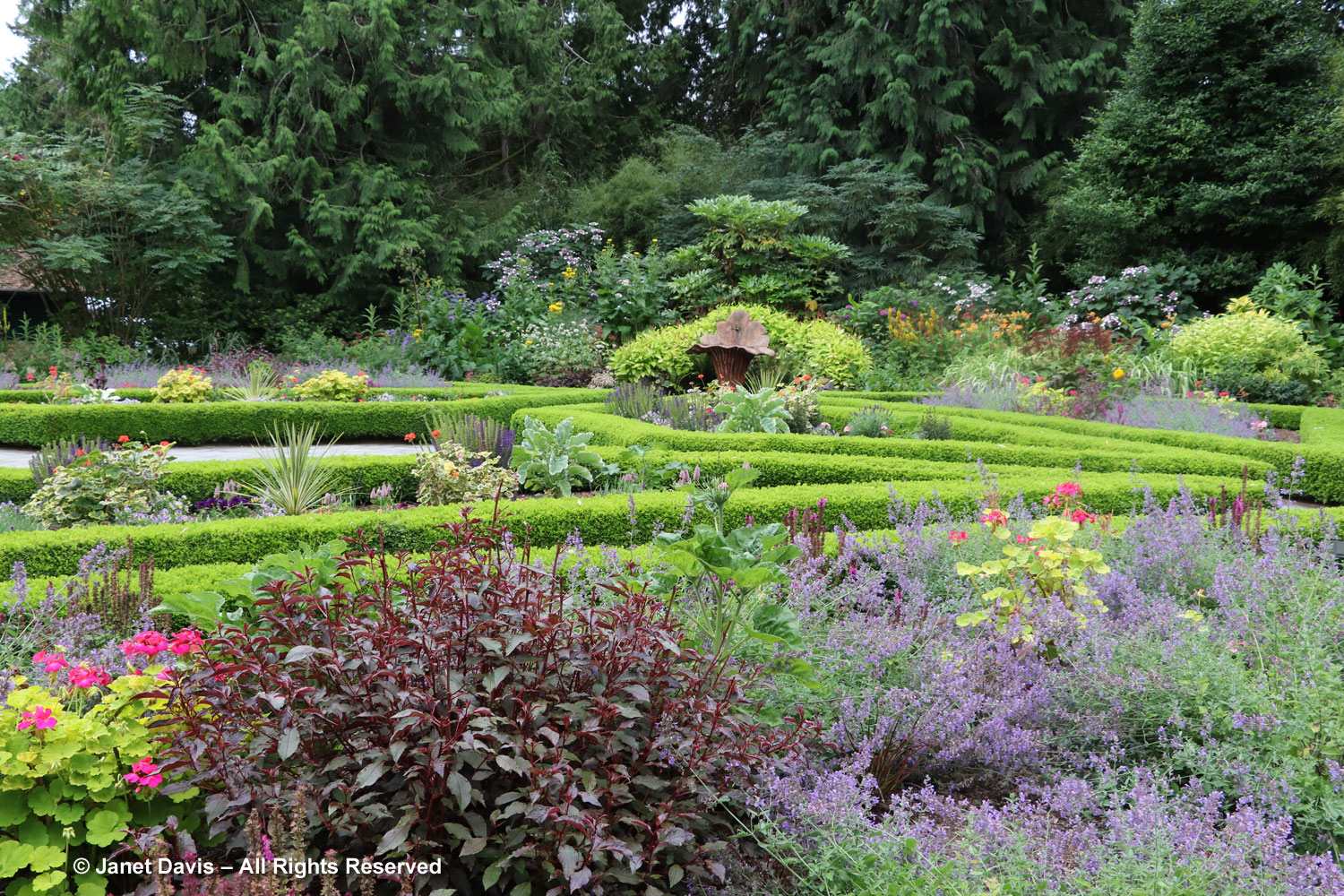
A beautiful mix in one of the perimeter borders includes a cloud of bronze fennel.
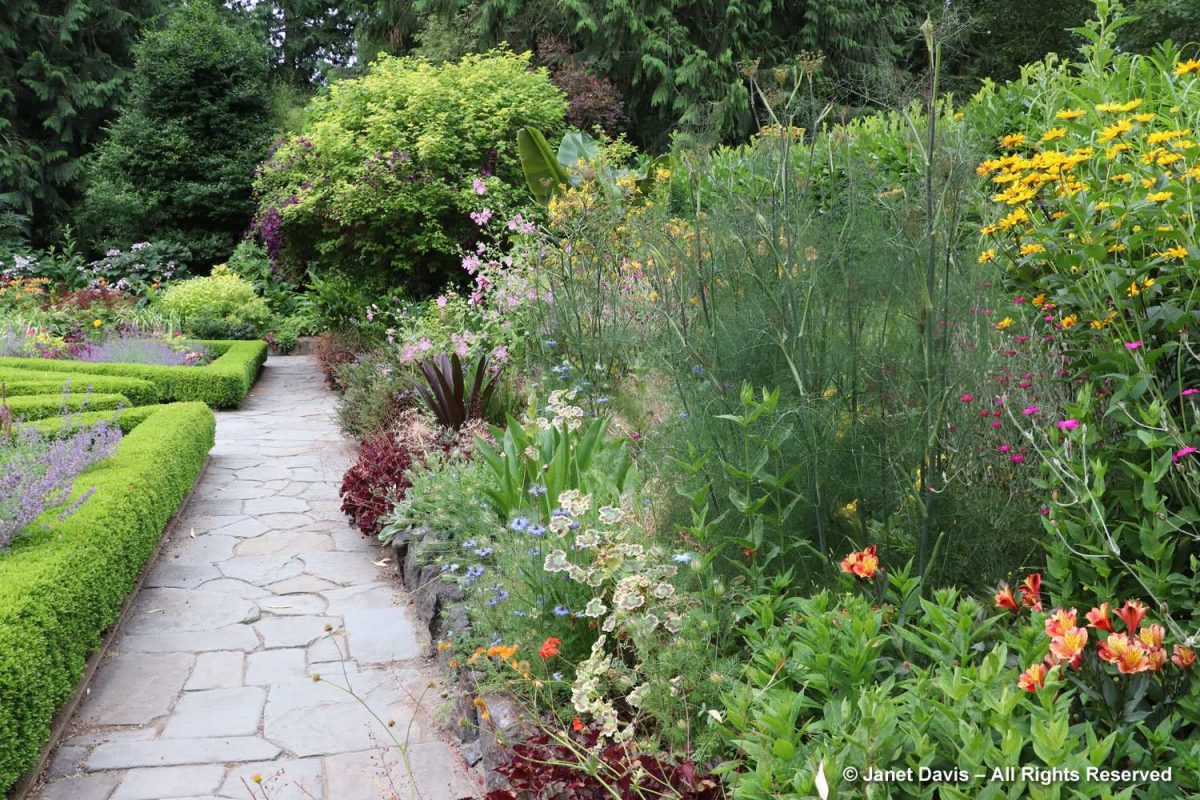
The luscious Orienpet hybrid lily ‘Silk Road’ consorts nicely with yellow Hypericum x inodorum ‘Ysella’ and a malva of some sort.
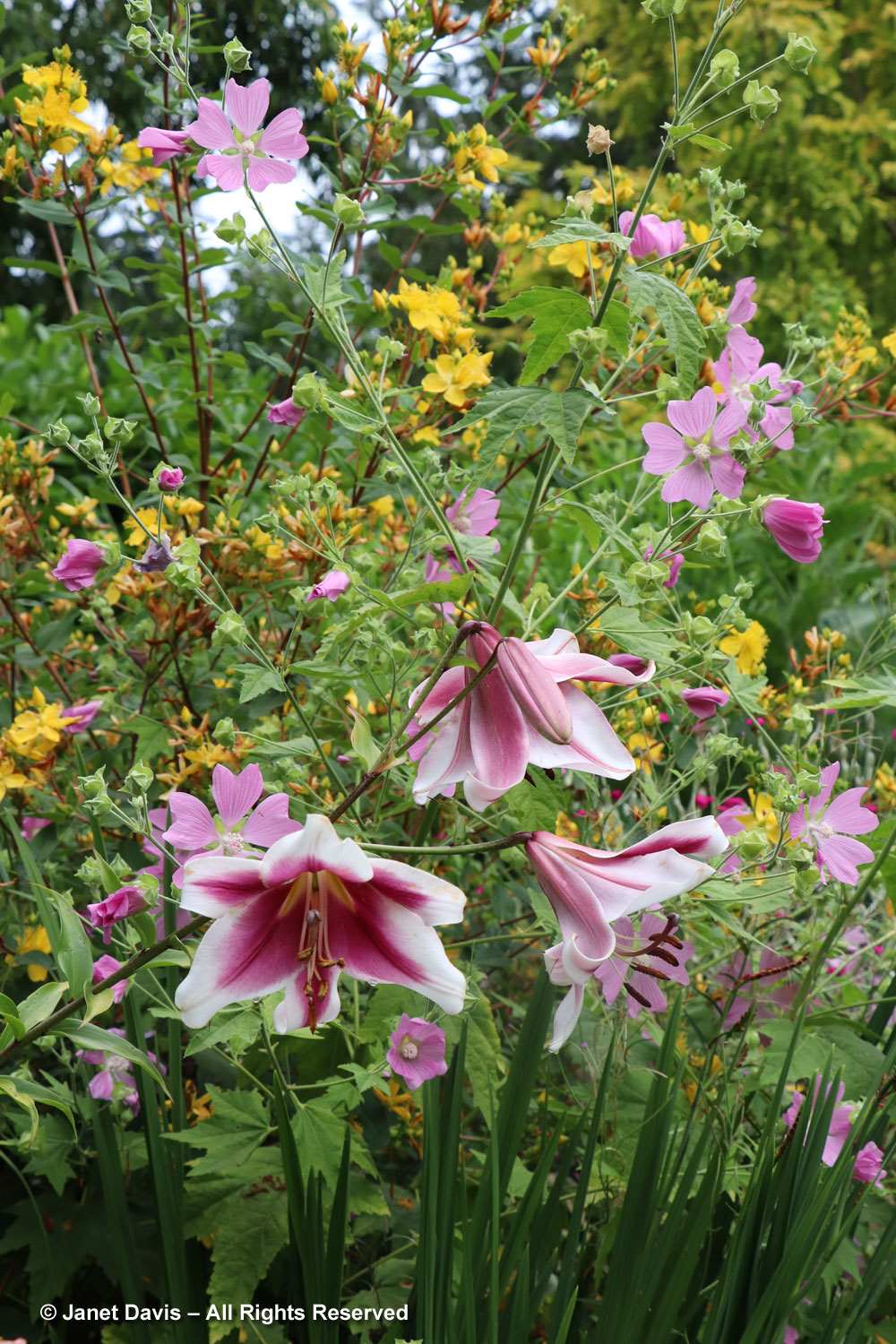
It’s easy to look at the ‘forest’ of a garden and forget all the ‘trees’, like this humble annual love-in-a-mist (Nigella damascena) with its complex structure.
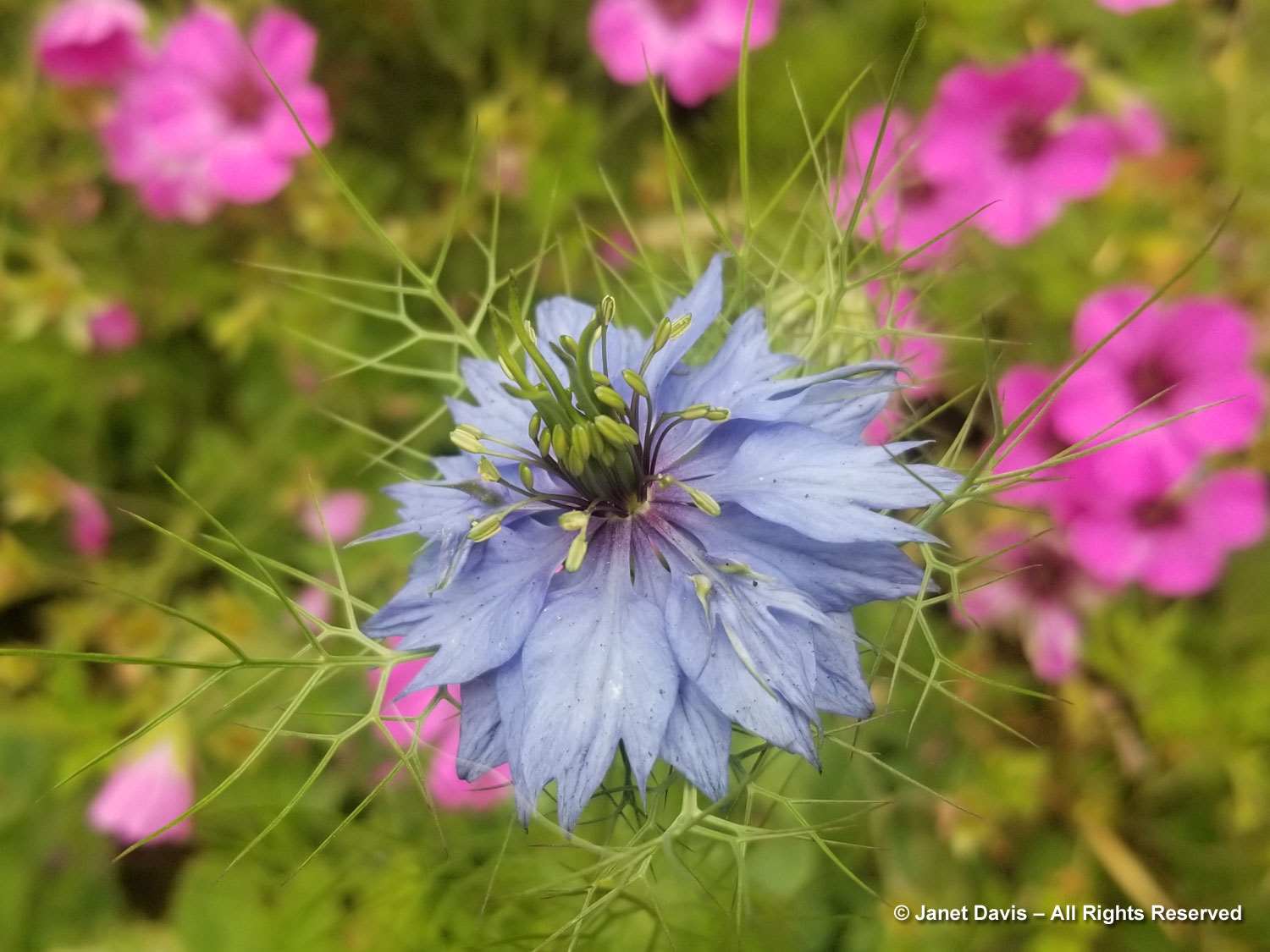
Thalictrum adds an airy lilac cloud to the yellow heliopsis.
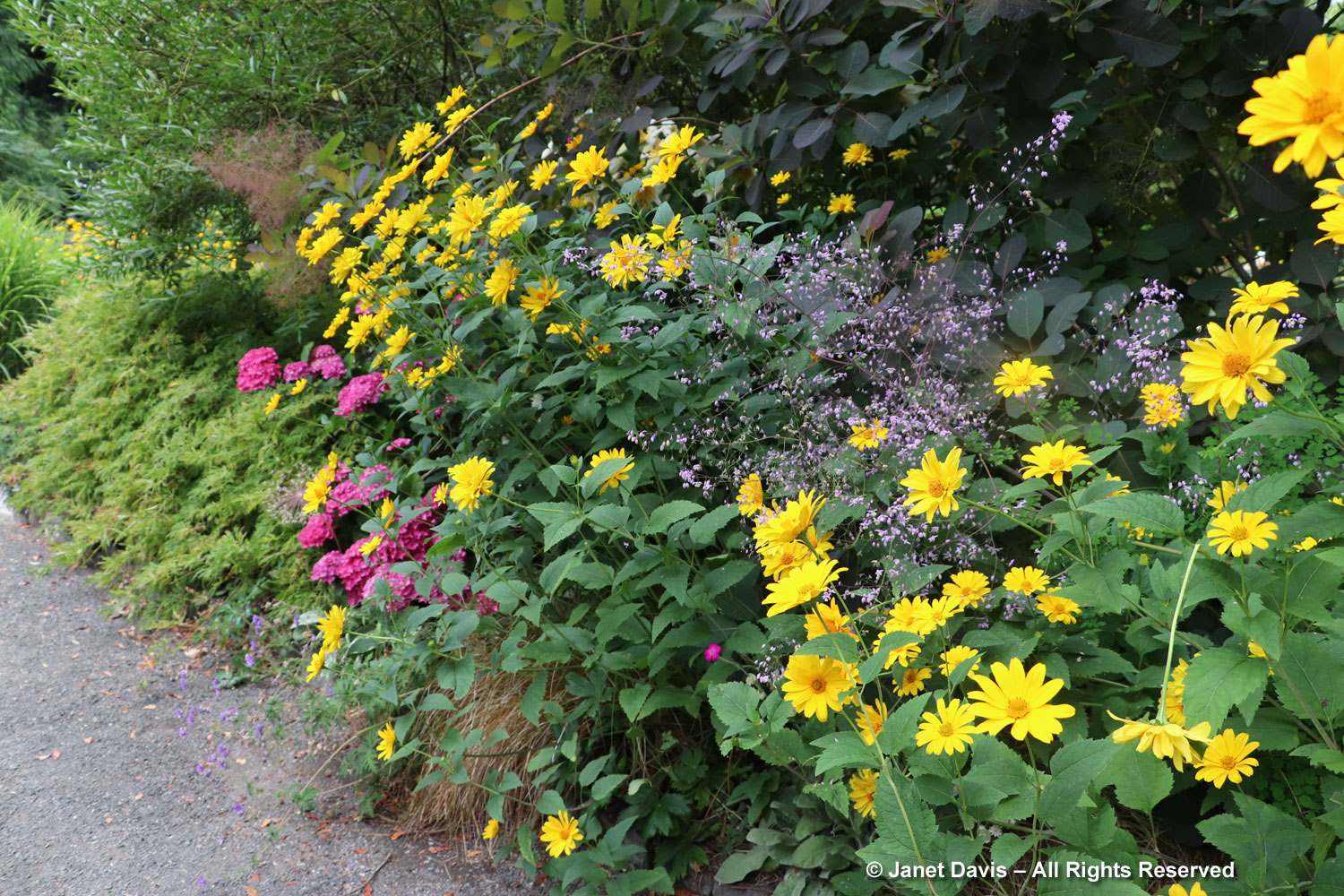
So many lilies! (Possibly L. regale?) If you can keep them free of red lily beetle (I cannot in Toronto, despite my efforts), they are the perfumed stars of the July garden.
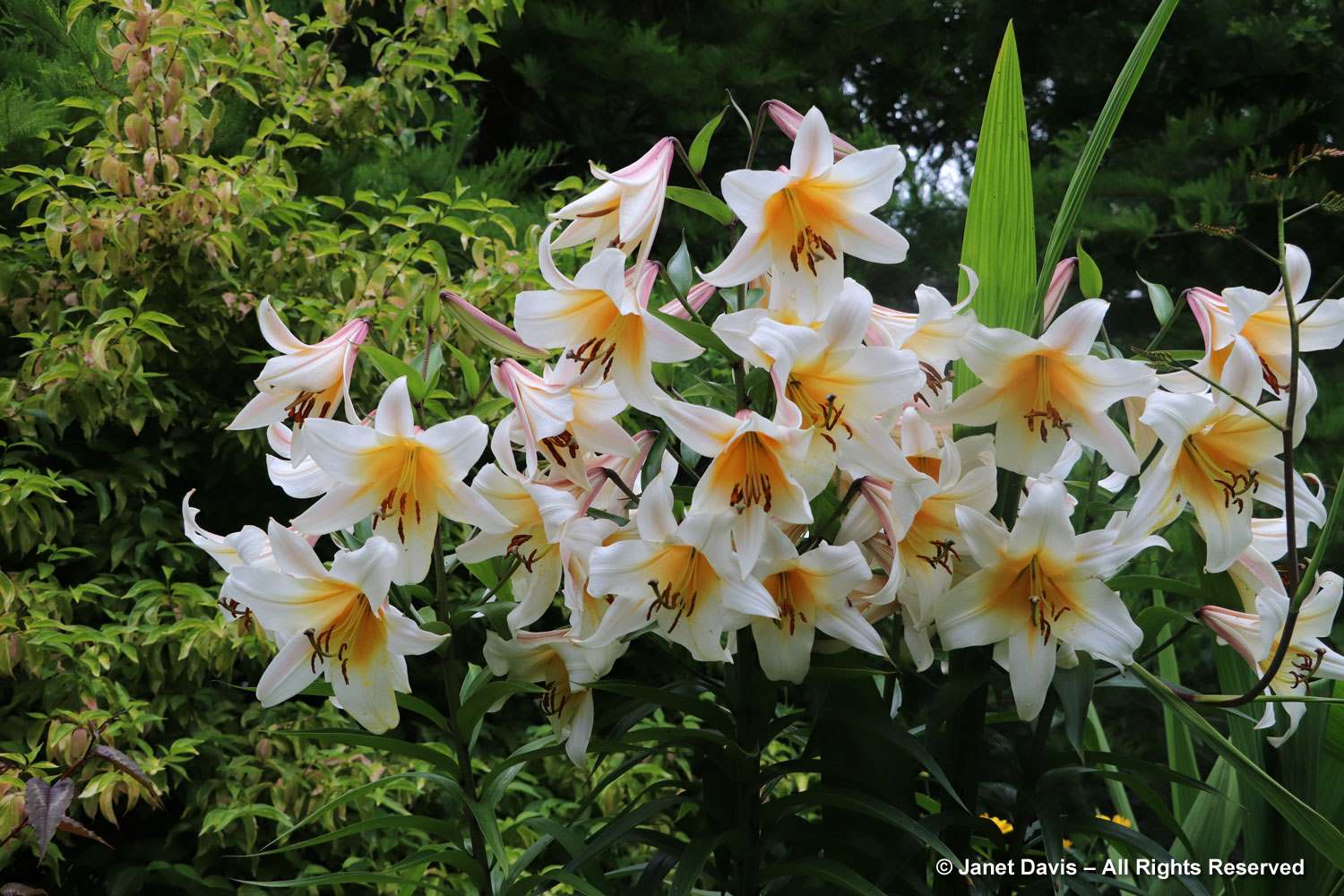
On the way towards the formal garden surrounding the building that was once Dan and Robert’s house, I find a stand of hardy ginger (Roscoea purpurea) from the Himalayas. The last time I saw these was at RBG Edinburgh!
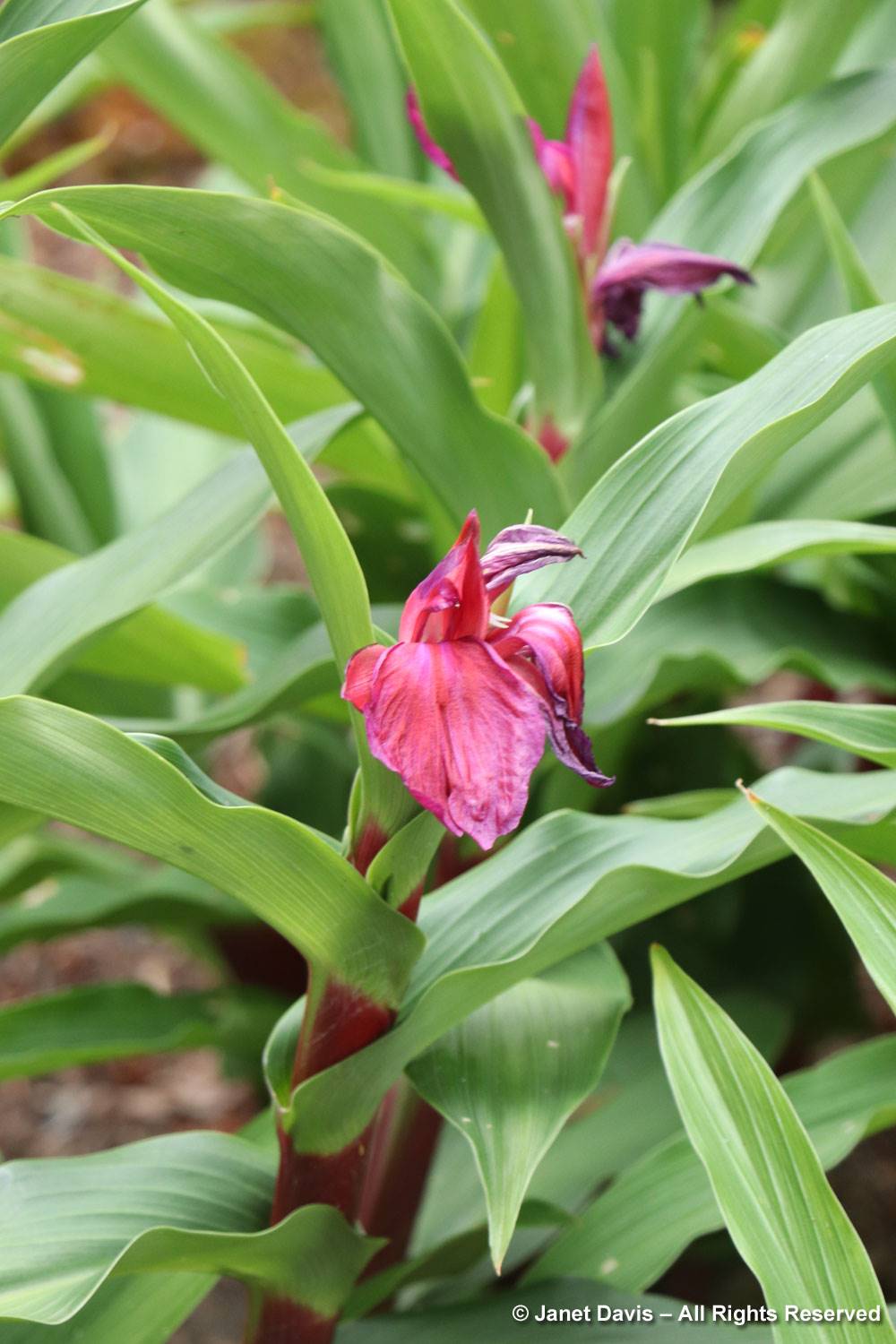
A path leads through shrubs and various beds….
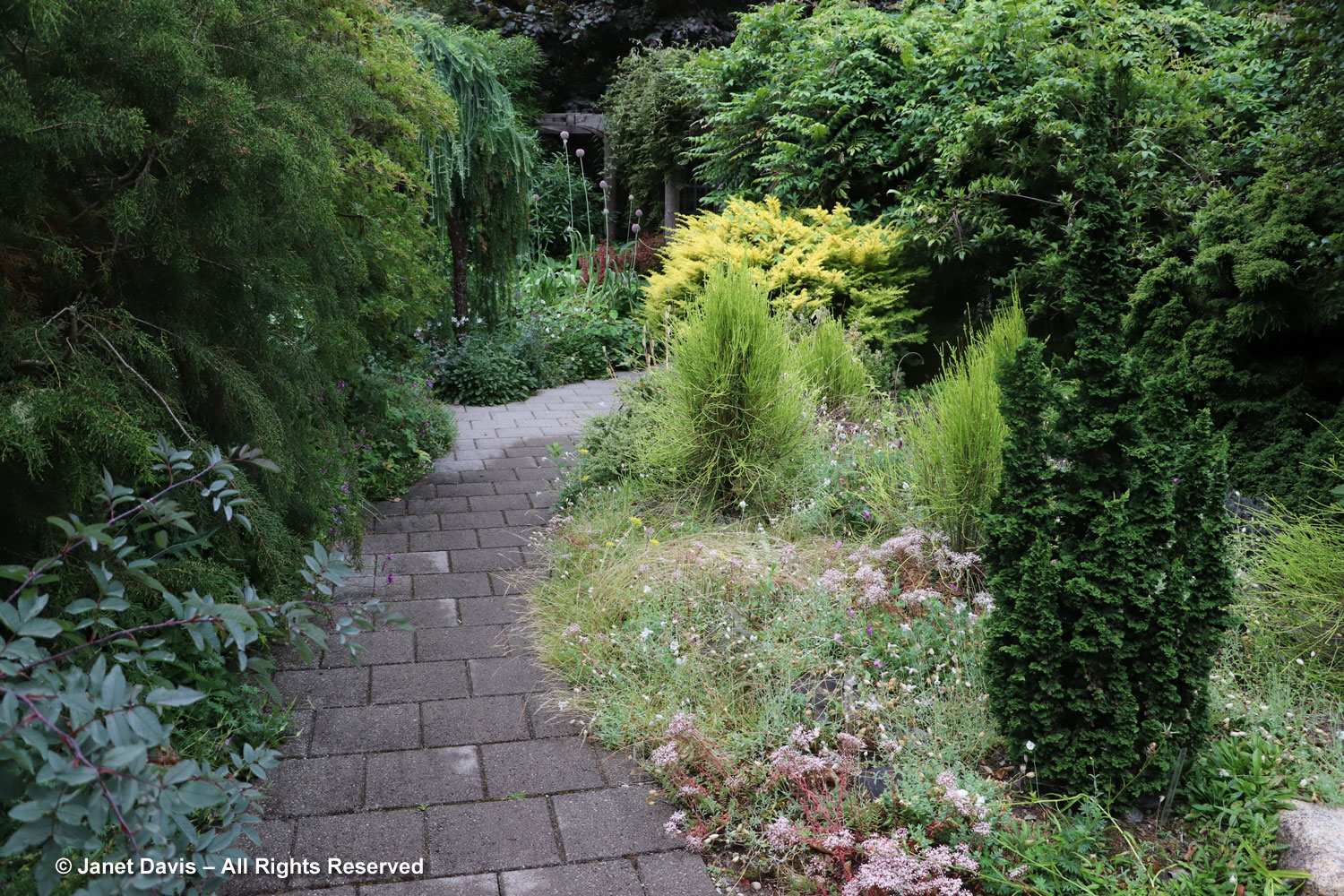
…. past a raised gravel garden filled with drought-tolerant plants….
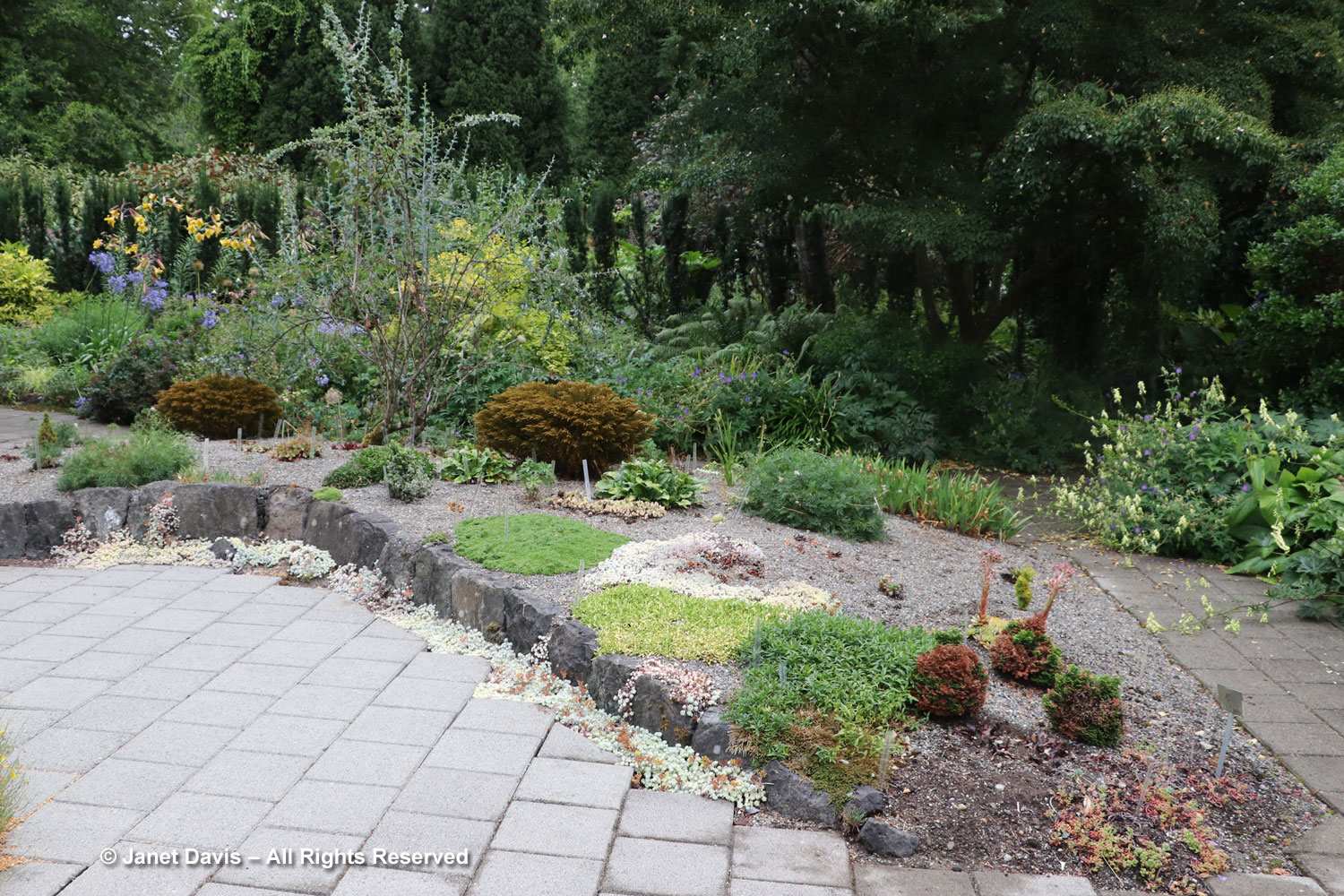
…. like what I think is Sedum album ‘Coral Carpet’.
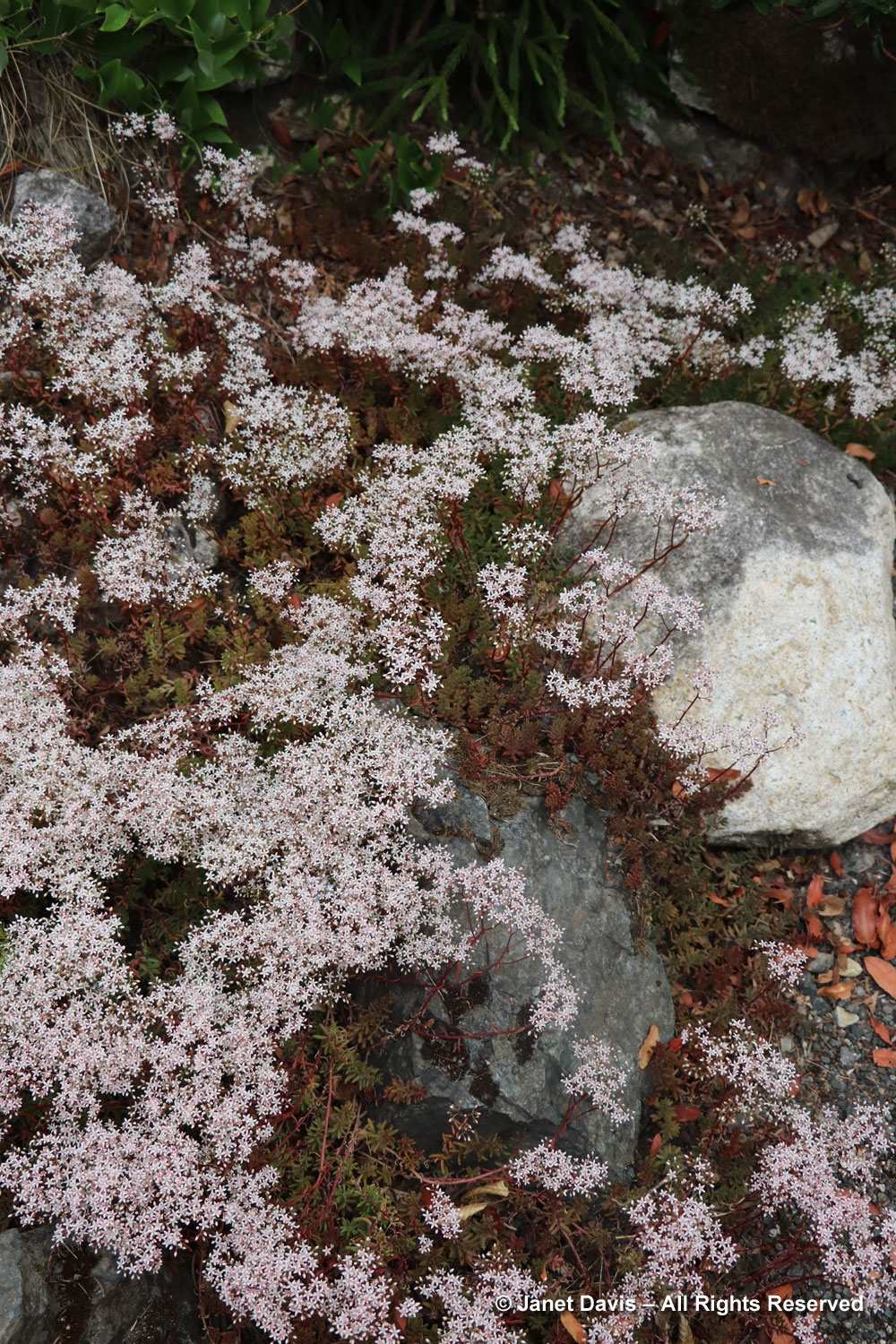
Near the house is an eye-catching combination of a golden redbud (Cercis spp.) and blue agapanthus.
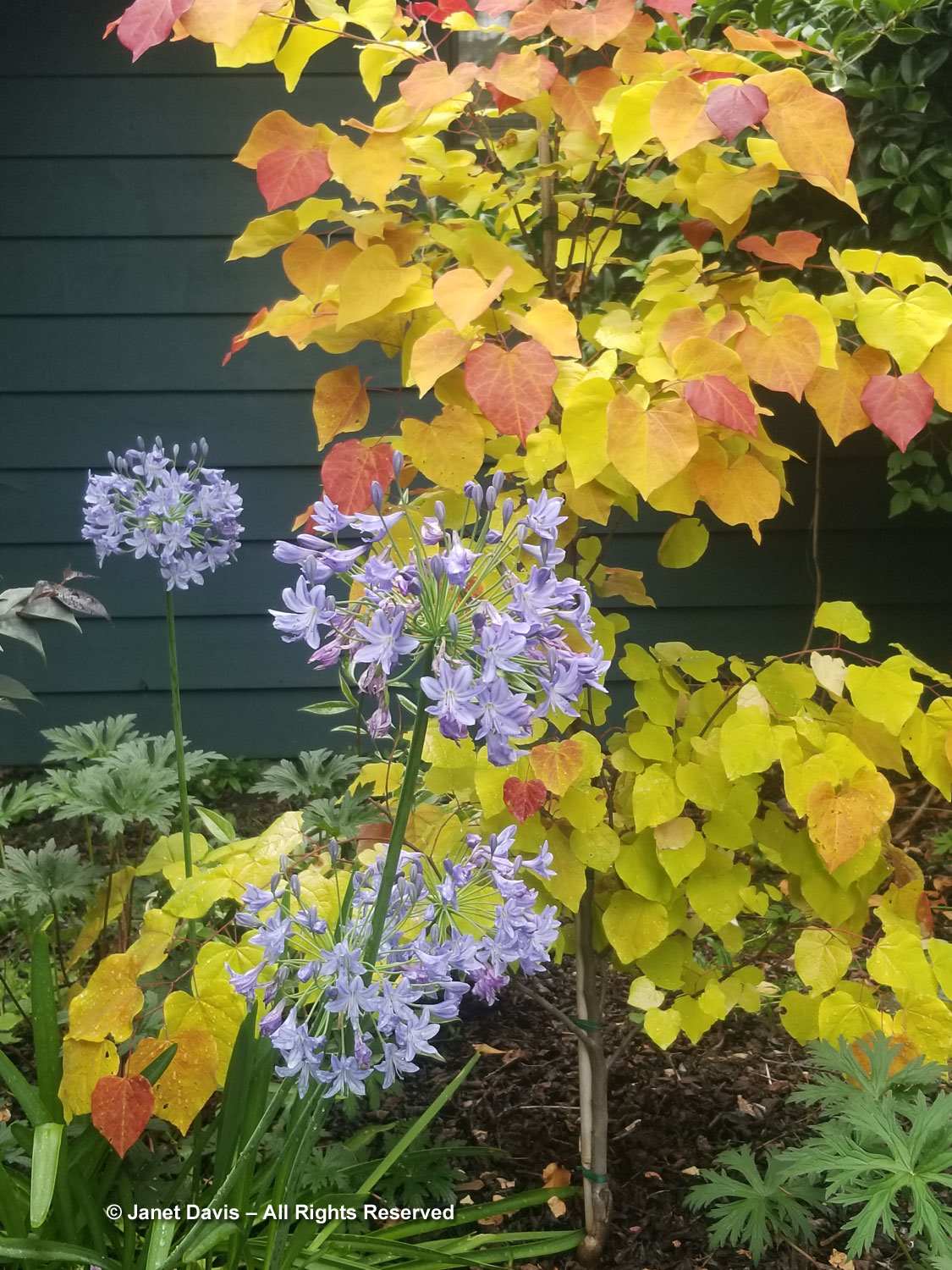
There are more Orienpet (Oriental x Trumpet hybrid) lilies near the tent where we pick up our catered lunches. The tent had been in use for a wedding, one of the ways photogenic Heronswood now generates revenue, along with admission fees, lectures and plant sales.
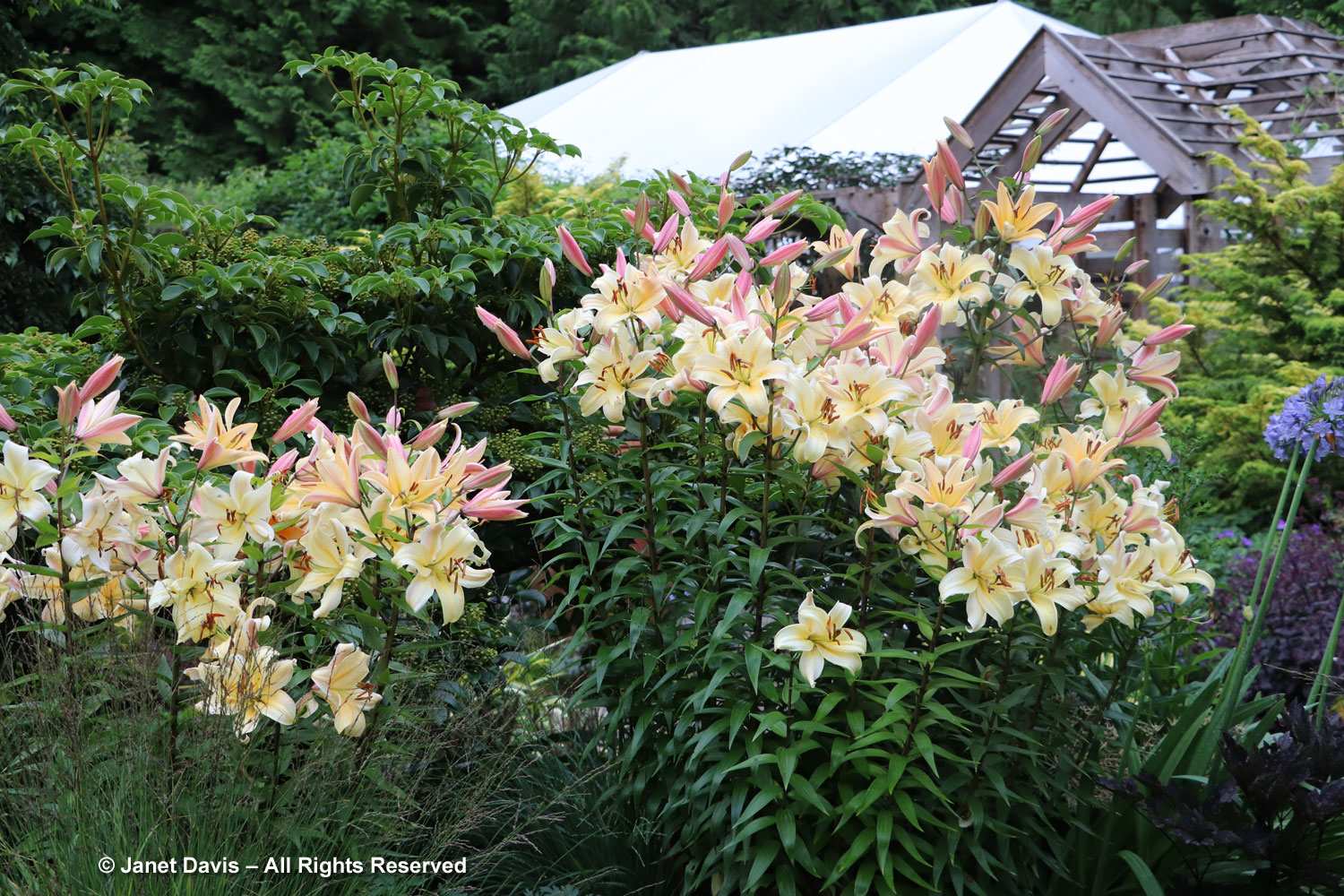
A long pergola hosts numerous types of vines.
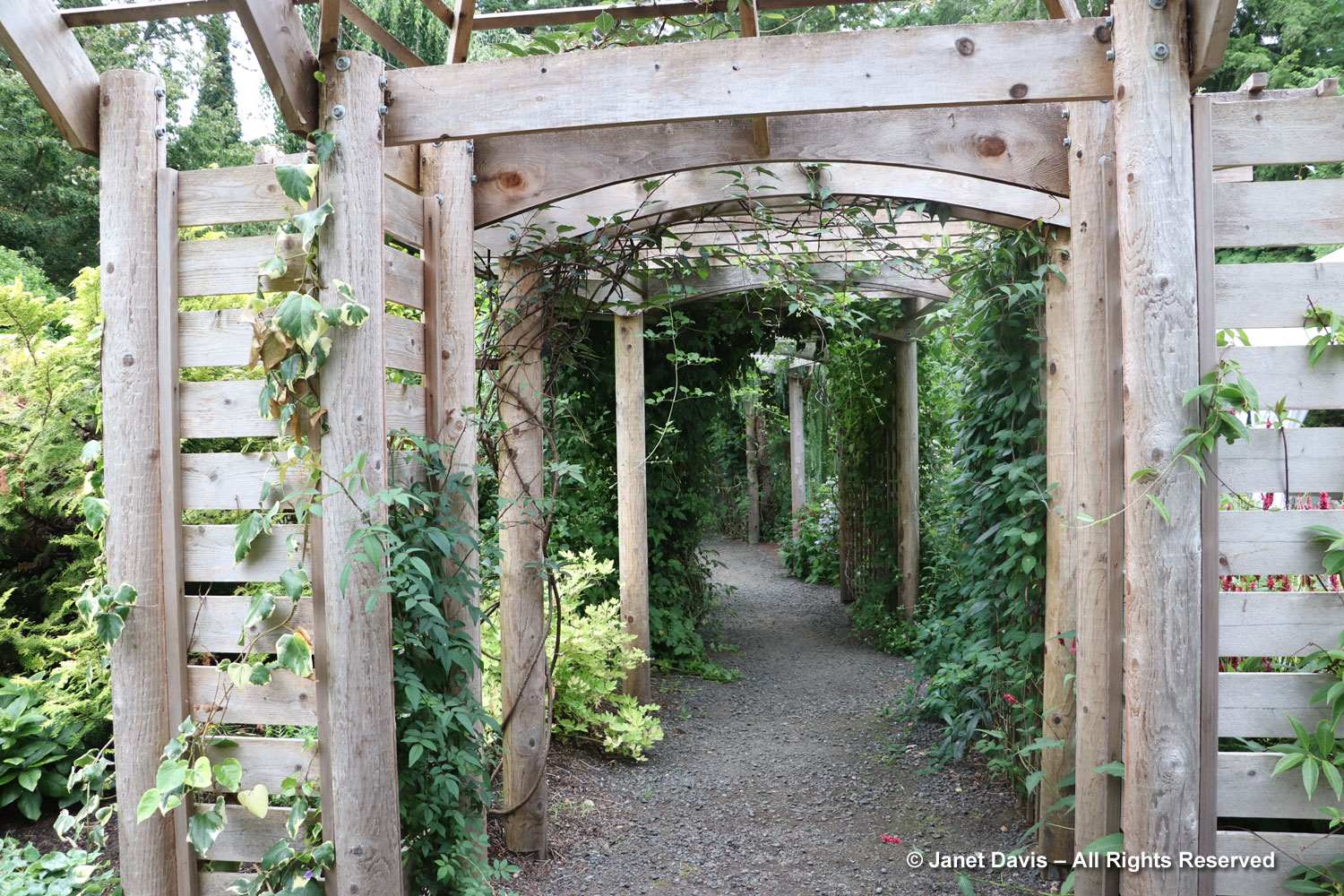
Near our lunch table is a bouquet that looks like the work of Riz Reyes, Assistant Director.
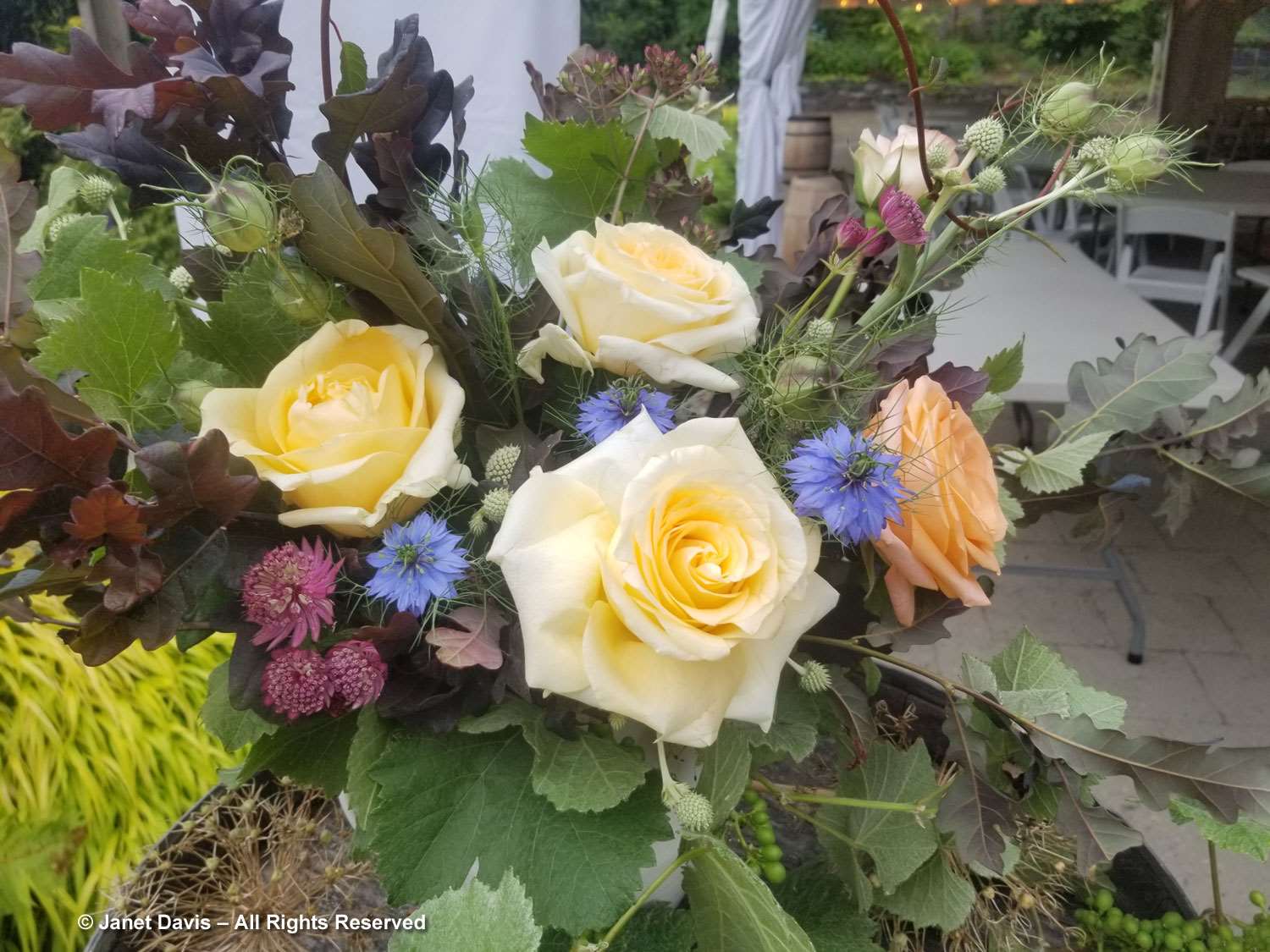
No sooner do I snap a photo than I see Riz himself – and he offers to pose next to Heronswood’s “it” plant, Lilium ‘Zeba’. In fact, Riz wrote an essay for Fine Gardening magazine on this very lily, the product of a cross between L. nepalense and L. ‘Kushi Maya’, itself an L. nepalense-Oriental cross.
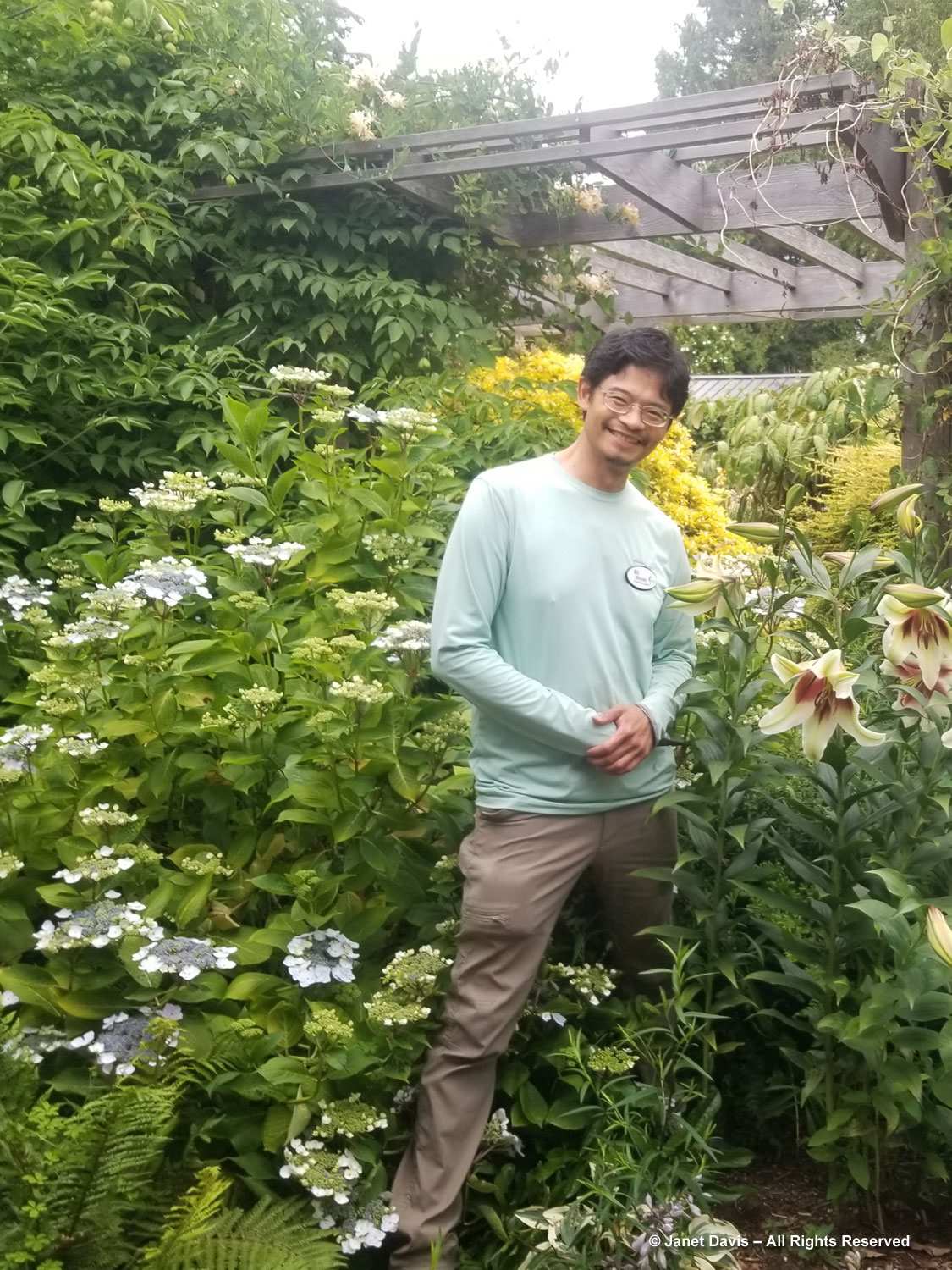
Here it is in combination with Persicaria amplexicaulis ‘Firetail’ – don’t they make fine music together?
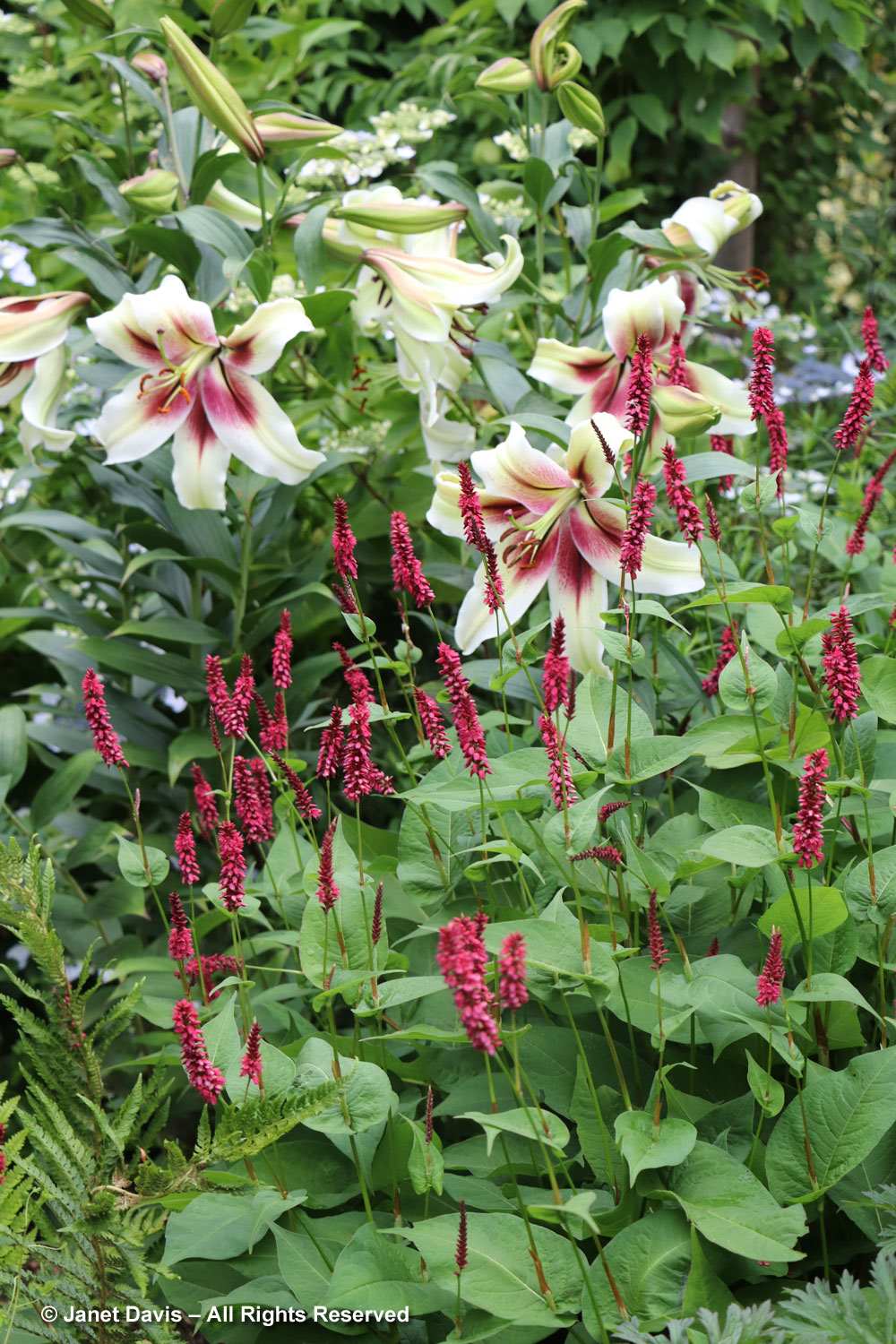
The lush beds in the formal gardens near the house feature ornamental grasses, perennials, towering trumpet lilies and agapanthus.
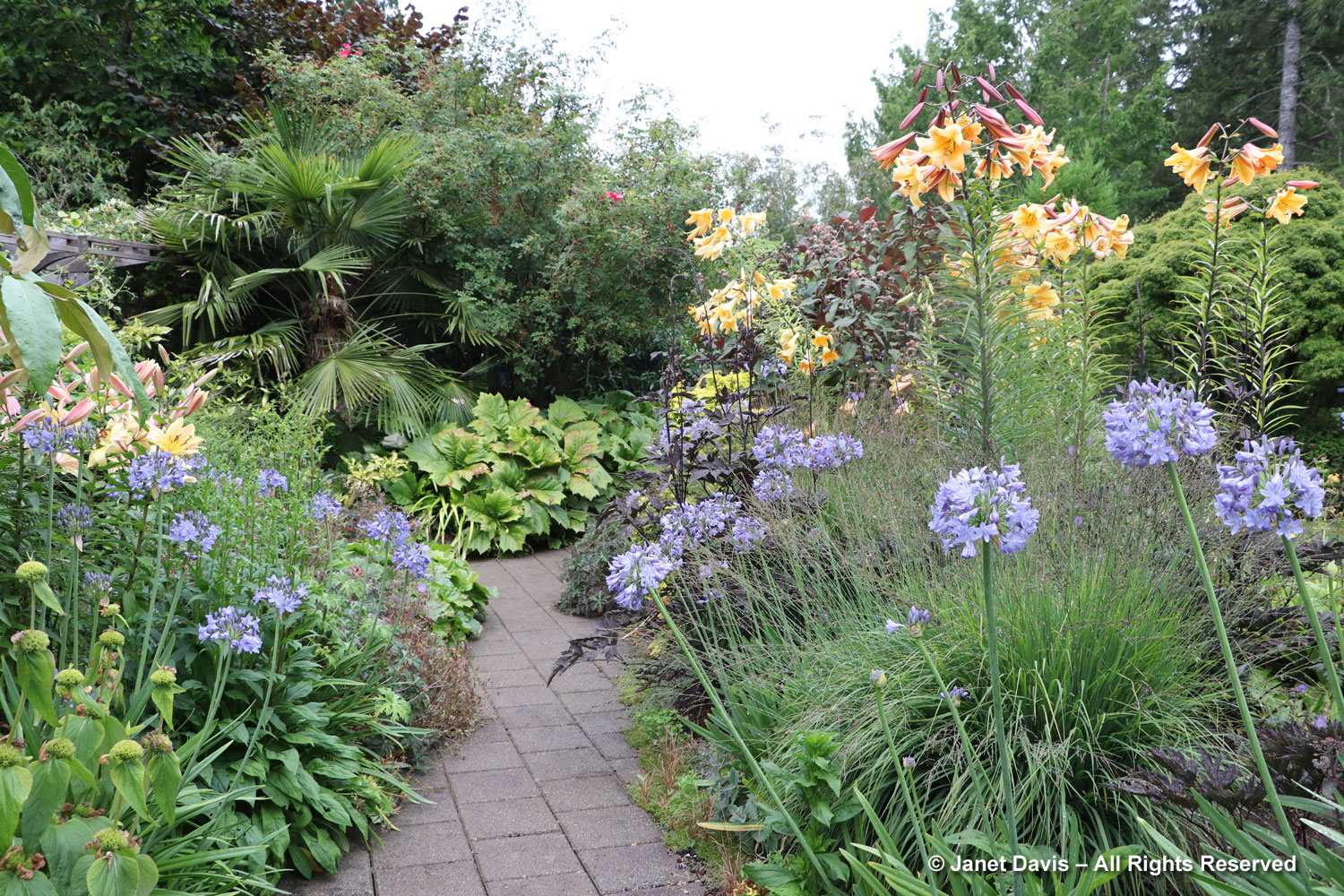
An empty urn acts as focal point here.
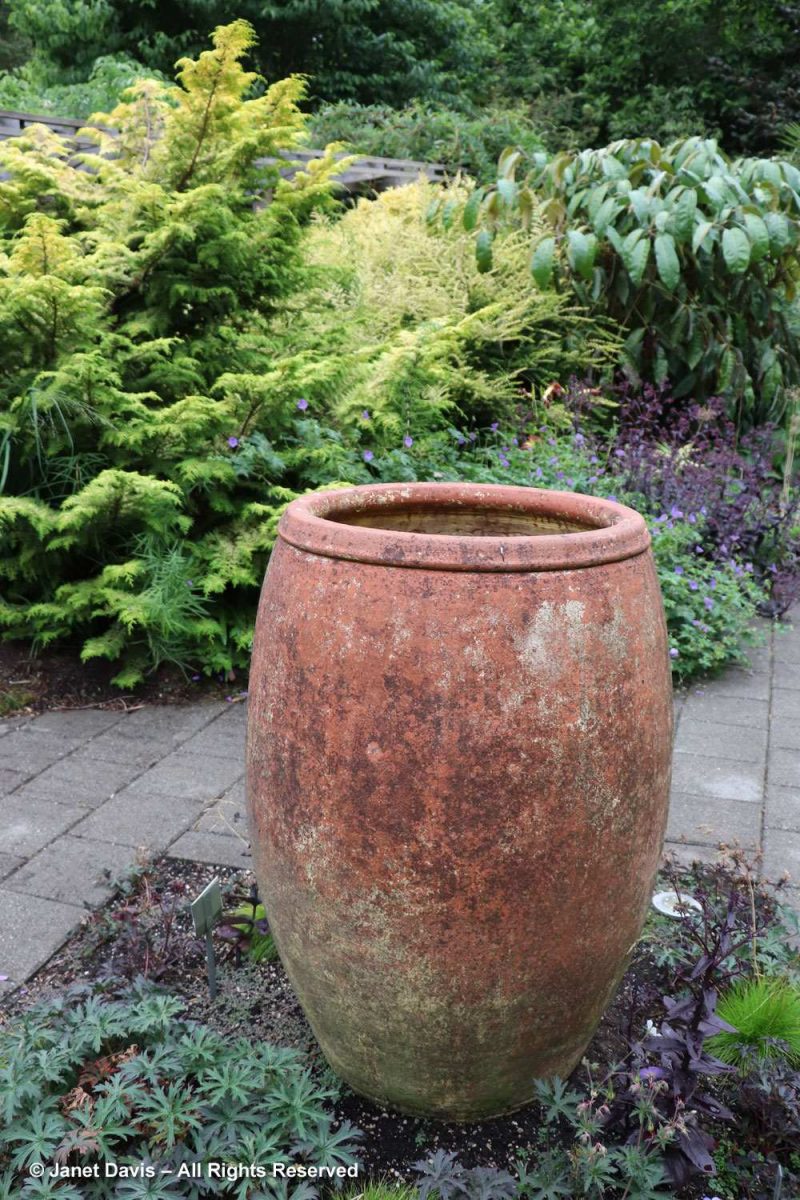
Time is fleeting on our stay here so I finish lunch and head towards the new, ecologically-focused gardens near the entrance. I do love a meadow and this one near the S’Klallum Connections Garden features a pair of native Washington state annuals, blue-headed gilia, Gilia capitata with pink farewell-to-spring, Clarkia amoena (aka godetia). Interestingly, this is the second time I’ve seen Gilia capitata used in a meadow this season – the first time in Nigel Dunnett’s seed-mix for the wildflower moat at the Tower of London, which I blogged about recently.
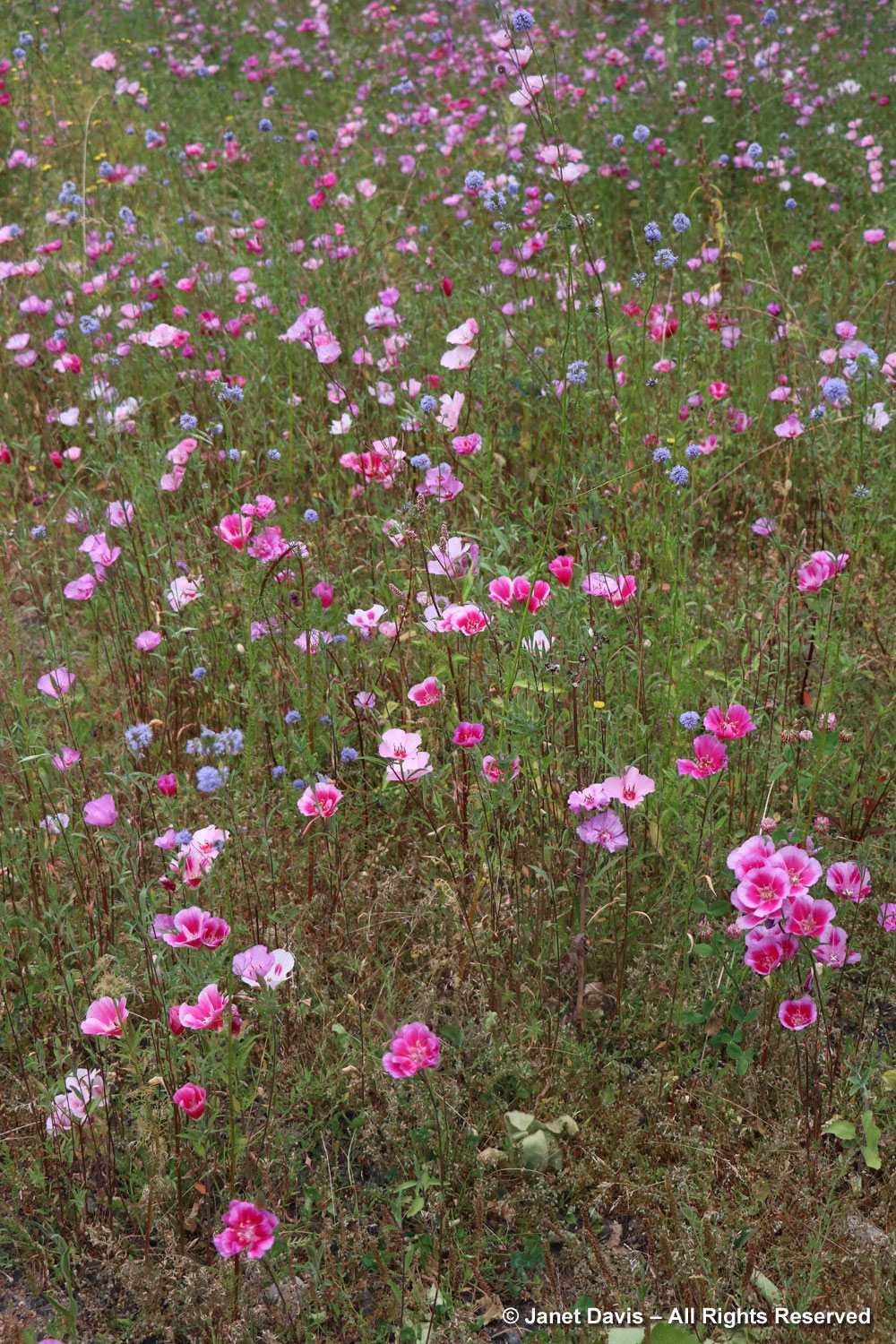
The S’Klallum Connections Garden is still being developed but it promises to tell a powerful story about the relationship between the tribe and the land.
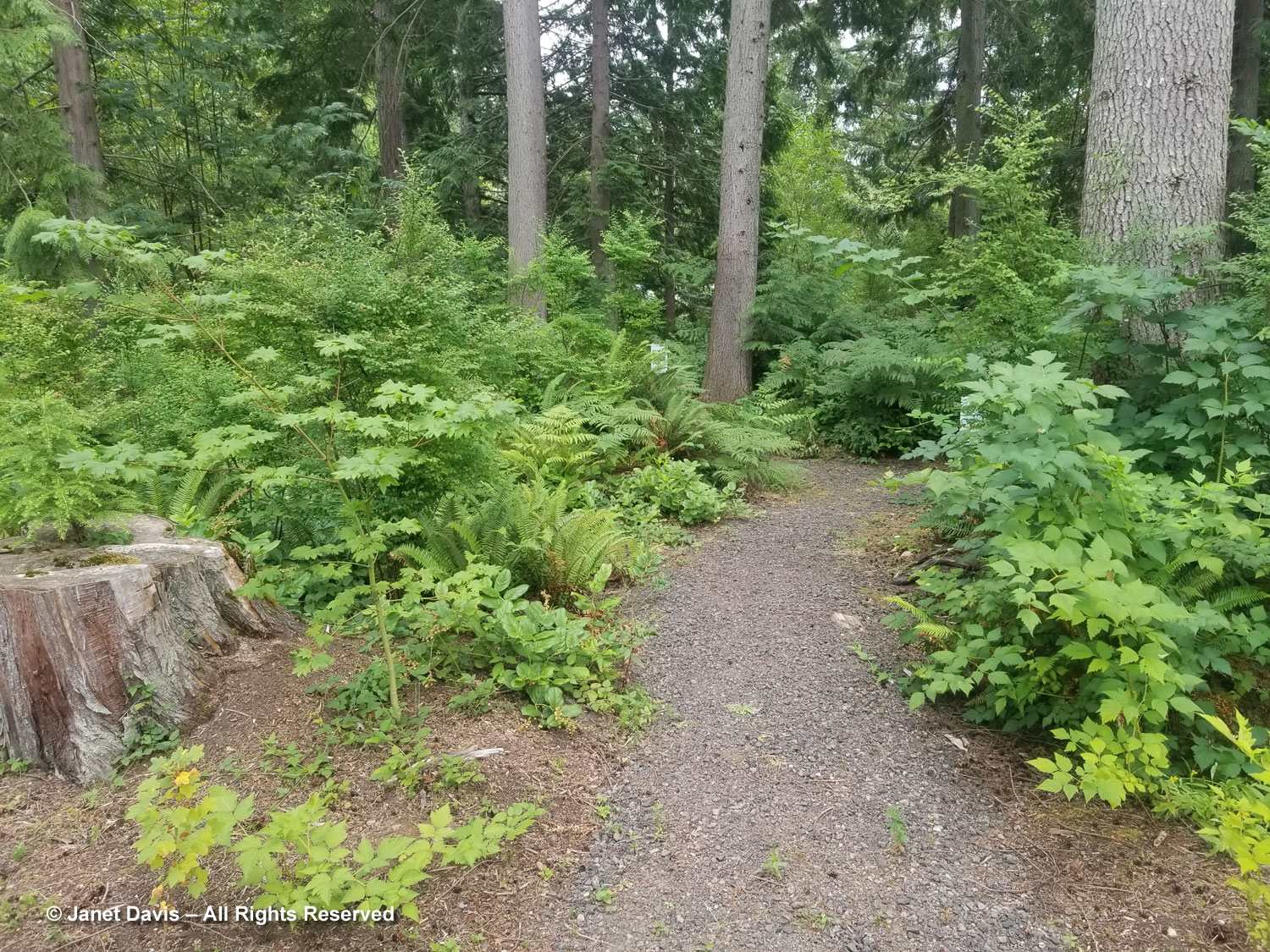
It will use the garden to tell stories, actual stories.
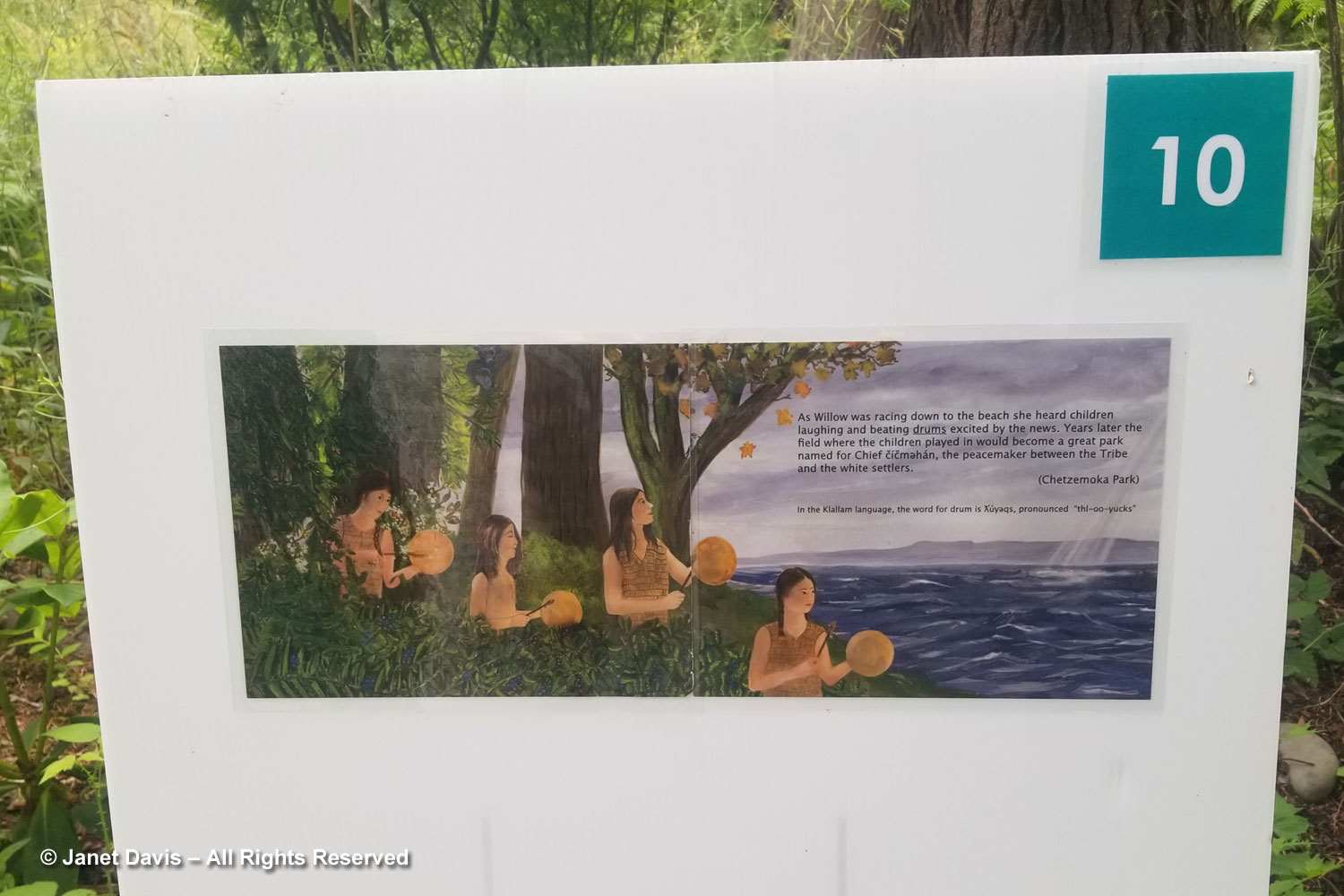
There are wetlands…
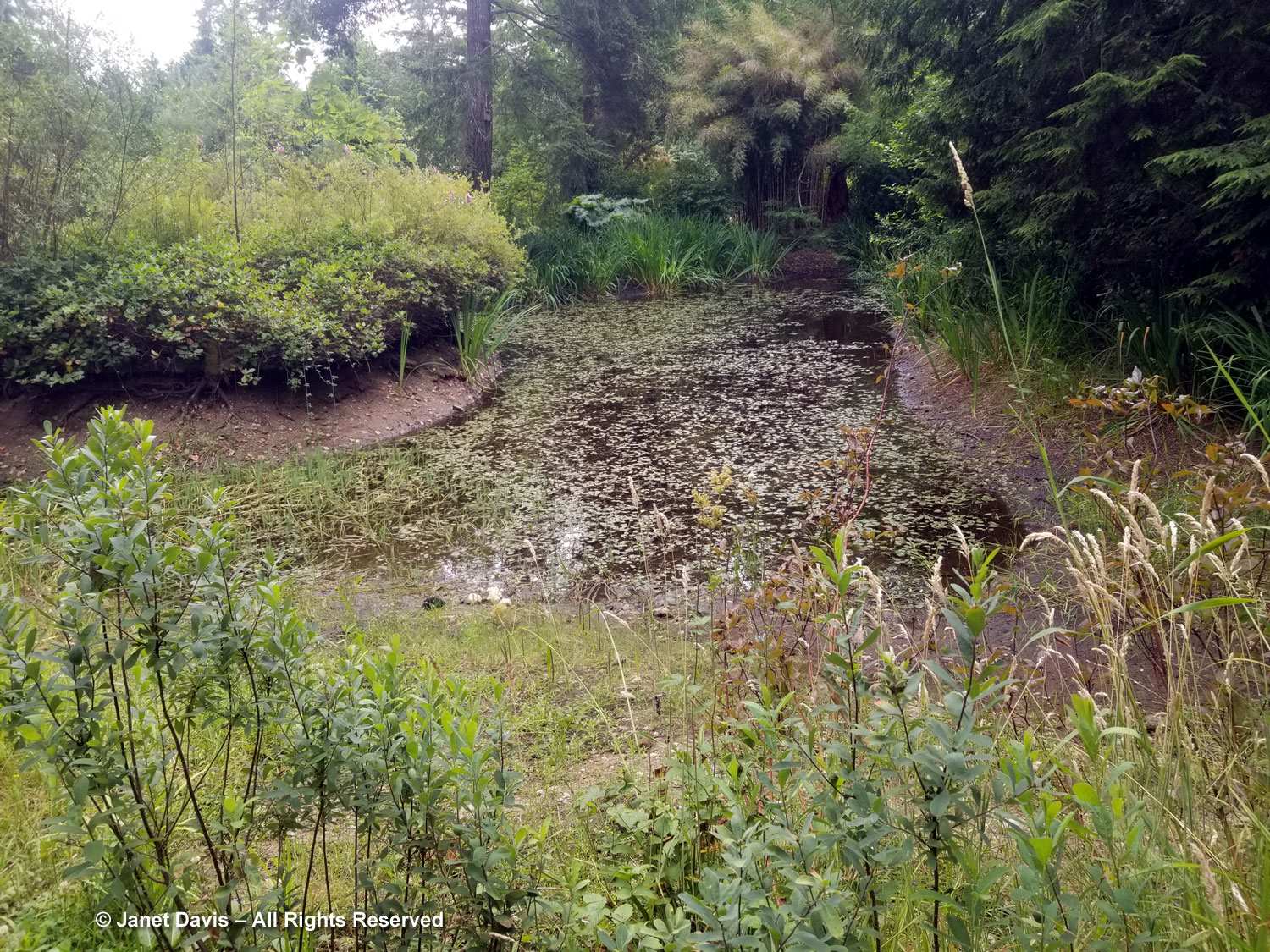
…. and native forest plants like salal (Gaultheria shallon). Florists know this shrub as a glossy, green filler for bouquets, but for Native Americans it is a food and medicinal plant. Other traditional plants in the garden include camas, soapberry and sweet-grass.
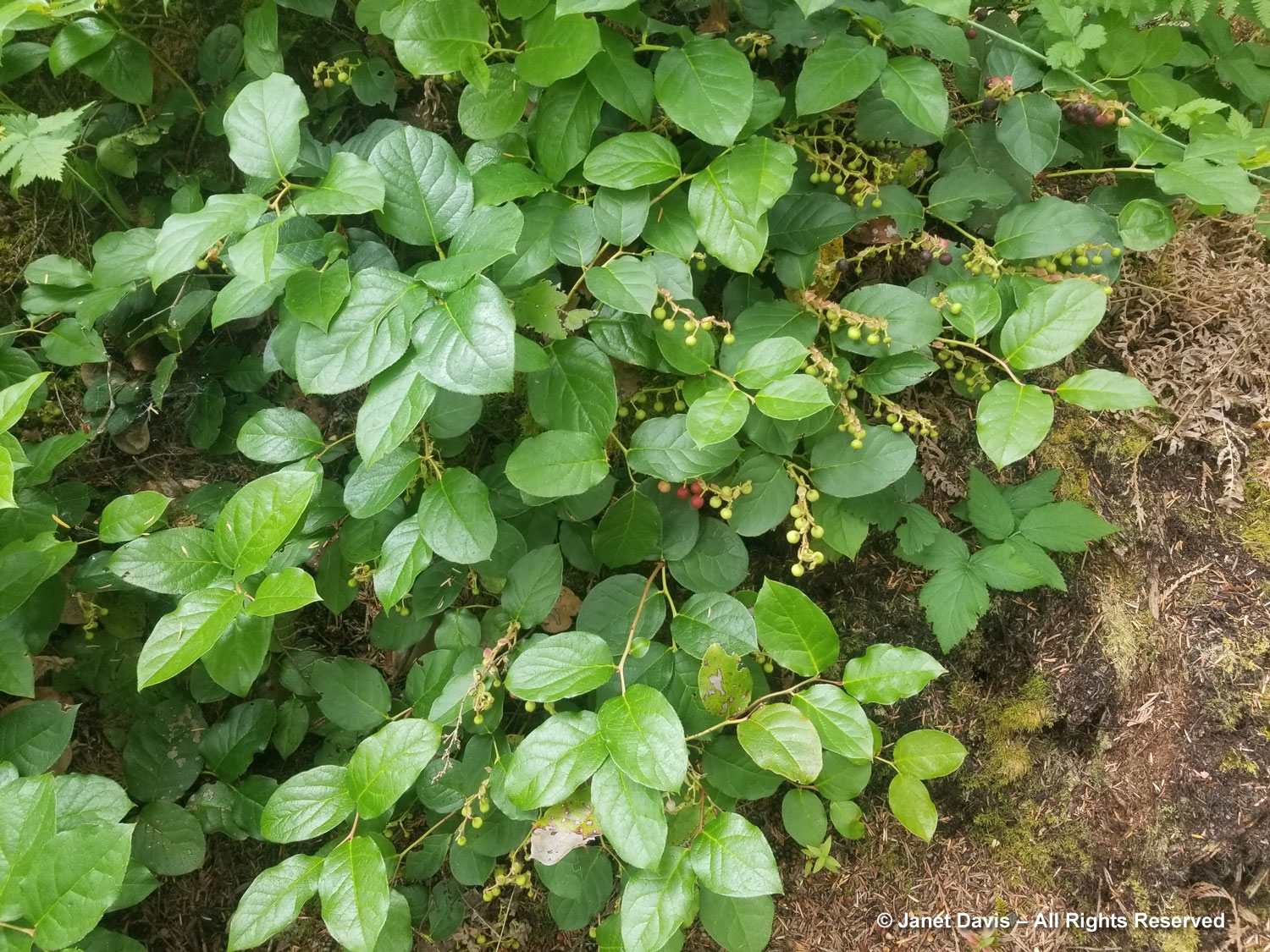
Sword fern (Polystichum munitum) is no less beautiful for being common in the woods.
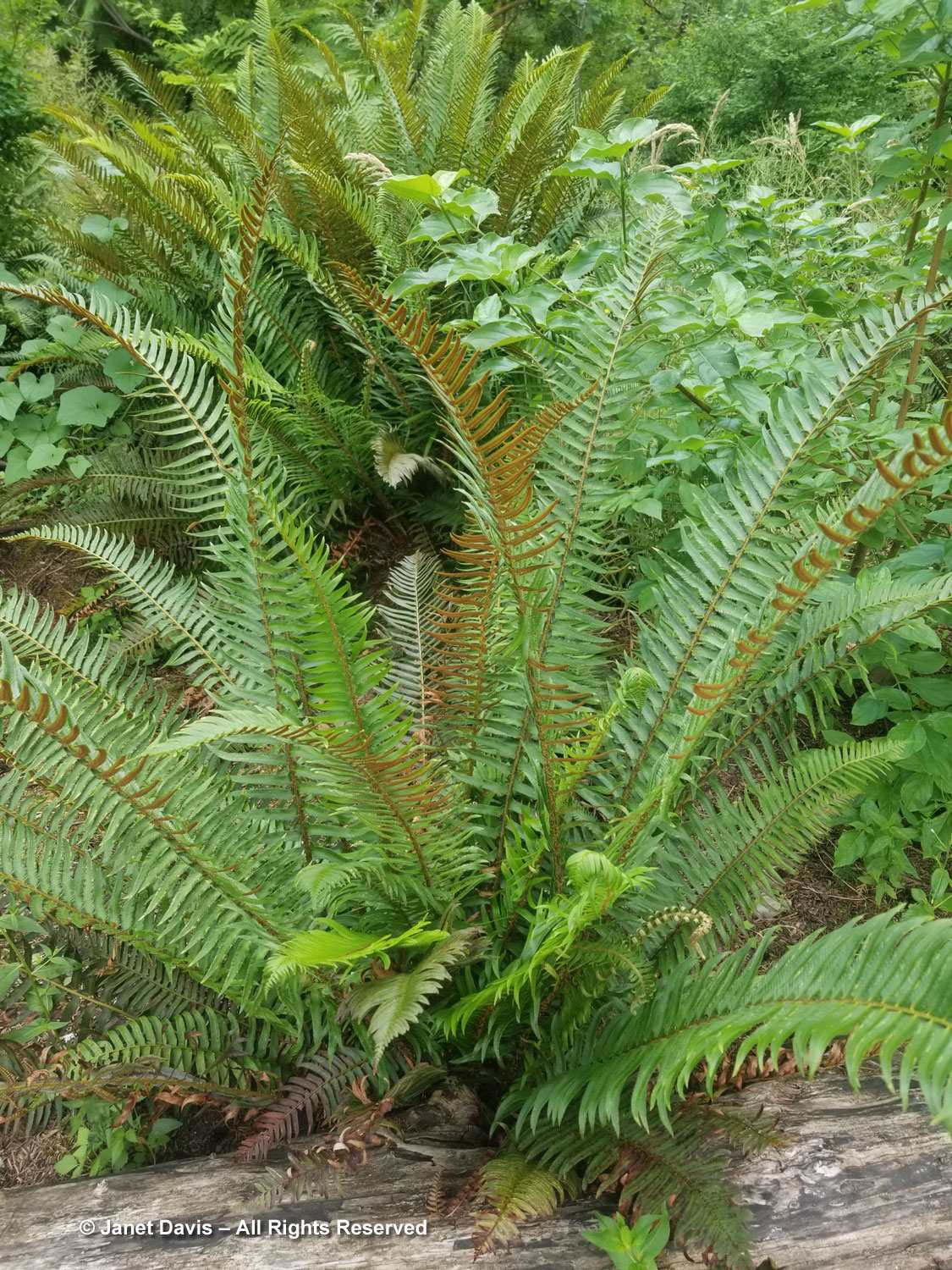
The S’Klallum Connections Garden has a very quiet, naturalistic feeling.
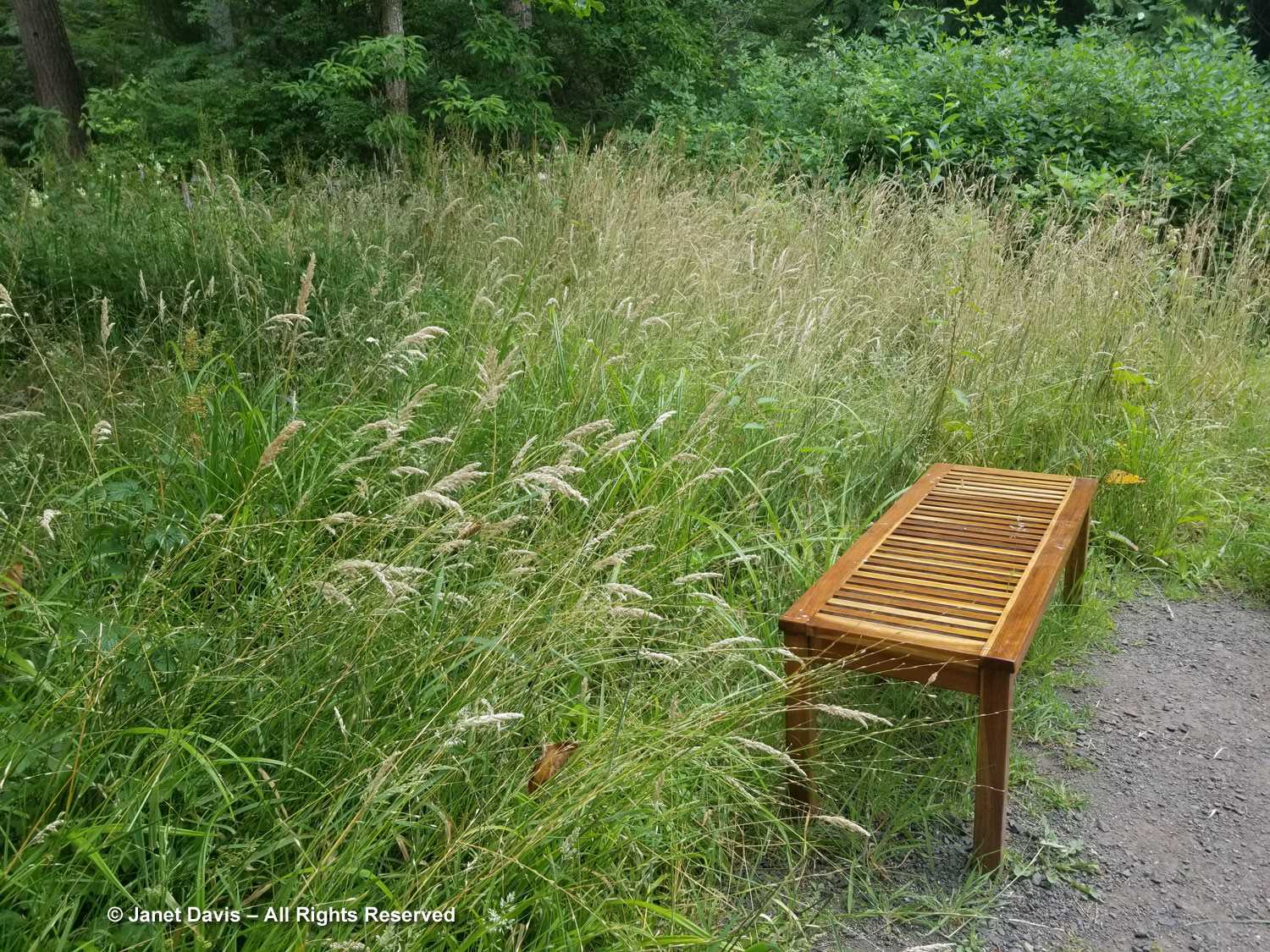
An old totem pole has come to the end of its journey and is “resting” now in the garden, being allowed to return to the earth.
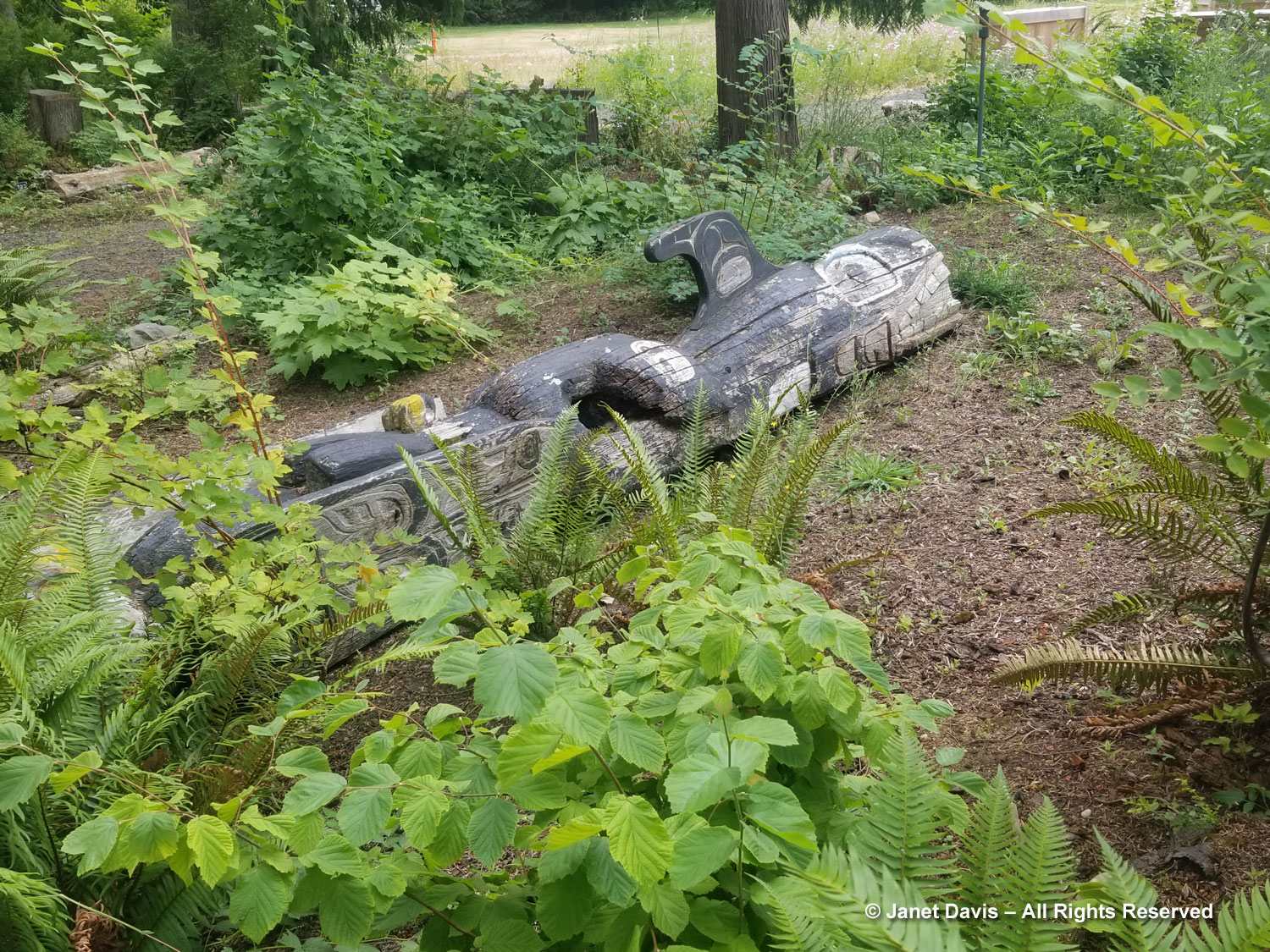
The Traveller’s Garden is another new space intended to highlight plants that reach the garden through the exploits of plant explorers. As the website says: “Heronswood is well known for its rare plants, obtained around the world and the Traveler’s Garden, still under construction, tells the tale of plant hunters, what they do and how they do it. Follow in their footsteps and lose yourself in a Chilean forest, on a Vietnamese peak, or in the American West.”
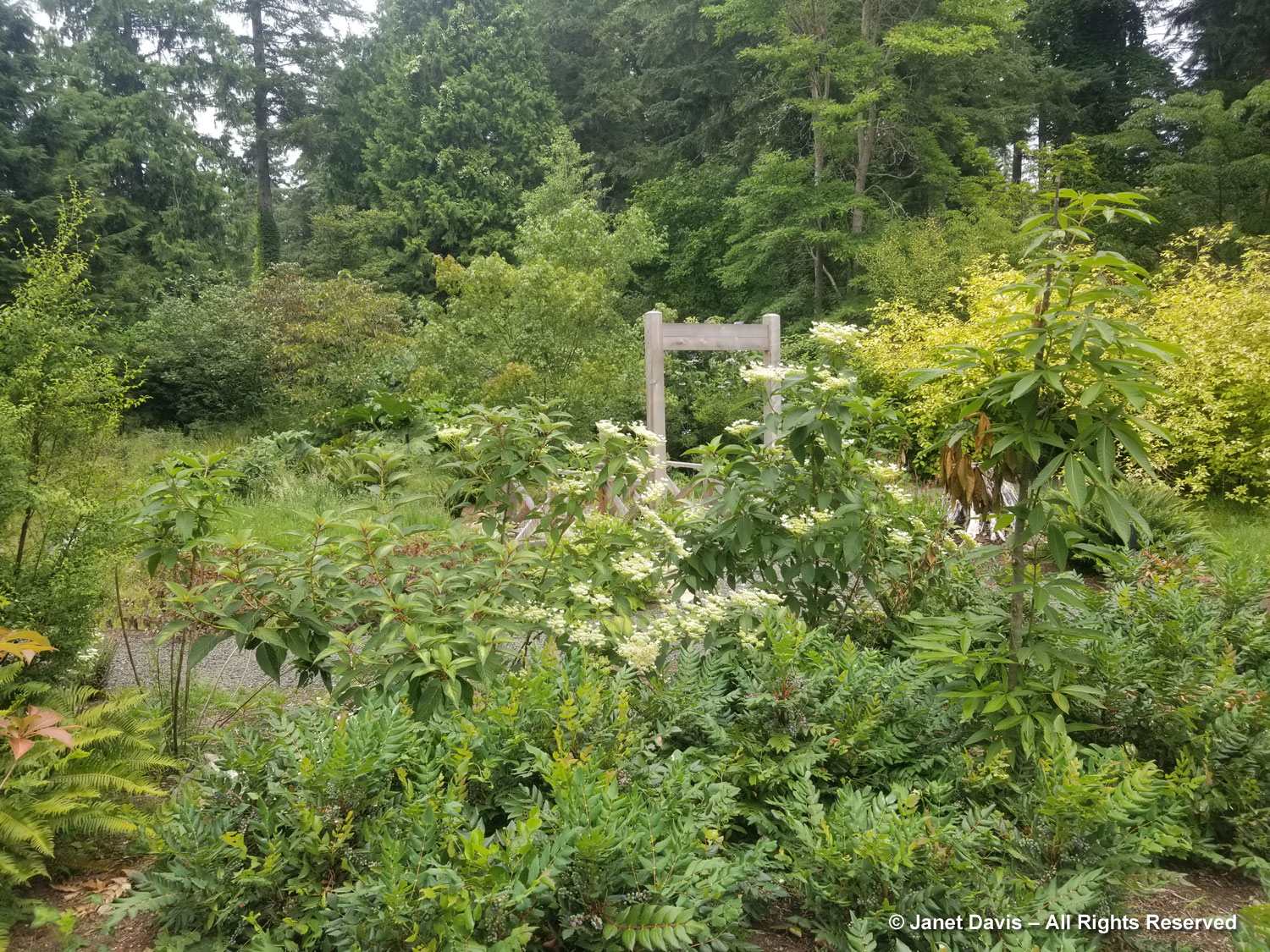
Speaking of Vietnam, one of the interpretive signs in this area features founder Dan Hinkley rejoicing at the summit of the tallest mountain in that country. If you want to read Dan’s essay on his ascent to this peak, it’s here on his website.
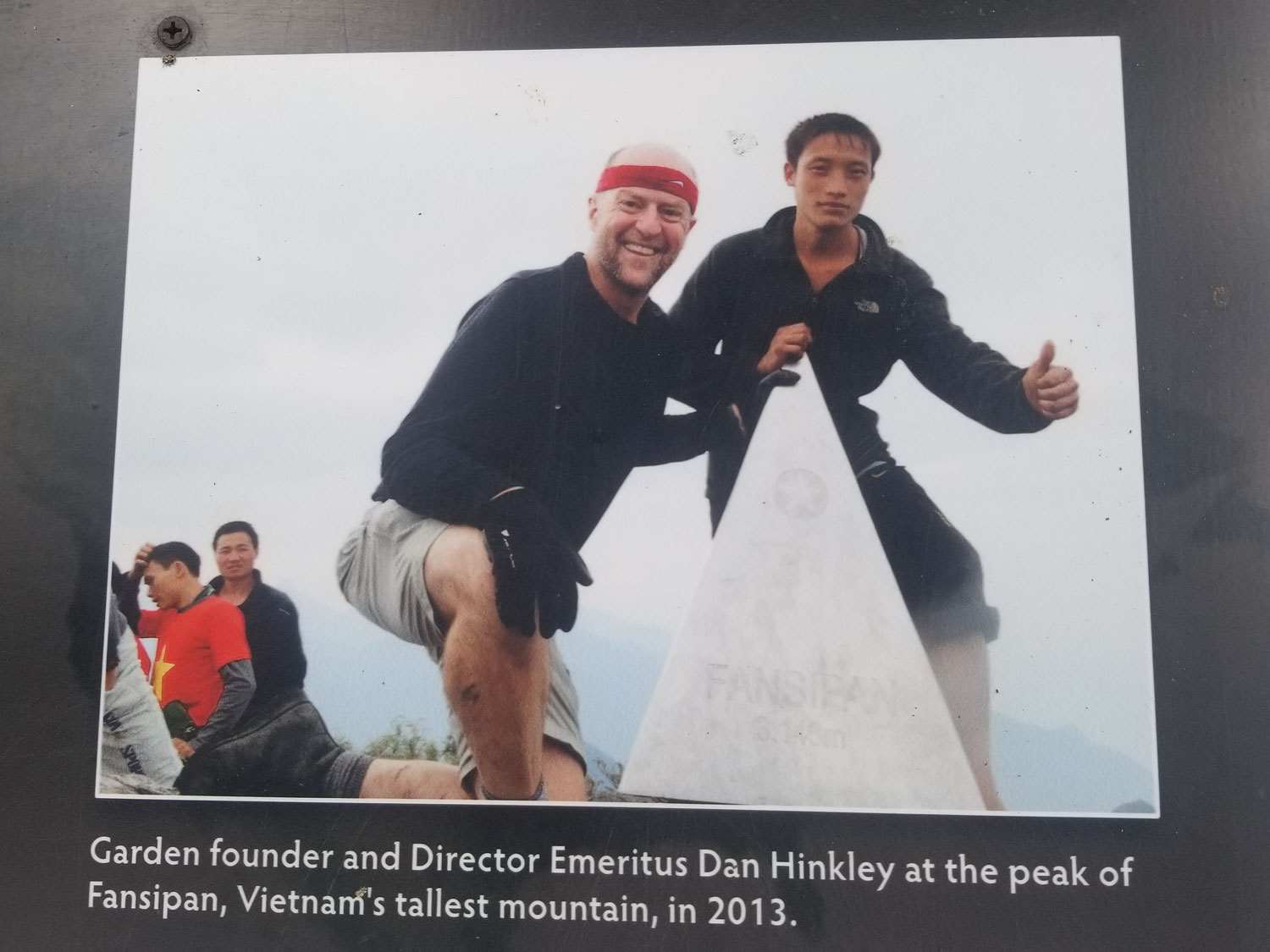
Himalayan hydrangea (H. heteromalla) is one of the uncommon plants in the Traveler’s Garden.
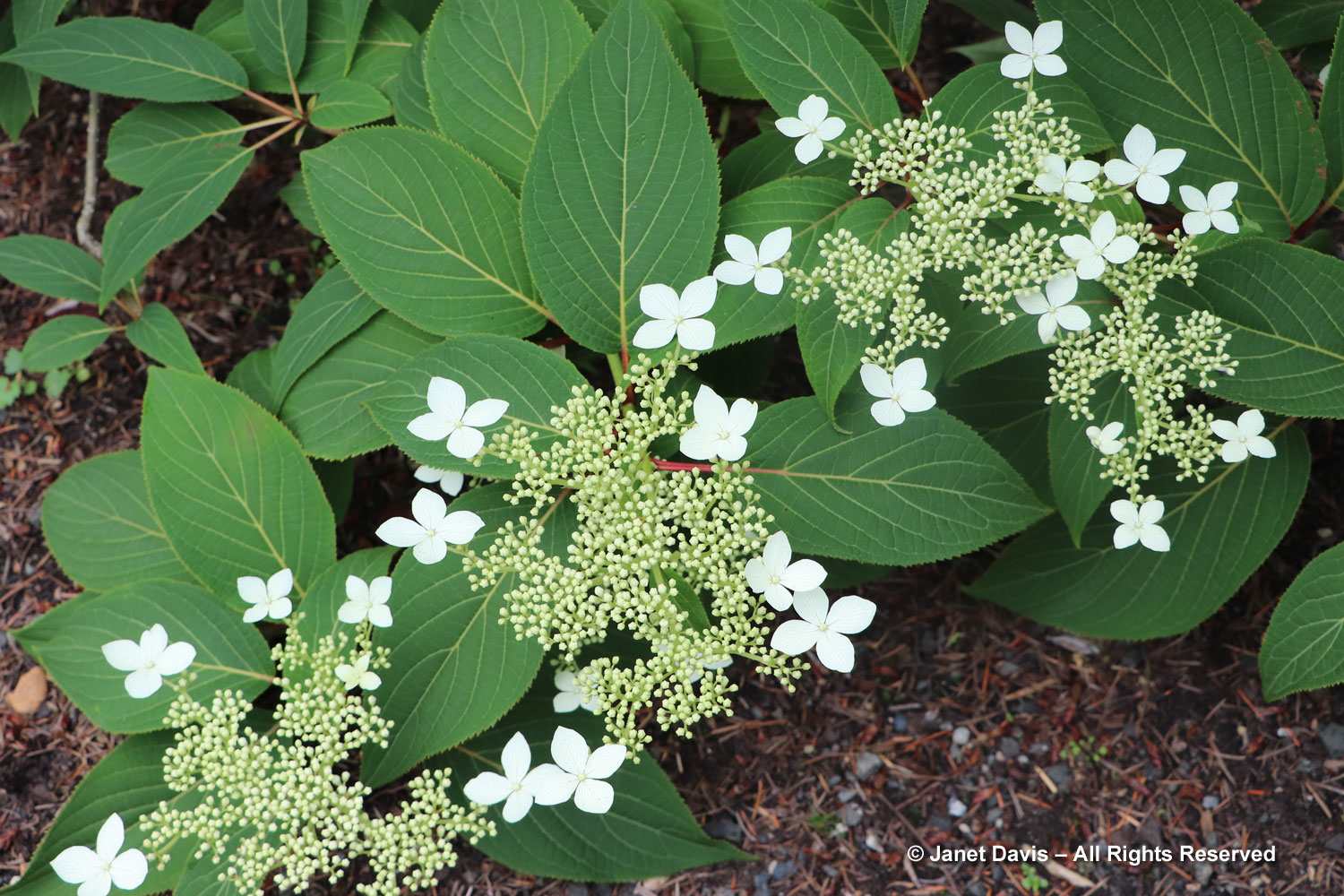
With the buses arriving to take us back to Tacoma, I run to the Renaissance Garden adjacent to the parking lot but just have time to snap a quick shot through the alders. As the website says: “Sheltered amongst mossy logs, this garden tells of the interaction between nature and the Port Gamble S’Klallam Tribe through a recreation of an abandoned logging camp. Initially developed in 2018, it contains over 250 different types of ferns together with other shade-loving plants under a canopy of western red cedar, a tree of significant cultural importance to the tribe”.
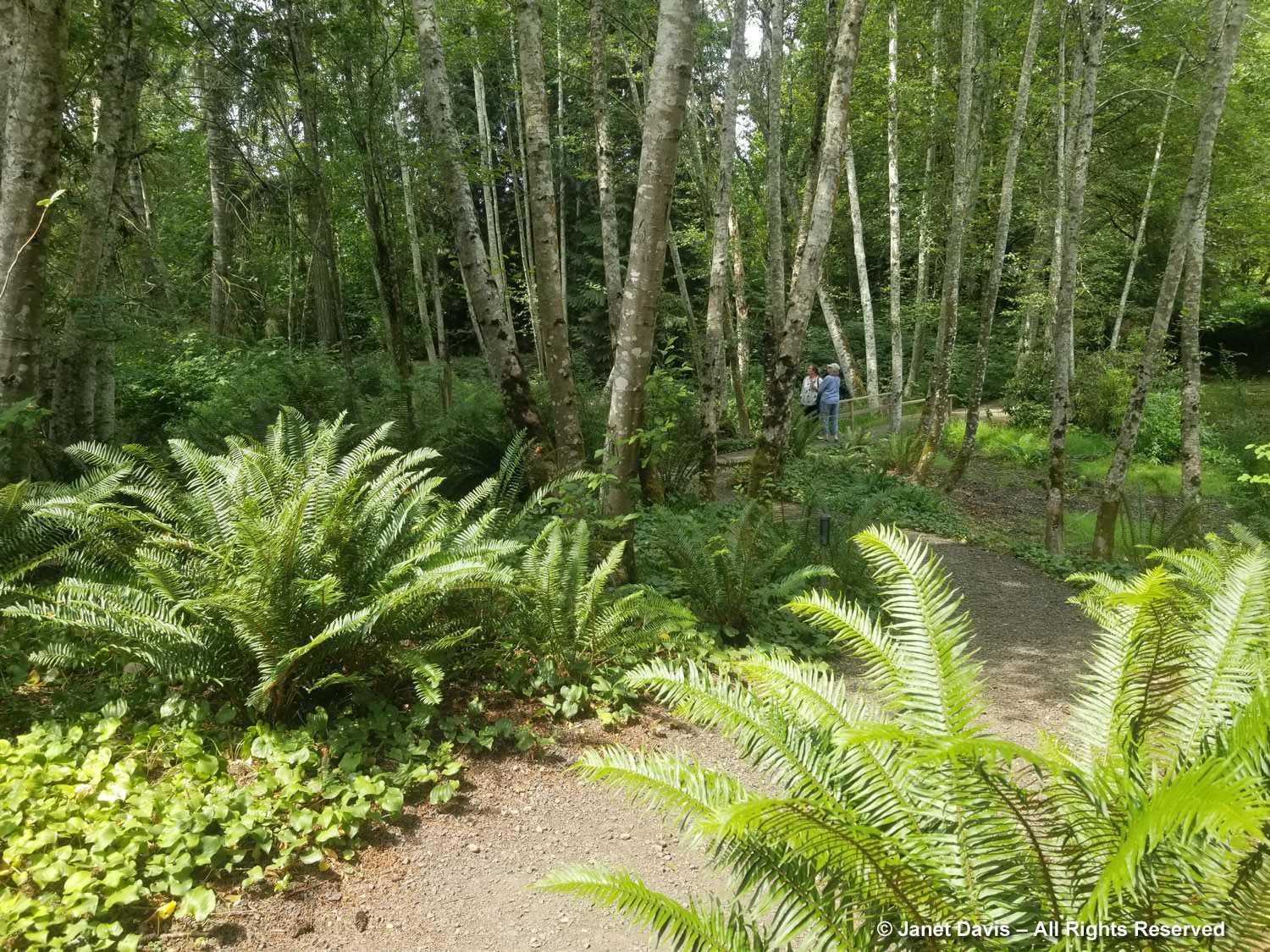
As I leave this garden, I spot a sign that reminds me of my youngest grandson, the “salamander-whisperer”.
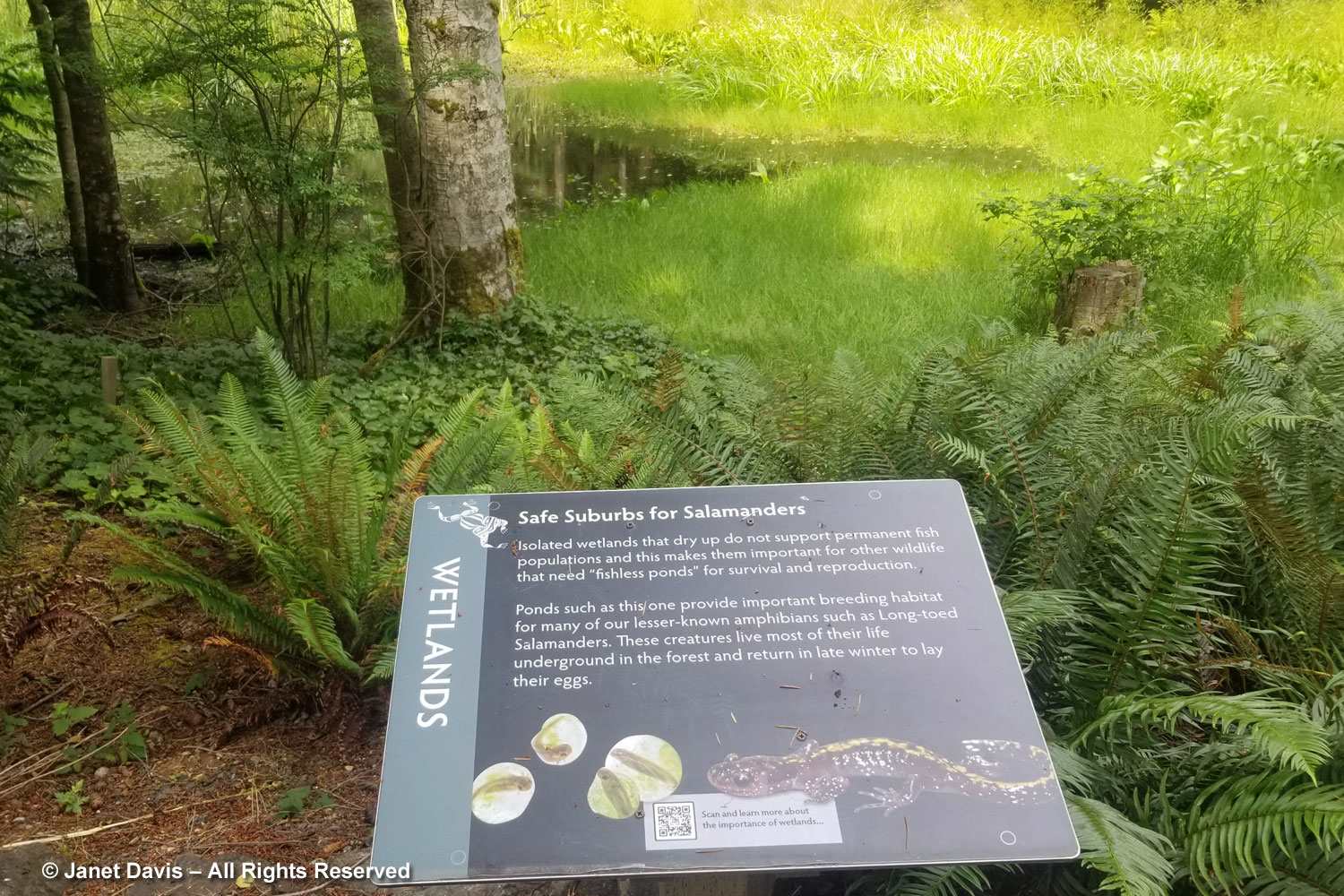
Between the parking lot and the Woodland Garden is a lovely container that needs its moment in the spotlight.
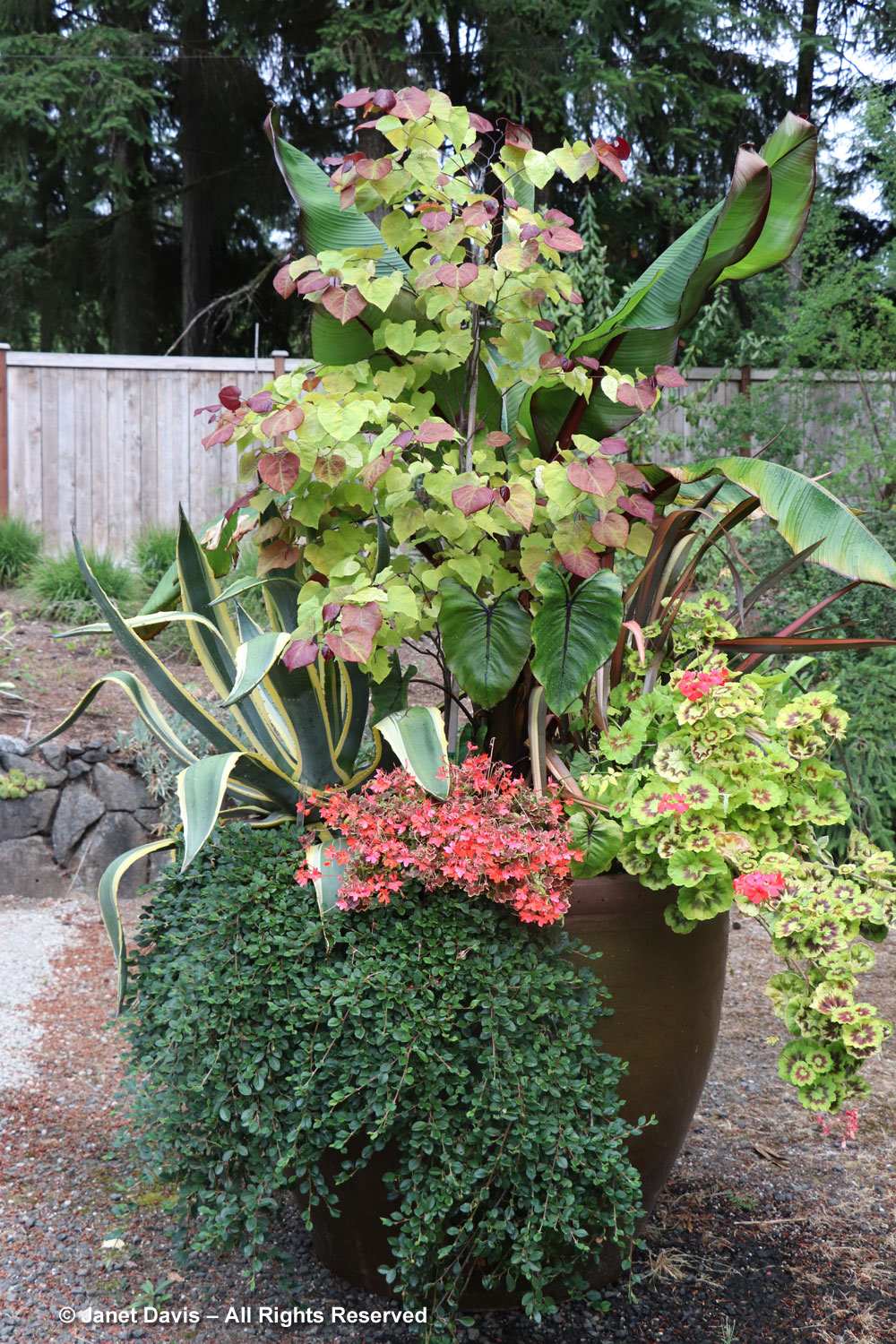
I take a few minutes to walk around Heronswood’s Gift Shop/Ticket Office….
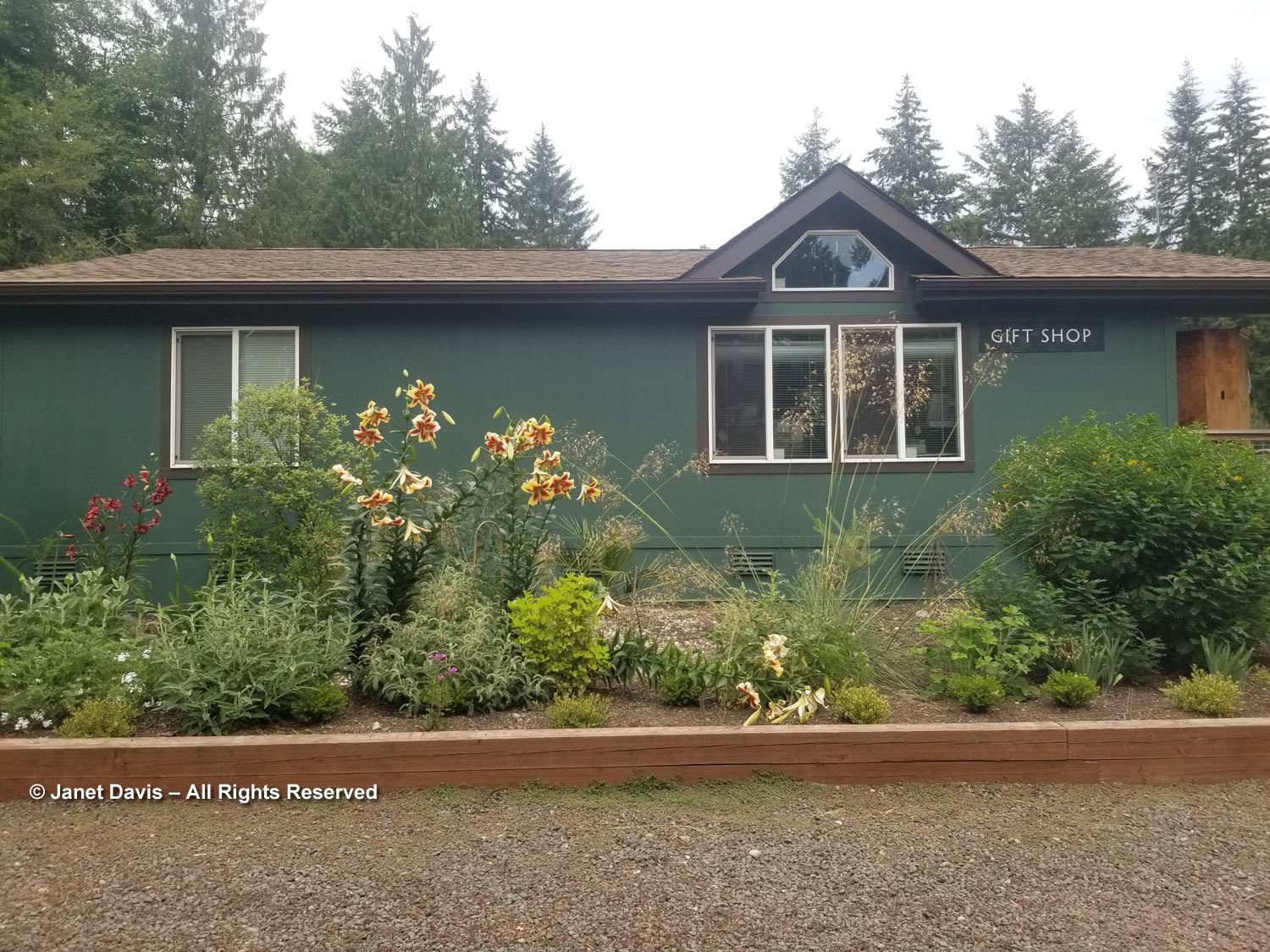
…. where the raised garden contains some treasures, including lovely Lilium ‘Zeba….
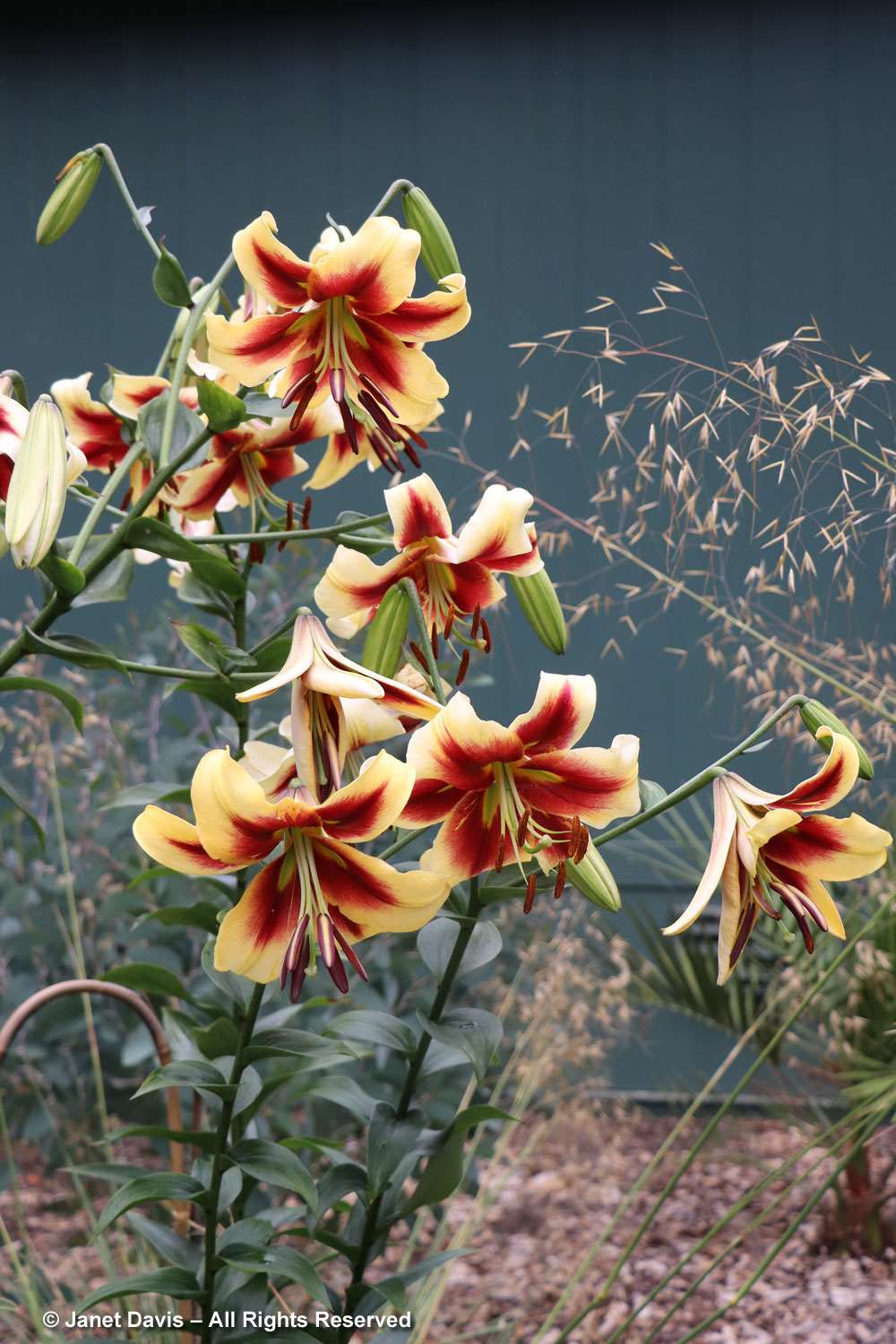
…. the mangave (Agave) ‘Mission to Mars’…
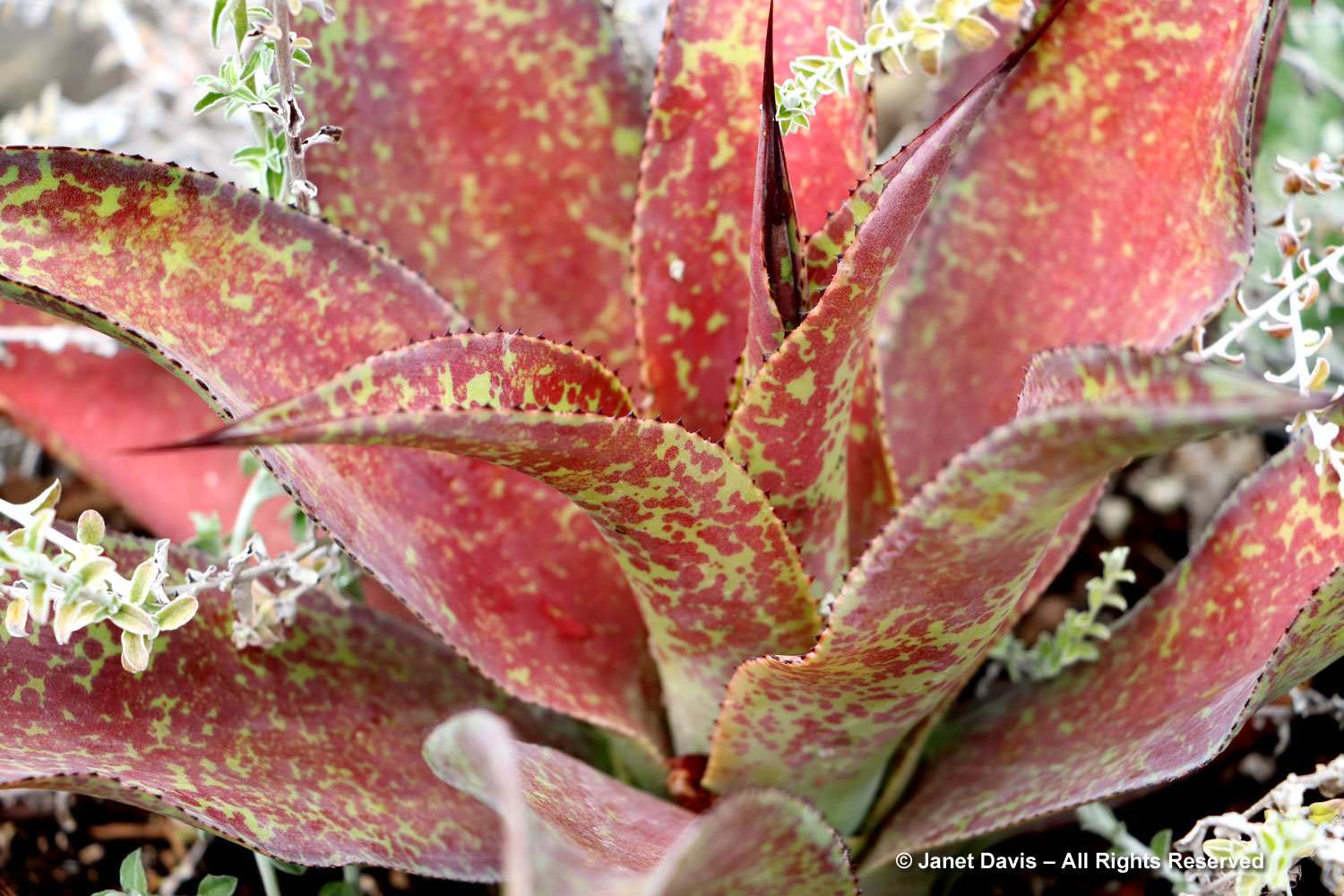
…. and Peruvian lily, Alstroemeria isabellana.
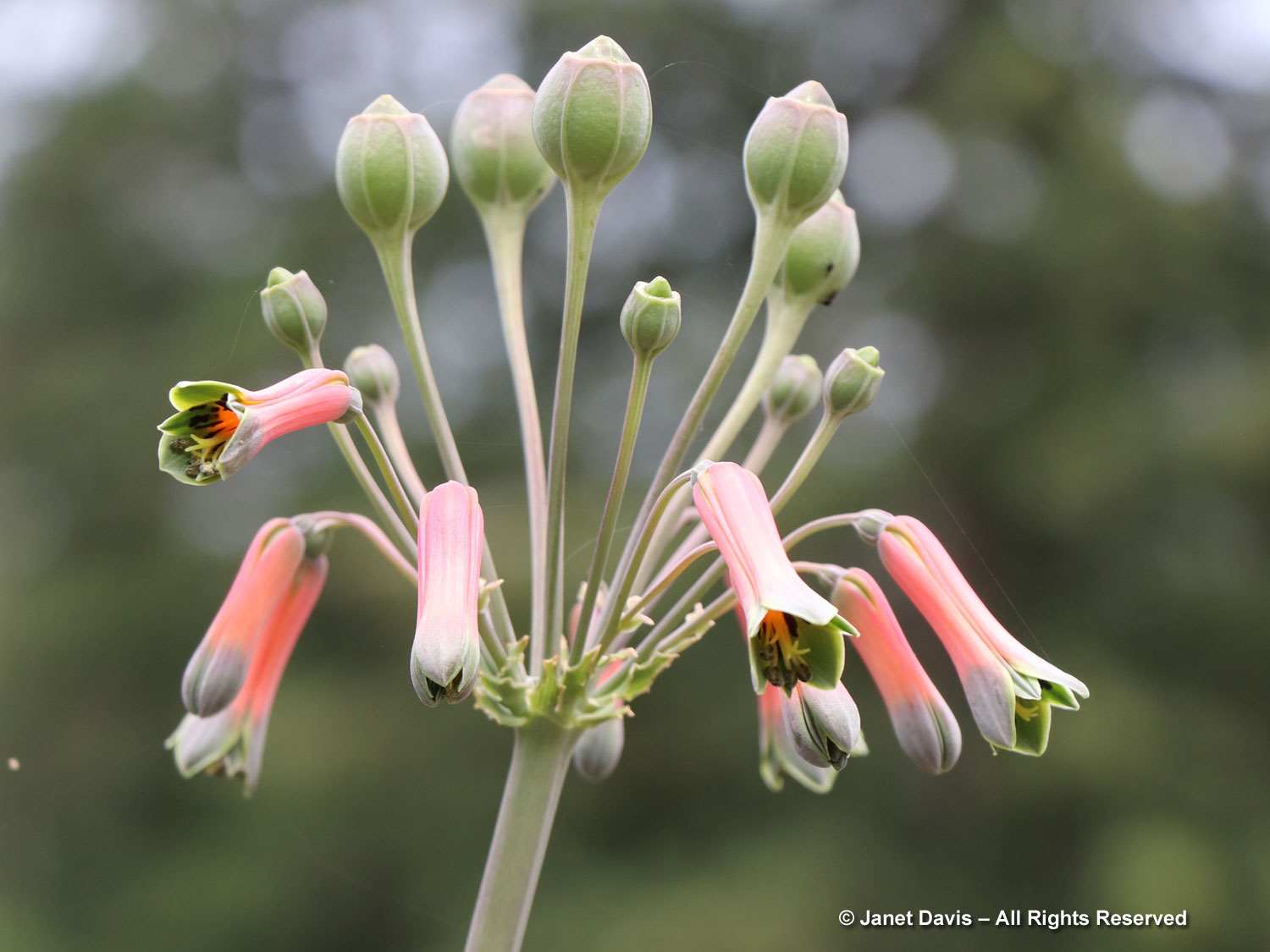
Heronswood’s director Dr. Ross Bayton, below, is particularly fond of another new space near the entrance that’s still being developed….
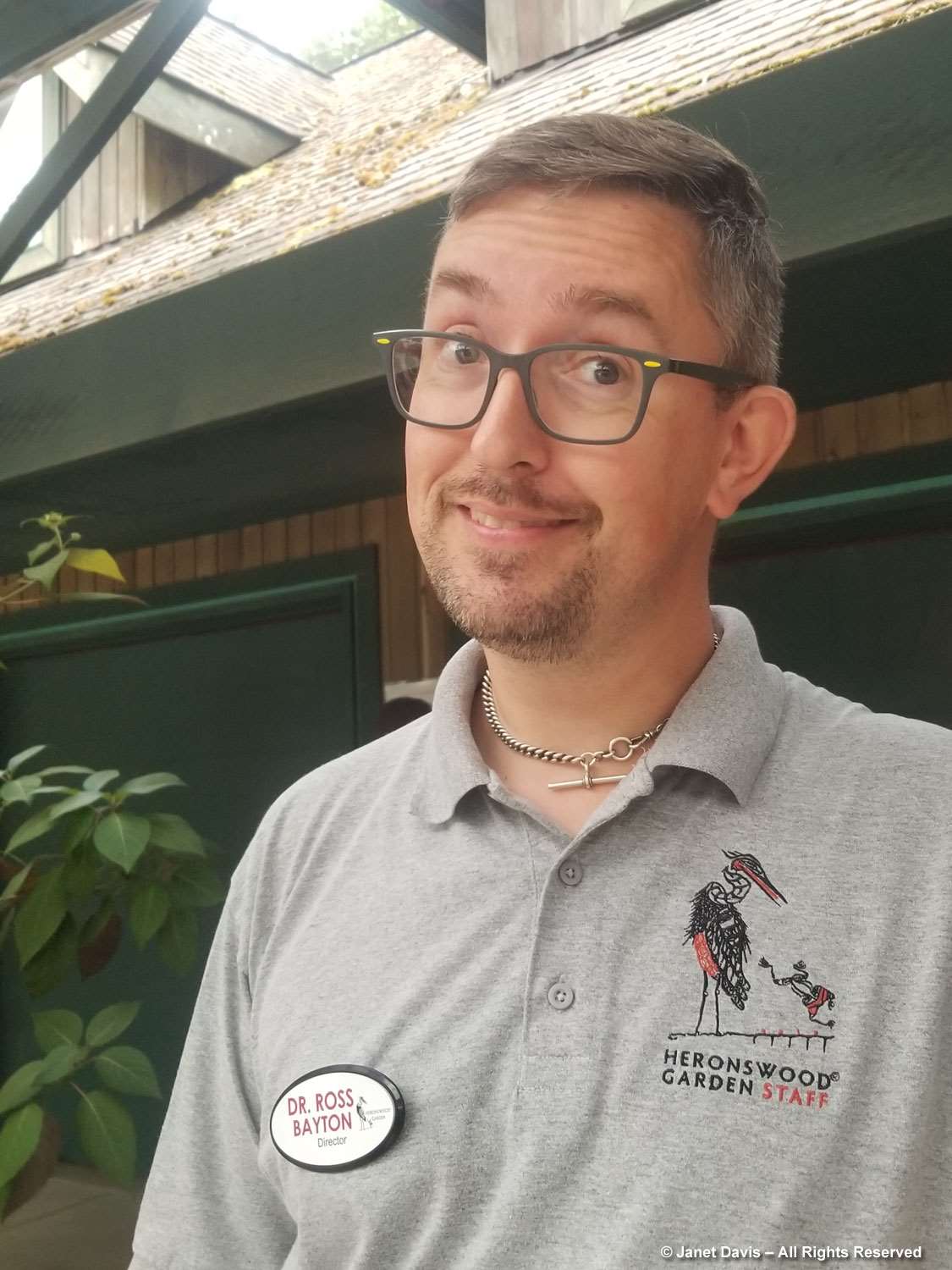
…. the Rock Garden. It includes “five rocky islands, each studded with miniature treasures that grow at high elevation. The garden currently showcases alpine plants from North America’s western mountains and southwestern deserts but will expand to include other regions plus Mediterranean landscapes.” The yellow plant is sundrops, Calylophus berlandieri.
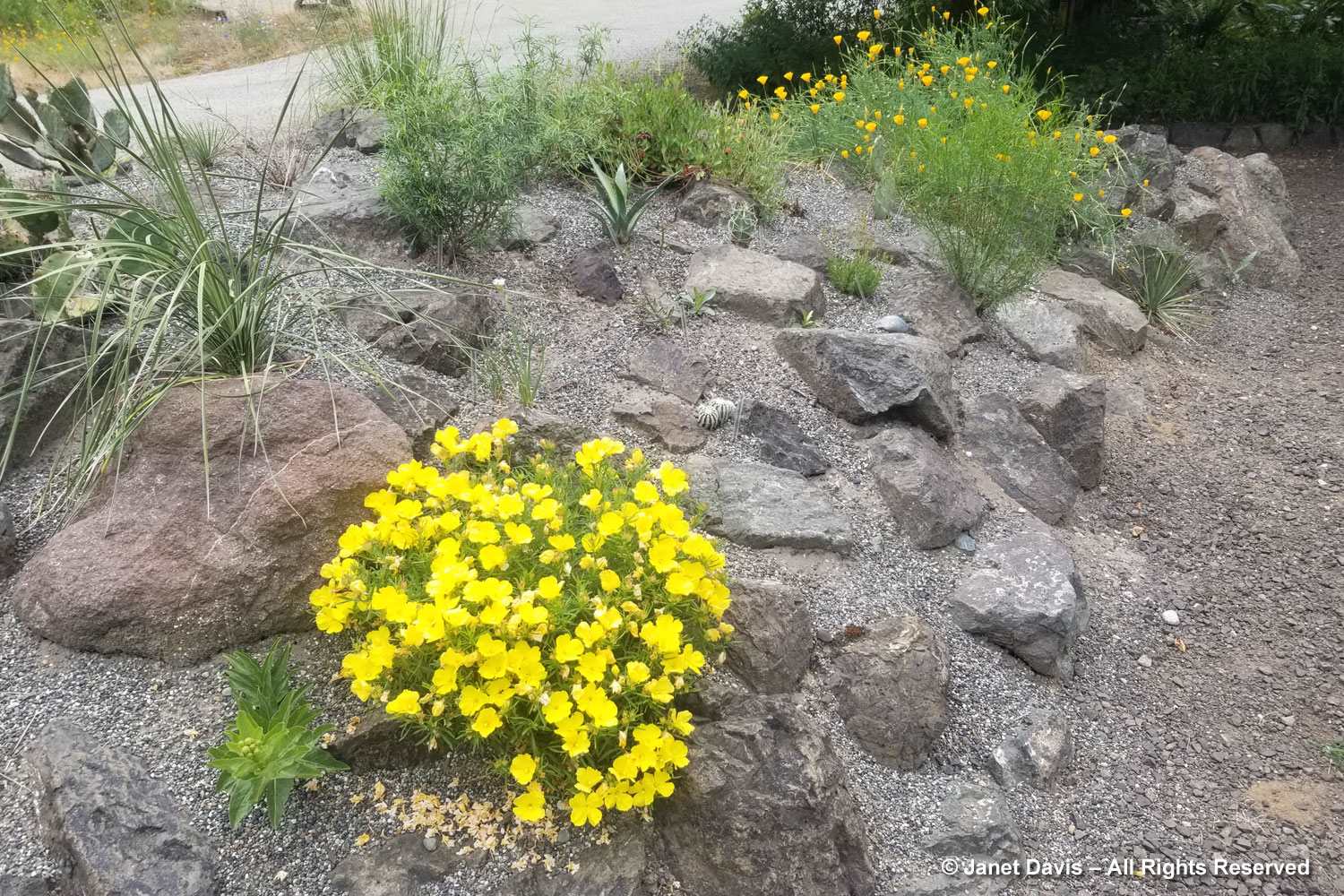
Included is a small bog devoted to carnivorous native plants like California pitcher plant, aka cobra lily, Darlingtonia californica….
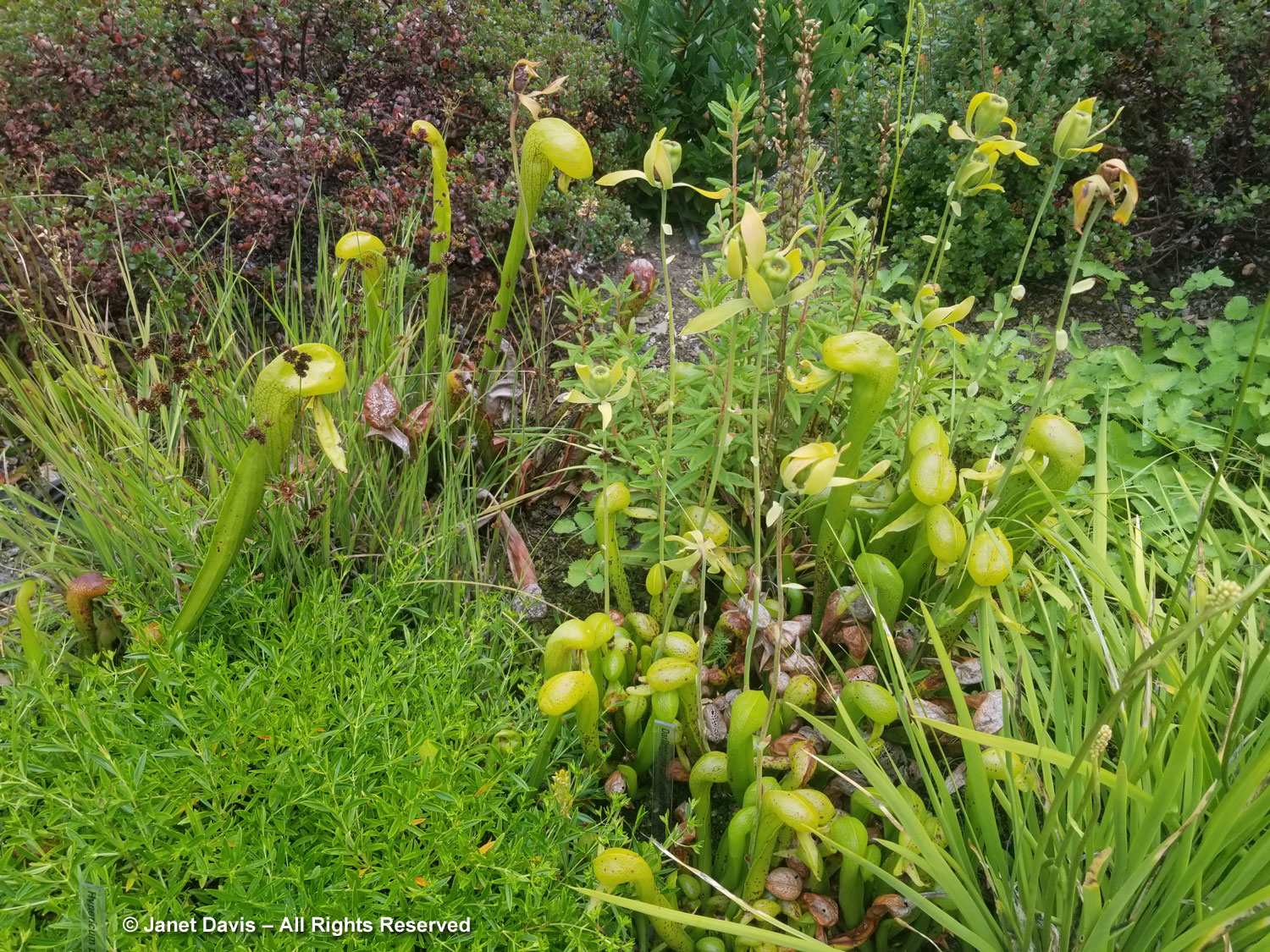
…. and western false asphodel, Triantha occidentalis, recently found to uptake nitrogen through insects that get trapped by its sticky stem hairs.
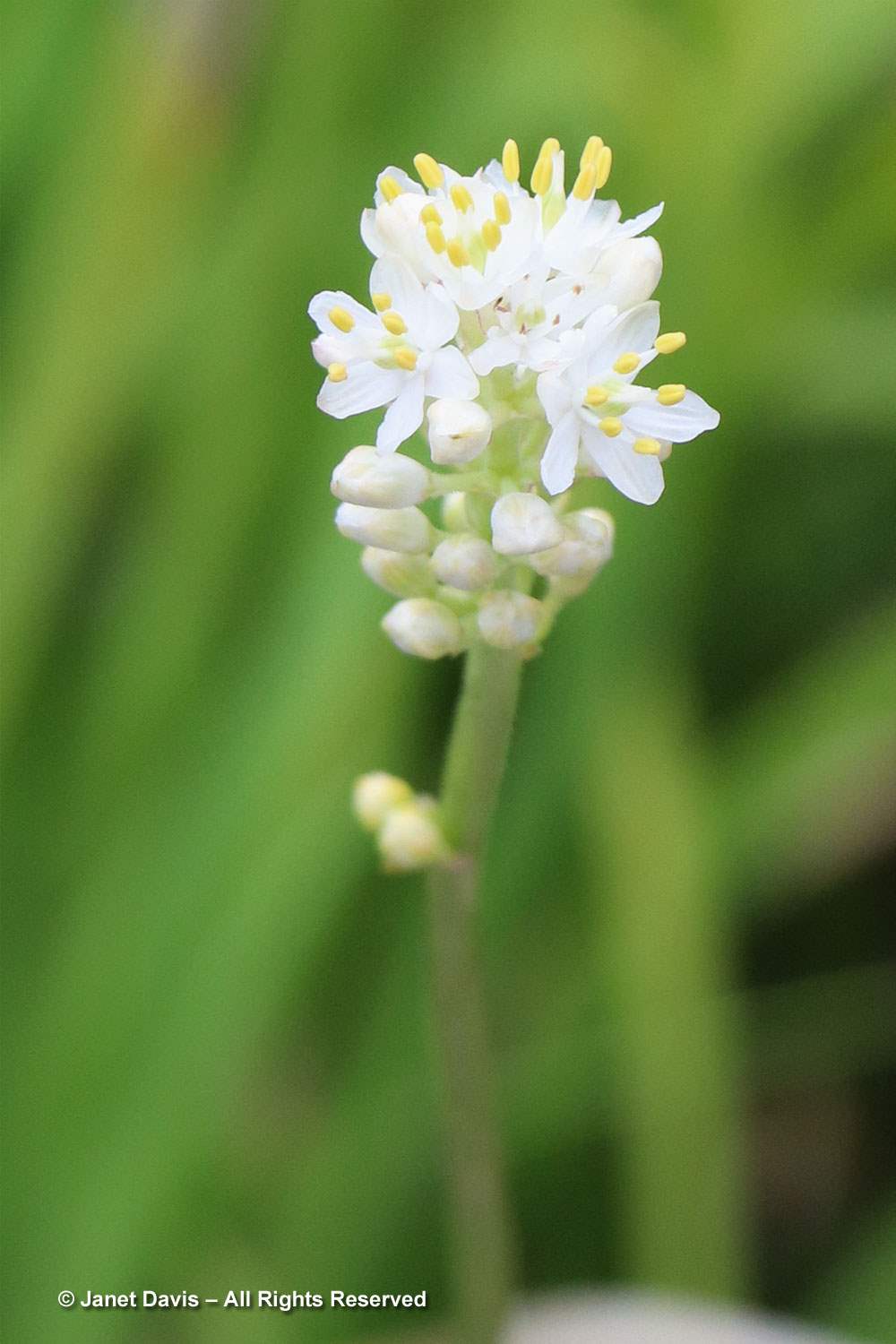
The Rock Garden has a poignant dedication sign.
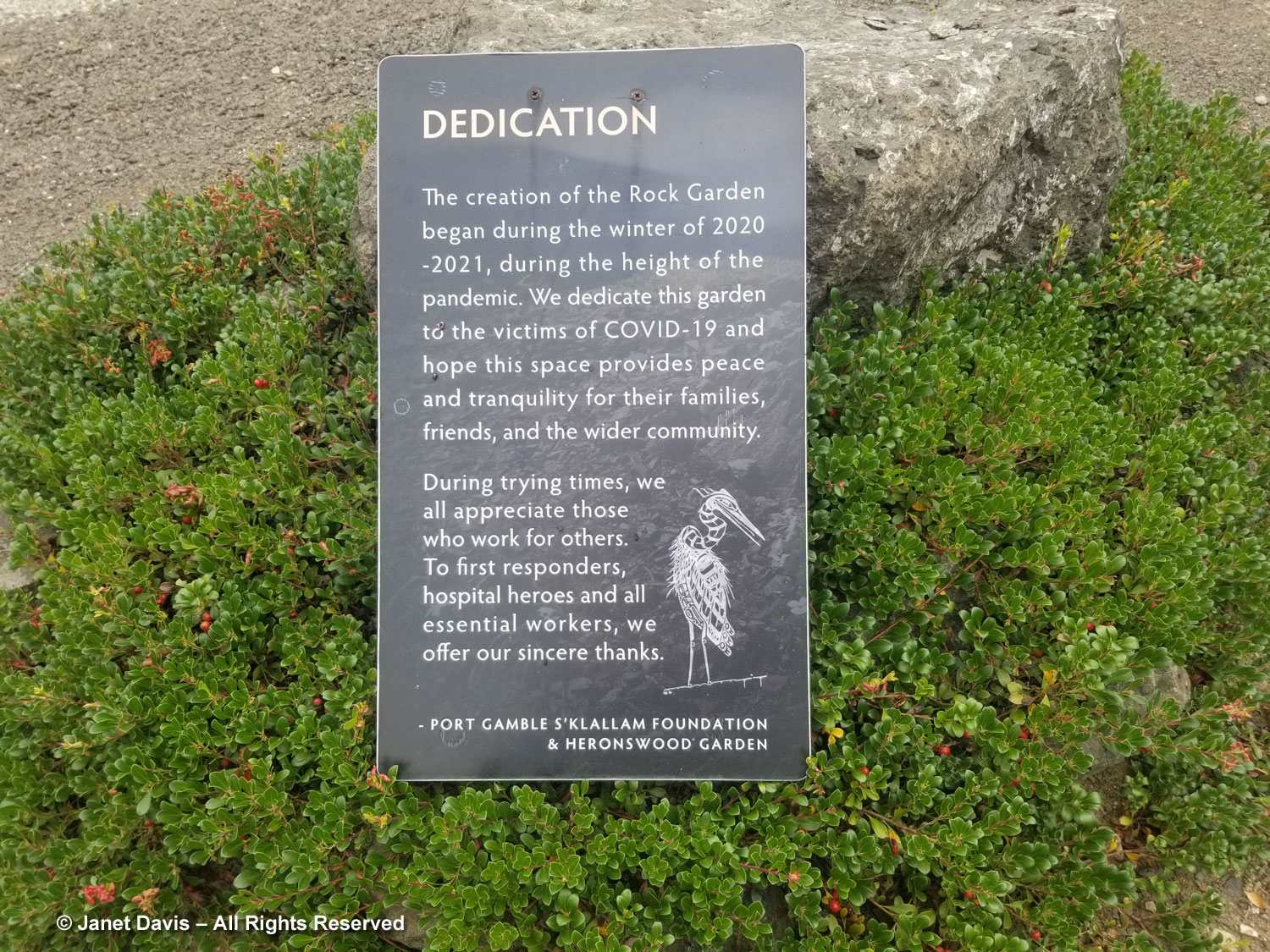
The time we’ve had at Heronswood has been generous – if not nearly enough to see all its treasures. But I’m so happy I got back after 19 years to see for myself that the garden is once again in excellent hands.

I’ve just been editing my photos from this garden, and so I enjoyed seeing all the various views that caught your eye, Janet. Thanks for sharing your history with this garden too.
Pam, thank you. It was such a treat to get back – would love to live closer. We’re heading out on a road trip next week until after Labour Day so I wanted to make sure I got some blogs done of my favourites. I can’t wait to see yours – we always find different views.
Oh my goodness…so many stunning views! And the Hydrangeas, Roses, and Lilies are lovely. So sorry I missed the Fling. I’ll have to take a trip over there someday…
Beth, I’m sorry you couldn’t make it – it was truly a wonderful experience. This garden is one to see for sure.
Thank you for this up to date viewing of this amazing garden. Every chance I get I try to see it and spend time there. Thank you for your photos and descriptions. Yes, you were lucky to see Riz!
Philip, how lucky that you can spend time at Heronswood on a regular basis. What I would give to be back in Vancouver again for a spell. Then I remember the rain….
I am glad you got to see so much of the garden. Between socializing with the other flingers and with Riz and Ross, I ended up running through quite a bit of this garden to see what I could see. I had a grand time here and loved the little glimpses I got. Your photographs encourage me to head back soon, maybe in spring to see what changes in season bring.
A return to Heronswood in spring! Can I come, Jerry?
I enjoyed this post so much. Fantastic photos, insightful writing, and lots of plant IDs. Thank you for the detailed tour.
Thanks for the kind words, Gerhard. We saw a lot of great gardens – I wanted to make sure I researched Heronswood well (but I’m glad I read yours and got that schizophragma species name corrected!)